Soular

The future of clean energy doesn’t rest on solar panels and storage alone.
Recurrent Energy’s Scott Leonard proves that relationships with the landowners are just as key.
P56


The future of clean energy doesn’t rest on solar panels and storage alone.
Recurrent Energy’s Scott Leonard proves that relationships with the landowners are just as key.
P56

From design visualization technology to construction management—tomorrow’s spaces need intelligent solutions. We are proud to be providing Miami International Airport with program management services. At CBRE, we connect all the dots, so you can realize anything.
cbre.com

“Well, I’m officially the editor for ABQ!”
That was the text I eagerly sent to my parents on November 16, 2018, just a week after I was hired to join the creative team at Guerrero Media. Two weeks later, the office was abuzz with designers, editors, and photographers typing, scribbling, and examining as everyone worked to send the next issues to the printer. It was overwhelming to watch. I was Kelly green in terms of experience and wasn’t sure what I was supposed to be doing right then.
The senior editor handed me a thick stack of pages and asked if I would “initial” for him while he focused on another pressing matter. My stomach dropped. “You want me to sign off on all of this?” I asked. It was a raw version of the magazine, hundreds of pages I had never seen before. He nodded. I was taking over, after all.
With plenty of hesitation, I hunched over my desk and got to work. The cover was a stunning shot of Paul Sears, director of facilities operations for CBS Studios, on the set of The Late Show with Stephen Colbert, which was awash in brilliant blues. Cass Davis, the photo editor who soon became a great friend, had taken it. I signed “MKD” in the top corner and thought, “This is so cool to be a part of all this.”
That was the start of a new era for me, and now, 5 years and 20 issues later, it’s a new era for ABQ. You hold in your hands the final print issue of this storied brand that has existed since 2006, and is Guerrero’s oldest brand. After 18 years of print production, we’re trading in the hard copies to expand our reach and embrace a fully online future. Readers can now access brand new articles in real time, outfitted with digital versions of the gorgeous designs you’re used to seeing on paper. It’s an evolved approach to bringing stories to life.
The hundreds of executives I’ve spoken with have taught me so much about the construction industry, namely the ways that builders can utilize sustainable and technological methods to deliver the cleanest, safest, cost-effective projects. From robots to renewable energy and beyond, we’ve featured stories about these topics in every single issue, so it’s fitting that our last cover depicts the 350 MW Crimson Energy Storage site in Riverside County, California, made possible by Recurrent Energy and its associate director of real estate, Scott Leonard.
Leonard’s personal approach to securing and developing land for projects like these is rooted in forming relationships with landowners, which leads to a collaborative effort for sustainability and generating revenue for the local community. He demonstrates what ABQ has always sought to promote: the leaders who help build a better world. And now, you’ll meet thousands more online.
When you finish reading, you really ought to keep this magazine. It’s officially a keepsake.
Hope to see you on the web,

◀ On the cover is Recurrent Energy’s 350 MW Crimson Energy Storage Project in Riverside County, California, in its construction phase. It will generate $19 million in long-term revenue for the county for government services, road upgrades, schools, local infrastructure projects, and more.
Melaina K. de la Cruz Managing Editor
Blake Jennings steers the expansion of the family business while ensuring it maintains its famous quality P12
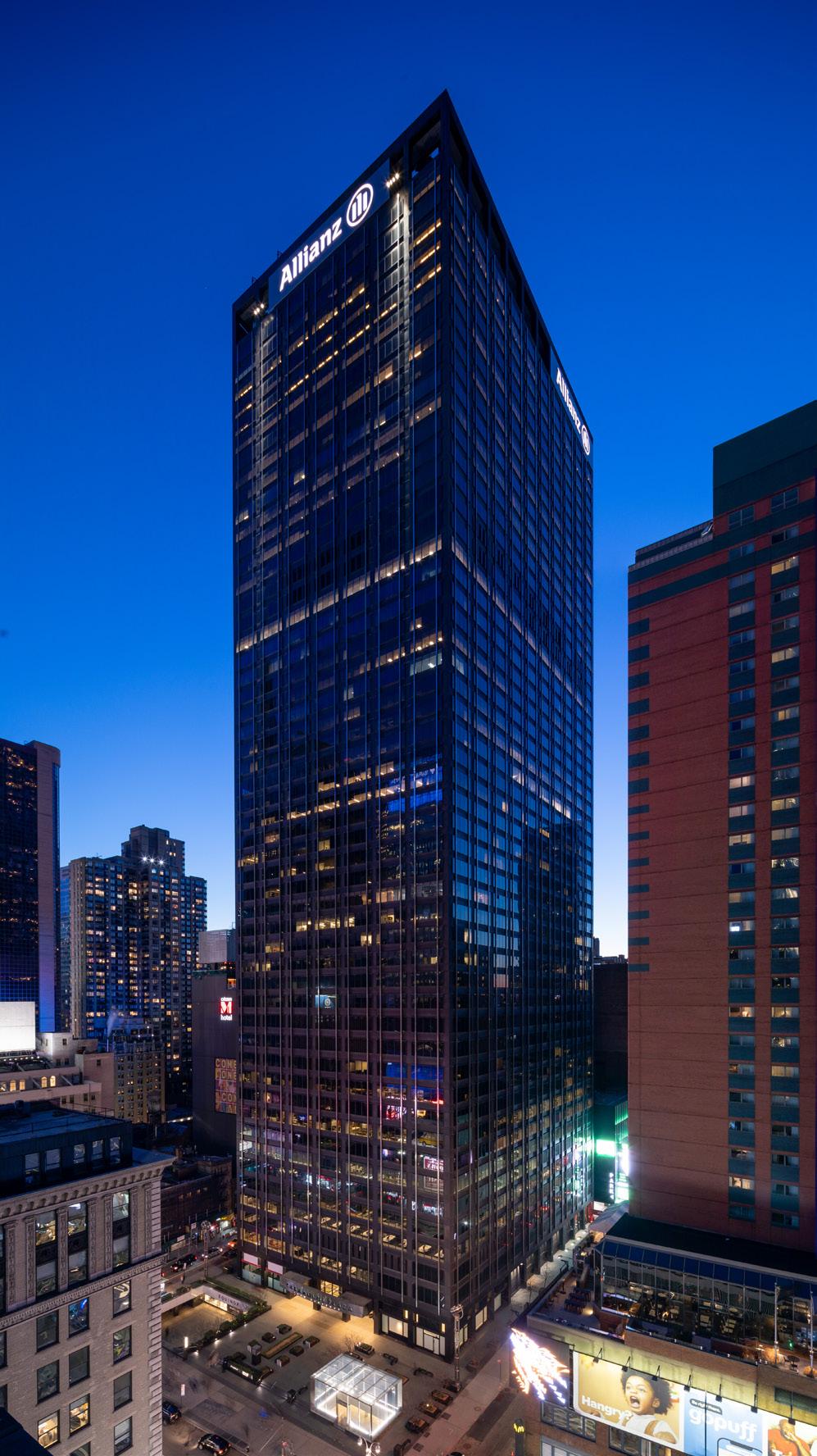
Joe Szabo leverages 35 years of property management expertise to keep Paramount Group well ahead of its sustainability goals P40
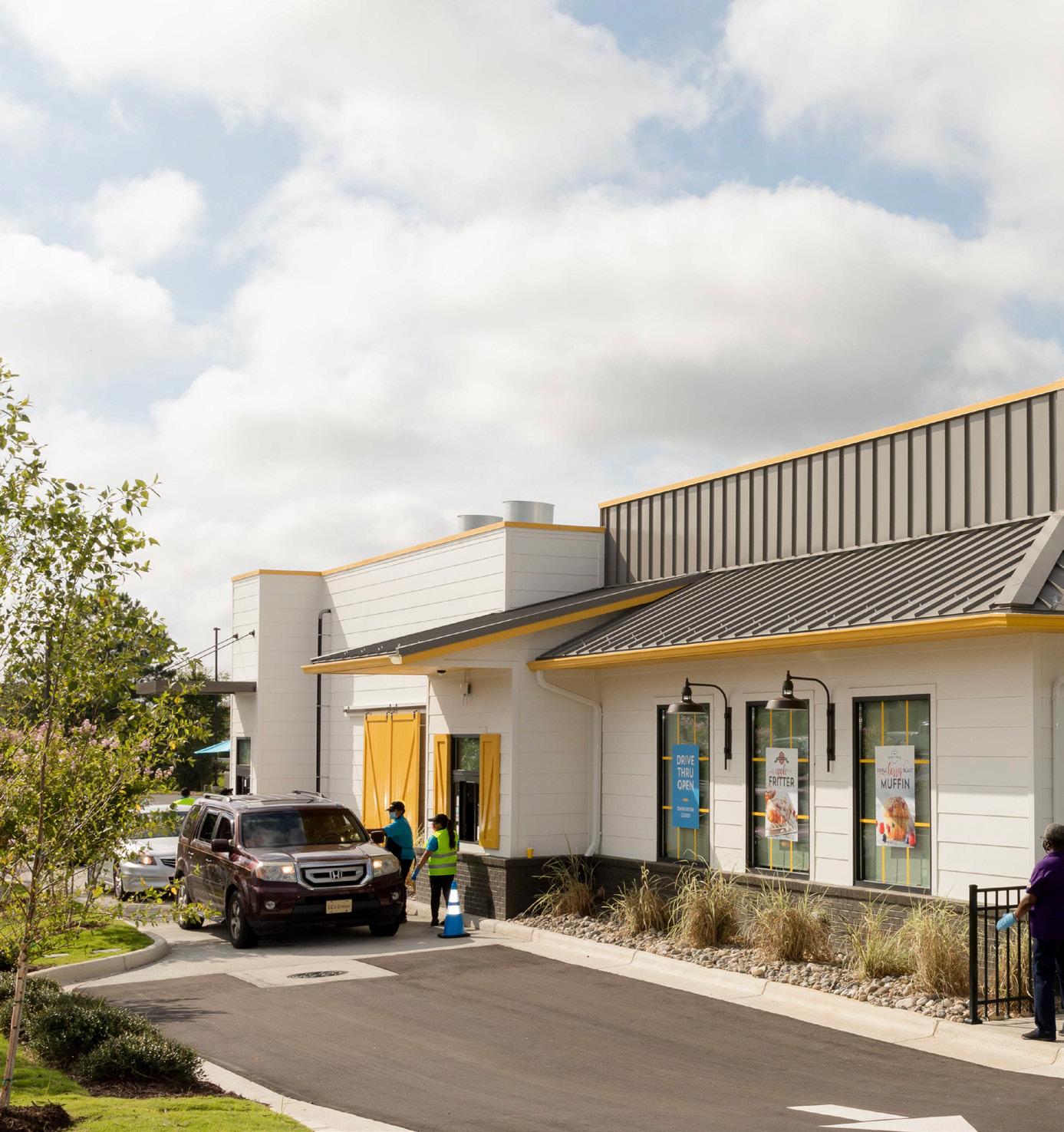

Eric Hall lives out his childhood dream of constructing safe, exciting environments at Zoo Atlanta P70
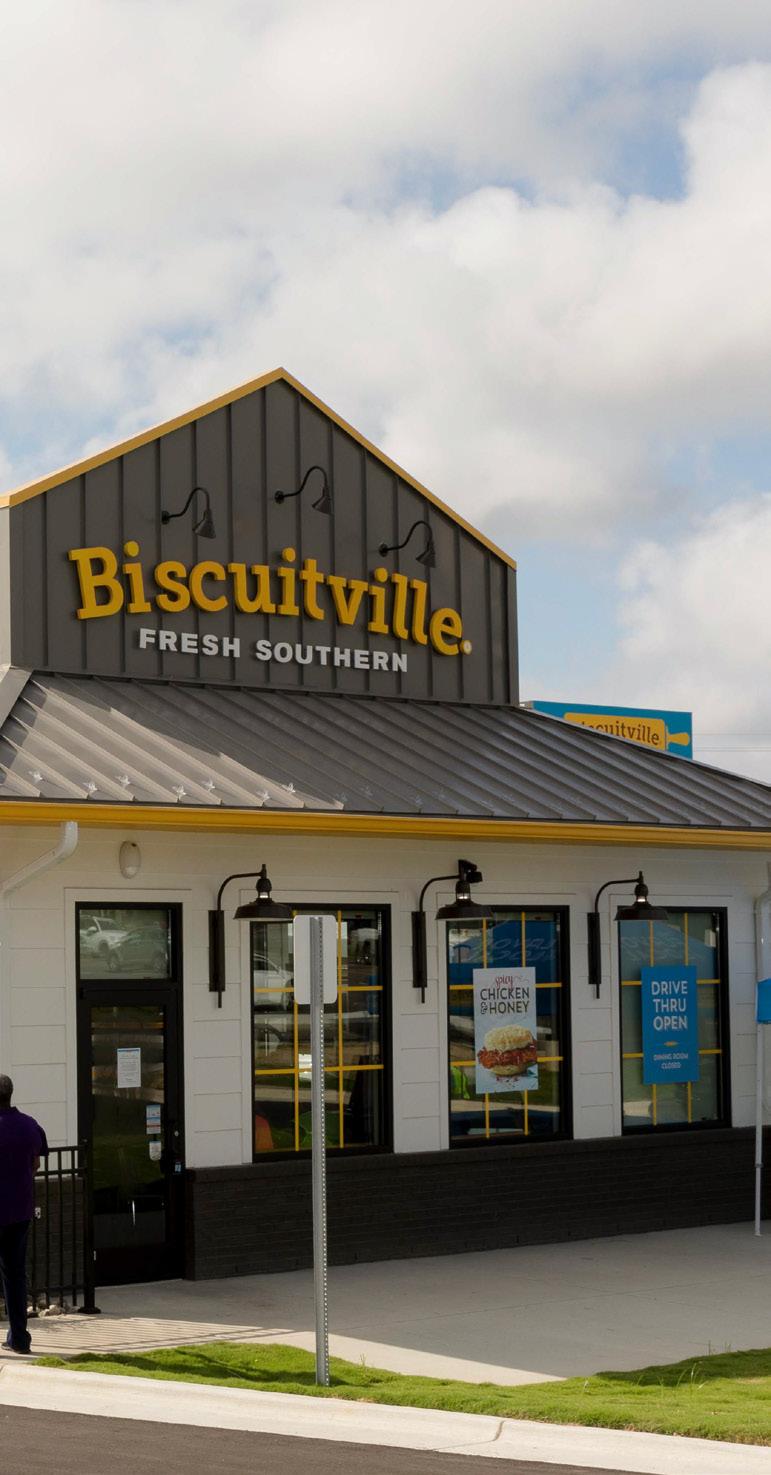
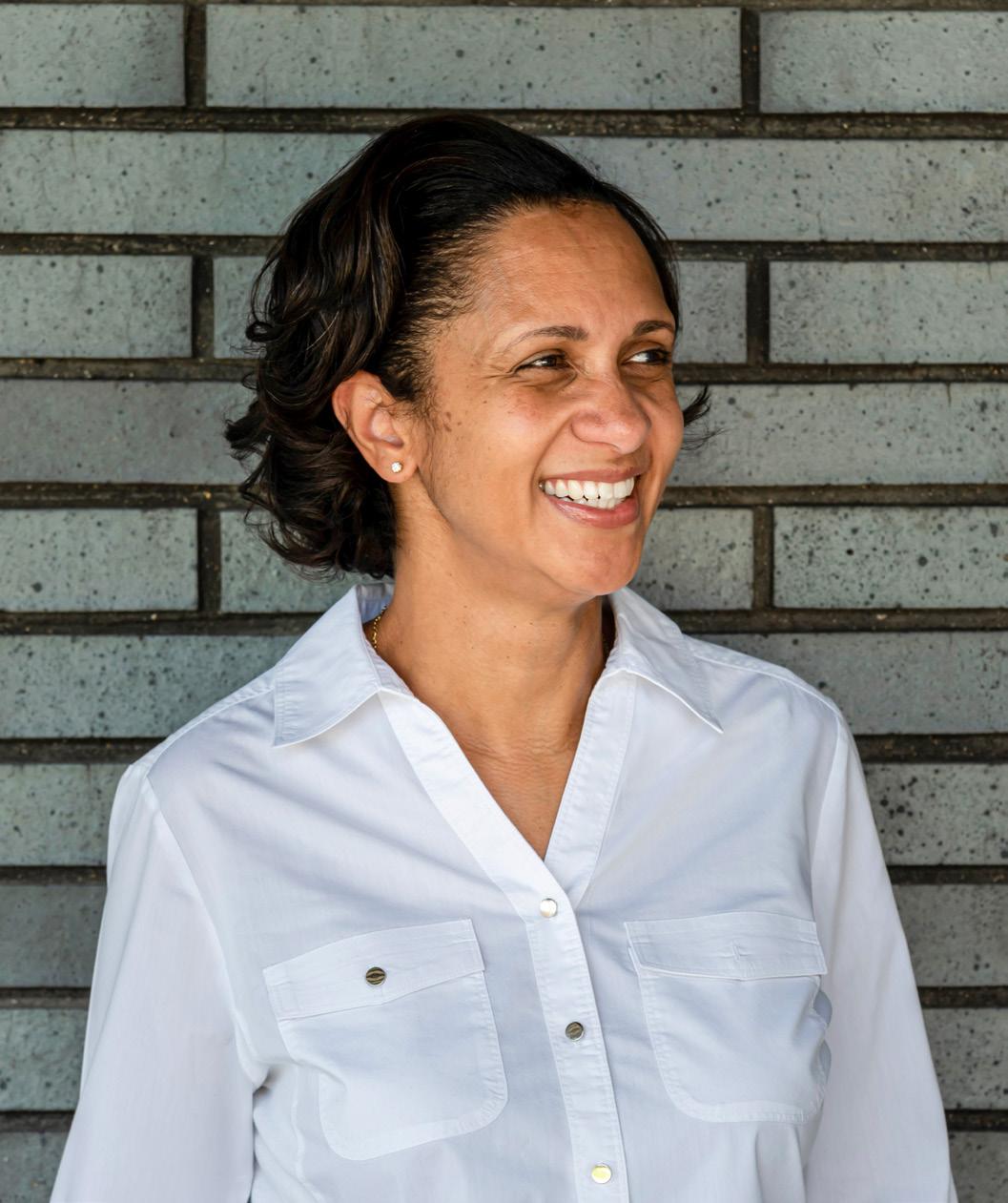
Anzilla Gilmore aims to be the support system and example for younger generations that she didn’t have P92

Global Don Roberts and his team devise ways to make the company’s brands more accessible to customers P88
Outlining the strategies, advancements, and new ways of thinking that will renovate the workforce and project delivery

Cathie Attebery, Amy Fuller-Lyman, and Erin Taubitz share their innovative approaches to arctic temps and remote locations at Alaska Airlines
By Billy Yost

Permafrost, container housing, and the Alaska Department of Transportation. This is anything but a typical airline story, because Alaska Airlines is anything but a typical airline.
Maybe that’s why Cathie Attebery, Amy Fuller-Lyman, and Erin Taubitz found their way to the company. The three women excel at finding creative solutions for challenges the rest of the airline industry probably can’t quite fathom.
Attebery, director of airport development at Alaska, came to the company after two years at Boeing. Prior to that, she owned her own construction company for nearly a decade. She’s a natural builder (and a confessed avid tinkerer in her spare time), and the unique responsibilities of her role have kept her energized and engaged since coming aboard.
Fuller-Lyman, the resident veteran of the group with over 22 years at Alaska Airlines, serves as a liaison of sorts between the real estate team and the airport entity itself. She’s also on the front lines of land-lease deals with the State of Alaska.
Taubitz, who serves under Attebery as airport design and construction manager, came to the airline after gaining experience in both public and private sector roles as an architect and project manager. Her role is a perfect mix of driving bottom-line profits while also tackling projects almost no one else would ever see in the field.
Attebery succinctly sums up just why a job at Alaska Airlines isn’t like any other.
“The unique thing about this airline is that there are environmental- and community-related components, like the fact that we often provide lifesaving services to remote communities,” Attebery explains. “We consistently have the opportunity to explore innovation when dealing with climate change. This is in addition to our typical airline responsibilities.”
One of the team’s truly unique projects can be found in Yakutat, Alaska, which has a population of 597. Fuller-Lyman’s team purchased an aircraft hangar from the World War II era. It’s ideal for Alaska Airlines storage, but it’s far more space than what’s needed for equipment storage.
“The more we looked into it, the more we thought there might be an opportunity to do something unique here,”
“We consistently have the opportunity to explore innovation when dealing with climate change. This is in addition to our typical airline responsibilities.”
—Cathie Attebery
Fuller-Lyman explains. “Housing is always an issue for us in these remote locations, so what if we created some kind of unconventional lodging so when our corporate people are on-site, they have a place to stay?”
Attebery says the project has been deemed “the Hangar of Possibilities” because of just how many different ideas might be put into action. Container housing—small homes created out of shipping containers—might be the perfect solution for on-site housing within the hangar itself.
Complicated housing needs are always on FullerLyman’s plate. When there was turnover in the small town of Kotzebue, Alaska, there was no lodging to be had for the new manager.
“So, Cathie’s team shipped a prefab house kit,” Fuller-Lyman explains. “It was built on-site and now we own and manage it.”
When it comes to navigating the otherworldly arctic climates of the region, Taubitz has her hands full. Climate change has presented huge challenges that can lead to the melting of permafrost and the destabilization of civil engineering and apron weight stabilities.
“The question comes down to how do we keep permafrost from melting without putting large quantities of manmade material within the earth, which would be the typical technological application,” Attebery says.
Alaska Airlines is partnering with research scientists to test a biostable synthetic insulation application that won’t adversely affect the environment and absorbs carbon during its fabrication.
“With temperatures rising, we’re experiencing new problems that, historically, we’ve never encountered,” Taubitz explains. “But we’re not just going to start ripping up the earth. We’re intent on being thoughtful about the lifespan of our projects and what we’re putting into the ground.”
Even on the more traditional front, Alaska Airlines is finding ways to stay ahead of its competition.
Attebery is grateful to be a part of a team that is regularly creating in-house innovation, like the new bag tag station that will allow guests to quickly print a bag tag, pay for a bag, and add a bag with ease. The goal is to simplify the airport lobby experience and reduce stress for both employees and guests. This new product, along with others being developed by e-commerce teams, will help reduce congestion in airport lobbies.
“The fact that no one else in the industry has been able to solve this challenge with an internally developed product that connects all of their technologies together is pretty exciting,” Attebery says.
“I think you’ll see the difference in our airport lobbies because our lobbies are not going to be congested like every other airline,” she adds. “We’ll continue deploying some new technologies that we’re very excited about. I think some of these projects have the potential to change the aviation industry and the overall airport experience for our passengers.”
Consolidated Contracting & Engineering LLC is proud to partner with Alaska Airlines and their facilities project management team. We have worked with Cathie Attebery and Erin Taubitz for many years improving and expanding Alaska’s facilities to better serve their employees and clients. Cathie and Erin’s dedication to improving the atmosphere and safety of the workplace sets them apart from the norm. CCE is proud to support this recognition of their continued contributions to Alaska Airlines.
When Alaska Airlines needed a construction partner for their LAX Terminal 6 Redevelopment Project, they turned to PCL Construction , a team well-versed in navigating complex aviation projects in an active facility.
Alaska’s director of airport development, Cathie Attebery, sets the tone for our work together with a focus on Alaska’s passengers at the forefront. PCL is managing the construction of the project requiring proactive coordination of stakeholder needs to preserve passenger experience and address potential schedule challenges. PCL and Alaska are working together to improve efficiency and functionality, enhance operations, balance capacity with demand, and elevate passenger experience.





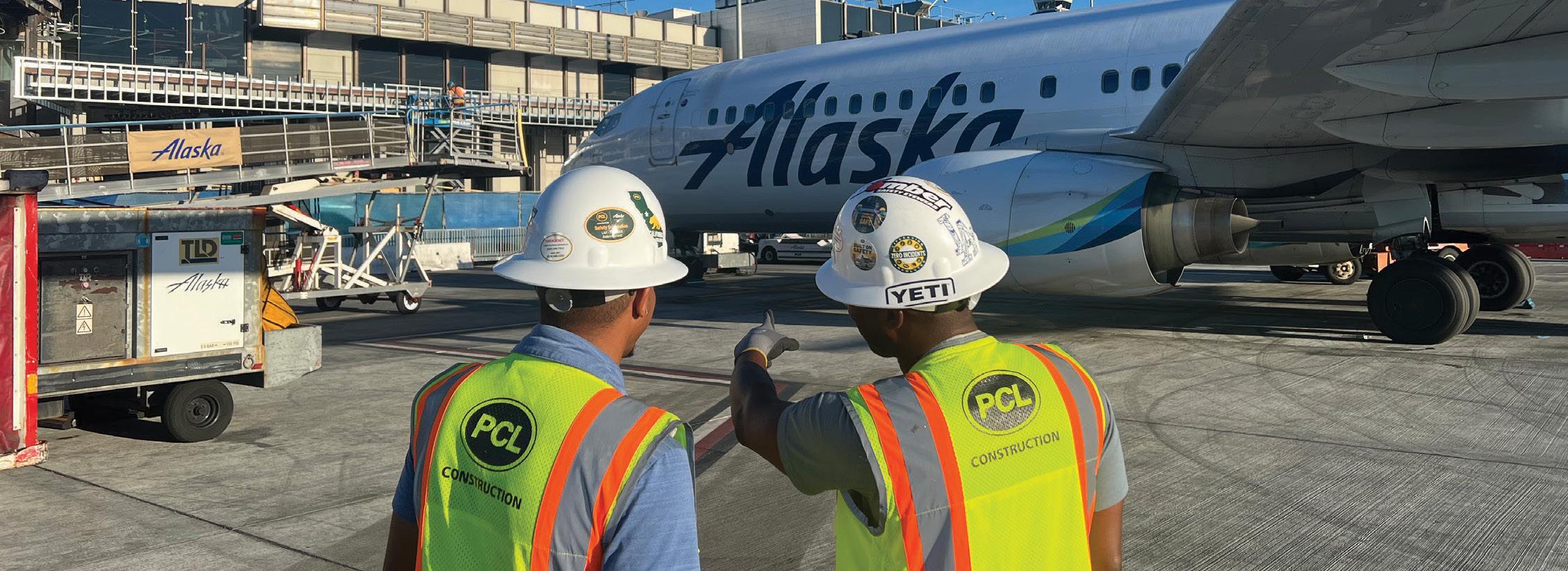
Chief Development Officer Blake Jennings steers the expansion of the family business while working to ensure it maintains the quality it’s known for
By Noah Johnson
Biscuitville’s exterior design is inspired by the look of a Southern barn with fixtures like gooseneck lights, large barn doors, and a tin roof.

Blake Jennings has worked at every level of Biscuitville, a Greensboro, North Carolina-based family business that got its start under his grandfather’s leadership more than 50 years ago. After his father took the reins, it continued to expand, and Jennings began working there in high school. He gained early insight into its operations through various roles in the company’s restaurants, warehouses, and corporate office.
“I got to see what a fully integrated, self-managed business looks like,” Jennings says. “One thing about Biscuitville compared to others is we do everything ourselves. We have our own distribution facility with more than 15 trucks, and we service our own stores. On the real estate side we self-develop and own our properties. We are really selective in our use of third parties.”
Today, as Biscuitville’s chief development officer, Jennings oversees all aspects of real estate and growth
for the company. After college, however, he struck out on his own, parting ways with the family business to chart his own path. Realizing he had a passion for real estate, he wanted to get more hands-on experience in the industry.
At first it wasn’t easy. When Jennings entered the job market, real estate markets were still reeling from the 2008 recession, and he struggled to find work. Finally, he got the opportunity to work in Washington, DC, at First Potomac.
“They owned a lot of government buildings in the DC area [in] Richmond and Maryland, and I got to learn the back-end financial workings of real estate, working with banks and publicly traded equity partners buying and selling assets,” he says.
While he gained valuable experience, Jennings was set on pursuing a career in real estate development. He’d just taken the GMAT and was considering getting

his MBA when he had lunch with someone who worked for the largest developer in Raleigh, North Carolina. Jennings was offered a job there a week later.
He went on to help build student housing and high-rise buildings in the city, managing deals from inception to completion. That experience, he says, helped give him the tools he’d need to be successful in his current role. There are differences, Jennings notes: in his previous role, he was working on one or two projects at a time over a duration of three years.
“At Biscuitville, we’re running 15 deals at once and the duration is 12 months,” he explains.
“However, you still run into the same issues with civil engineers and banks, dealing with permitting at the county and coordinating with all the partners involved with transactions.”
It’s a fast pace, and the expertise Jennings gained in the development sector before returning to Biscuitville in 2018 has allowed him to spearhead initiatives that will help the business evolve.
One of those initiatives involves implementing the company’s first drive-through-only restaurant, a move that other quick-service restaurants have also made in response to consumer preferences during the COVID-19 pandemic. Orders at drive-throughs grew by 20 percent between
“One thing about Biscuitville compared to others is we do everything ourselves. . . . We are really selective in our use of third parties.”
February 2020 and February 2022, according to the NPD Group. And even in the aftermath of pandemic restrictions, drive-through sales made up 75 percent of all fast-food sales.
For Jennings, the drive-through-only prototype is part of a larger effort to deemphasize the development of large dine-in restaurant models. In fact, he projects dine-in traffic will only make up about 20 percent of its business in the future. After conducting studies and running tests, he and his team worked to fine-tune dining rooms to enhance customer experience and modify existing prototypes to save costs and optimize labor. As they eye expansion, they’re also using data to figure out the best locations to expand to.
“My site selection process has evolved to be both art and science. Using customer and economic data, site visits, and a healthy dose of personal experience, I’m able to identify the best locations for our brand to thrive,” Jennings says.
When Jennings first returned to Biscuitville, it had only built two new units in the past decade. Today, it has 75 locations, with plans to expand its reach throughout the southeast and eventually compete on a national level.
Amidst this expansion, Jennings makes sure to support his team, which is composed of a real estate manager, project managers, and a construction manager. “I play a high-level
strategy role and support my team members to execute it,” he says. “I really depend on my team. It’s about quality of life for me. I don’t want to have to do other people’s jobs and I don’t want them to have to do that either.”
Biscuitville has always taken the quality of life of its employees seriously. In 1982, it started closing restaurants at 2 p.m., a philosophy the business calls “life after two.” Jennings says, “That work/life balance is very important, especially in competitive hiring environments. It provides a fantastic employee base who provide an exceptional level of service at our restaurants.”
In the future, Jennings would like to see the brand “grow as large as it can be safely.” The “safely” part is important because Biscuitville is a centralized company and manages all aspects of the business rather than depending on franchisees.
“I’d love to see us hit the hundred-location mark in the next three years,” he says. We’re still a pretty small brand, only operating in three states [North Carolina, Virginia, and South Carolina], so I look forward to having more people get to know us.”
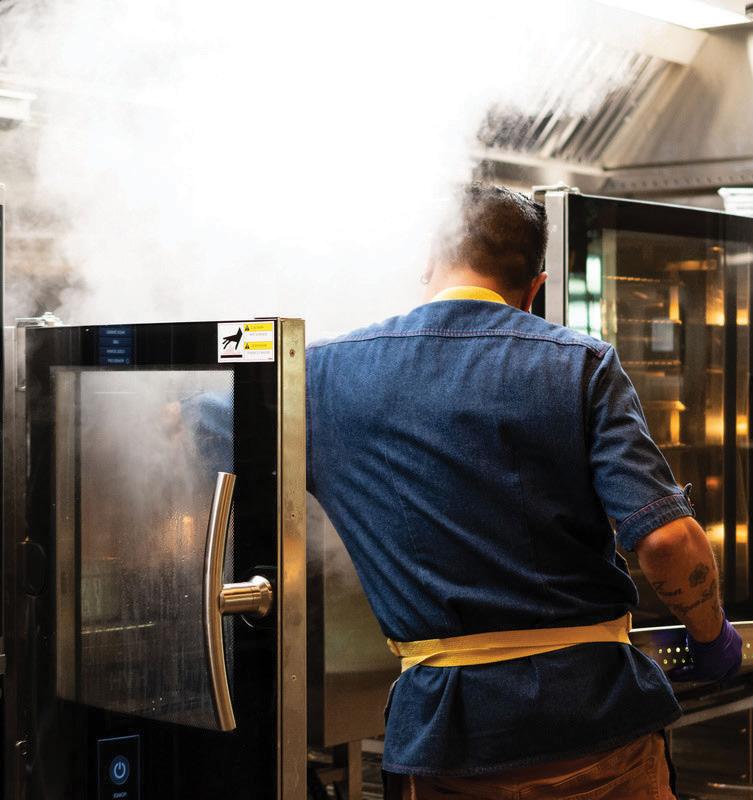
We strive every day to not only meet, but exceed the expectations put forth by our customers. That focus has allowed us to work with countless satisfied customers. From awnings to pylon sign to sign service, we do it all at The Sign Clinic.
While we work primarily with the fast food restaurant industry with monthly service contracts to turnkey new installations, we can o er many other services for you and your customers. Please take a few minutes to check out our customer testimonials and showcase for an idea of what we may be able to do for you.
www.thesignclinic.com

How Anthony Mass brings his expertise built from customer experience to Oracle’s construction and engineering clients
By Billy Yost
Anthony Mass came to Oracle because he wanted to widen his purview. He led sales for building construction technologies for a global business, helping grow subscription revenue, expand the solution portfolio through strategic acquisitions, and increase the company’s reach through global distribution.
But he knew there was more he could be doing for his customers.
“I still felt constrained in my ability to offer an end-to-end solution that leveraged data to solve my customers’ biggest challenges,” the vice president of construction and engineering explains. “I knew there was more I could deliver to help address the broader market vision. That’s when I bumped into Oracle.”
Mass joined Oracle in 2019 as vice president of sales for customer experience and field service. He spent three years helping clients deliver best-in-class customer experiences by modernizing their marketing, sales, and service operations.
“When I meet with business leaders, it’s not about looking for which products to sell them,” he says. “It’s about looking for problems we can help them solve and outcomes we can help them achieve.
“This solution-first approach helped us expand our field service market from B2C to B2B,” he continues. “By working alongside product development and integrating our extensive solution capabilities, we delivered a comprehensive asset and service management solution for our customers. We then broadened our reach through marketing programs and enablement of our sales organizations and partner ecosystem.”
“When I meet with business leaders, it’s not about looking for which products to sell them. It’s about looking for problems we can help them solve and outcomes we can help them achieve.”

VP of Construction & Engineering Oracle
Anthony Mass may be leading construction sales efforts, but his approach to recruiting should be something the Oracle HR team takes notice of. For the VP, it’s a full-time part of his own role.
“I’m always on the lookout for talent to add to our growing team,” Mass says. “I try to initiate conversations with candidates 6 to 12 months in advance of me having an open position for them. In my experience, it helps to cultivate relationships over time and it gets them passionate about being a part of what we are doing. Constantly looking helps you find those diverse backgrounds that add value and make your team as strong as it can be.”
As a result, over the past four years, Oracle experienced significant growth of its service solutions as the company expanded its customer base around the world.
The scale and breadth of Mass’s successful buildout prepared him to take on more challenges on an even larger front. Oracle recently restructured its cloud applications business by better aligning industry verticals with its industry global business units. Mass was approached to lead the cloud applications construction and engineering vertical because of his background working in construction and construction technologies, along with his demonstrated success integrating back-office and field solutions.
“I was excited to move into a role where I could capitalize on my nearly 25 years of experience in and around the construction and engineering industry,” Mass explains. “Like our field service business, it’s a tremendous opportunity to address the most pressing industry challenges by connecting the strength of Oracle’s business operations with our field execution capabilities.”
“I was excited to move into a role where I could capitalize on my nearly 25 years of experience in and around the construction and engineering industry.”
In this role, Mass is responsible for transforming back-, middle-, and front-office business operations for the construction and engineering industry through Oracle’s comprehensive solutions portfolio. But he faces a construction industry in heavy transition. Supply chain disruptions, workforce shortages, and skyrocketing labor and material costs are occurring at unprecedented levels.
When it comes to Oracle’s clients, Mass says his focus remains centered around the company’s platform strategy of providing connected solutions that streamline and automate business processes using centralized master data.
“To help our clients confront some of the larger challenges happening in the construction market today,” he explains, “it’s about providing solutions that not only automate and streamline your business but also enable you to proactively utilize your data to improve insights and accelerate decision-making.”
Part of that strategy also includes assembling industry and product groups comprising Oracle customers to gain market input and feedback. This is an important point for Mass, because dreaming up solutions in search of problems is time wasted that could otherwise be spent providing actual value to clients.
When Mass spoke with American Builders Quarterly in March 2023, he was just nine months into his present position. There’s no doubt some exciting changes are on the way for the construction and engineering teams.
It’s a tough time for the industry, but Mass knows how to deliver more value over a broader charter and find ways to connect all pertinent stakeholders along the way.

How Sherry Grady keeps St. Tammany Health System on the front lines of sustainability with Energy Star compliance and autonomous robots
By Billy Yost
When Sherry Grady came to St. Tammany Health System in March 2022, it was a chance to get back to doing what she does best. In her previous role, Grady had branched into a district manager position that kept her bouncing from hospital to hospital, and she found herself without the kind of relationships and interactions that connected her to the mission of service.
“I felt very separated from the organization and missed the kind of work that one great team was able to accomplish,” explains Grady, who is currently assistant vice president of facilities and safety. “When this position opened up, I was excited at the prospect of being part of a nonprofit health system that prioritizes reinvesting into its operations over profits.”
Shortly into her role, Grady began making sure those investments will pay off for St. Tammany Health System for the foreseeable future, integrating both environmentally sustainable and autonomous technology to keep the Louisiana-based health system on the front lines of innovation.
On the environmental front, Grady figured she would walk the talk when it came to the new workplace electric vehicle (EV) charging stations the hospital is currently in the planning stages to install for its employees. Grady, who drives about 140 miles total every day, saw the savings that would be possible by switching to an EV.
“There are currently about nine of us now driving EVs, and we expect to see that rise,” Grady says. “That’s just a single part of our sustainability initiative, but we want to make sure our employees feel supported if they’re able to make the jump to an electric vehicle.”
More broadly, the hospital is working on Energy Star certification, which is a heavy lift for a main building that was built in 1968. But Grady says renovations have been a constant for the hospital, with an entirely new four-floor tower built two years ago. The tower is outfitted with occupancy sensors, LED lighting, and ultraviolet disinfection installed in patient bathrooms that operate when the room is vacant. St. Tammany is currently undergoing extensive interior renovation designed with the most efficient equipment possible for commercial application.
St. Tammany’s 20-year-old boilers are also getting an extensive overhaul; they are being replaced with energy-efficient boilers throughout the hospital. High-efficiency transformers have been installed to step down power throughout the organization. All new
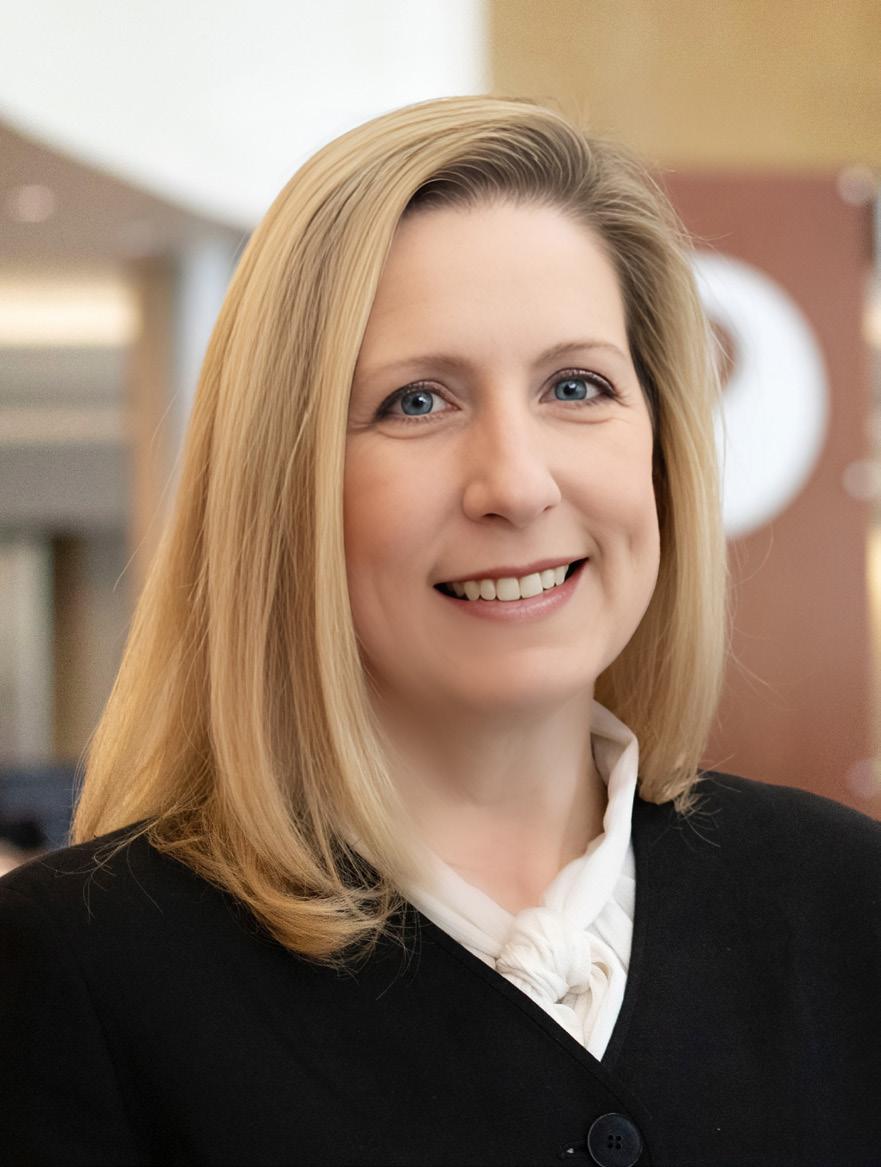
pumps are outfitted with frequency drivers and any pump upgrades for older equipment will include the new drivers as well. In partnership with Louisiana’s Quickstart Energy Efficiency Program, St. Tammany was able to install motor upgrades in all of its cooling towers.
Another part of the renovation includes elevator modernization which will be outfitted with artificial intelligence interfacing to ensure that new autonomous robots are able to call elevators as they drop off medications, IV bags, and any other materials for hospital staff.
Those aren’t the only robots aiding healthcare workers.
Autonomous scrubbers are part of St. Tammany’s environmental services department, so that floor techs can spend more time on work that requires a more human touch. The scrubber—officially named R2-CLEAN-2, the leading vote-getter in a naming contest—is a Nilfisk Liberty SC50 floor scrubber that handles basic floor cleaning all over the hospital.
Grady herself has worked to earn her own upgrades on her impressive professional portfolio. She recently earned certification as a Certified Healthcare Facility Manager (CHFM) in 2022, and she says the accreditation has gone a long way with her self-confidence in a role that has historically been held exclusively by men.


“I was excited at the prospect of being part of a nonprofit health system that prioritizes reinvesting into its operations over profits.”
“Even today, I think there are times when people can wonder how a woman can do this job,” Grady says. “But now, with having earned my CHFM certification, I don’t need to question whether or not I’m truly qualified to do a job I’ve done for years.”
Grady has so many projects going on, but she’s intentional about growing her team, soliciting feedback, and making sure her team feels empowered to make decisions.
“As a leader, you have to remember that sometimes you need to seek out those great ideas,” Grady explains. “You have to be willing to take the time to listen and give people room to communicate. I pride myself on not being the smartest person in the room, and I try to hire people that will bring those fantastic ideas to the table.”
Grady says her worldview comes down to the goal of being a little better today than she was yesterday. Given her passion and her optimism for her team and her organization, that seems more than possible.




The 1950s turned out to be a decade of many firsts: the VCR, fiber optics, solar cells, and St. Tammany Parish Hospital. With a mission to birth, heal, and improve the lives of its community in south Louisiana, St. Tammany Health System became and has remained an integral part of the people it serves. Its dedication to sustainability and its eye for the future found a natural ally in Trane Technologies , where pioneering and advancing the HVAC industry while minimizing our collective carbon footprint has led to a partnership that pushes the boundaries of sustainable healthcare.











changing regulations, advancing technology with multiple data sources, unexpected disease outbreaks and patient expectations create challenges, we can help you through them.

Sara Grofcsik and Derek Gaskins plot out the future of C-store and the partnership between Samsung and Yesway
By Billy Yost
There is one convenience store (C-store) for every 2,266 people in the United States, according to a 2023 NACS/ NielsenIQ convenience industry score count. Yesway Chief Marketing Officer Derek Gaskins says that, in many ways, a C-store is one of the oldest professions on earth. The general store of old is the C-store of today, and just as the name has evolved, so have C-store capabilities.
Yesway is well ahead of the curve when it comes to utilizing technology to create a more fluid and engaging customer experience. Established in 2015, Yesway is one of the fastest-growing C-store chains in the US with Yesway and Allsup’s locations in nine states and a “2021 Convenience Store Chain of the Year” award from CStore Decisions to boot.
“I’m part of an organization that operates like a glorified start-up,” Gaskins explains. “We move fast, and we’ve had the opportunity to seek out some of the best ideas all over the world and apply them to local markets that we serve, from New Mexico to South Dakota, all with that customer experience in mind.”
For Gaskins, that means seeking out partners that are used to working on the front lines of innovation. That’s where Sara Grofcsik comes in. The executive director of US sales at Samsung Electronics America is tasked with helping Gaskins and Yesway create the ultimate customer experience, one that is changing far faster than one might expect of the C-store space.
Grofcsik’s purview—which includes C-store, quick serve restaurant (QSR), retail, hotel and casino, and food and beverage—is a titan of consumer trends. Some of those trends were kicked into overdrive during the pandemic.
“We’re seeing a lot of C-stores integrating a drivethrough, an integration that really helped businesses
“We actually find customers more willing to upsell themselves [at a kiosk], which is an interesting phenomenon.”
—Sara Grofcsik, Samsung
Executive Director of US Sales
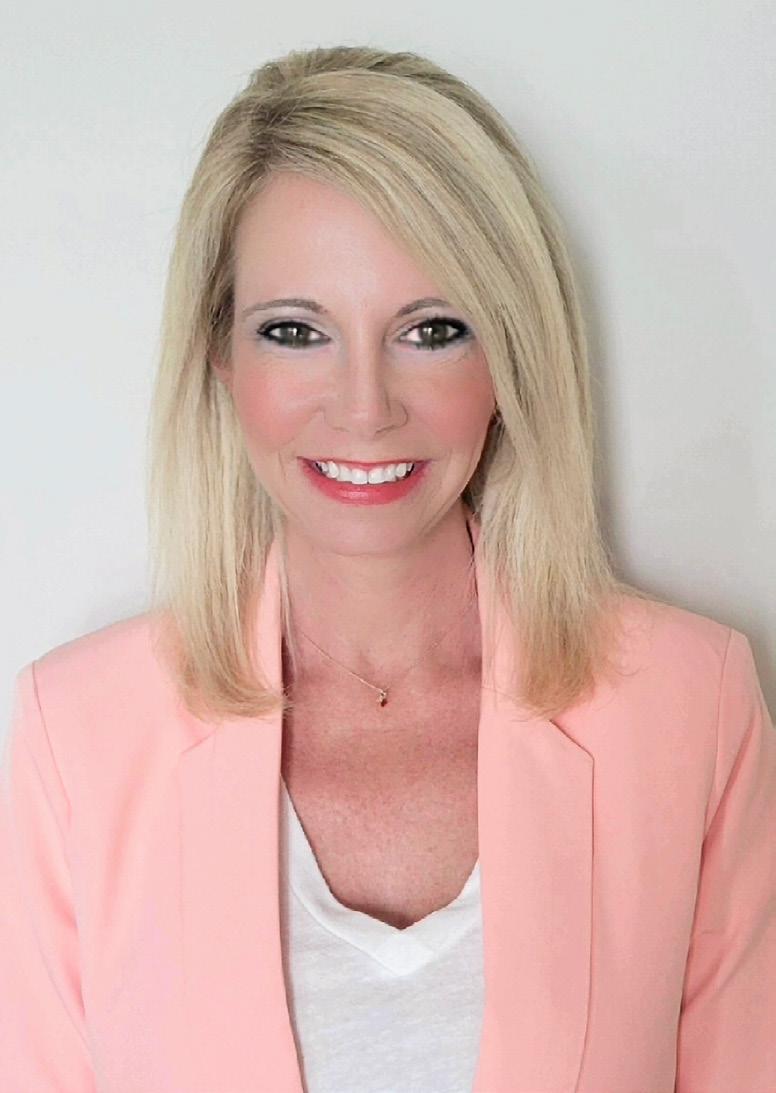

Chief Marketing Officer
stay open during COVID,” Grofcsik explains. “A lot of C-stores are moving toward digital menu boards because it’s an on-ramp for additional technology to be integrated into the drive-through at a later date.”
The move to mobile device ordering was also a byproduct of the pandemic. C-stores have been rolling out loyalty programs via mobile apps that might save customers money on their gas or other specialty items.
“It’s a way to help businesses track who is coming back and why,” Grofcsik says. “It helps predict buying behaviors and forecast trends much more than they might have been interested in before.”
Gaskins says the entire industry is on the cusp of what he calls Mobile 3.0, a true omnichannel powered by mobile devices that include mobile ordering, mobile payments, loyalty programs, gamification, and even ancillary third-party delivery integration.
As customer self-serve kiosks become more popular, Grofcsik points out that for many reasons, it’s a customer-driven integration.
“We actually find customers more willing to upsell themselves, which is an interesting phenomenon,” Grofcsik says. “When you’re face-to-face with someone, you might feel guilty about grabbing that extra drink or snack. You might feel pressured to rush through your transaction. A lot of the time if you’re asked a question, you might just get flustered and immediately say, ‘No.’ At a kiosk, we find people are much more willing to give that additional item some extra thought.”
If you’ve found yourself more regularly captivated by Maria Menounos guiding you through your fill-up via a screen in the middle of the gas pump, there’s also a good reason for that. Programmatic advertising is playing a more and more significant part of C-store bottom lines, both because of its wide-usage cases and with which owners can prioritize what they want their customers to see.
“A programmatic advertising model creates a stream of revenue that helps offset some of the CapX concerns that come along with integrating new hardware and digital solutions in stores,” Grofcsik explains. “But
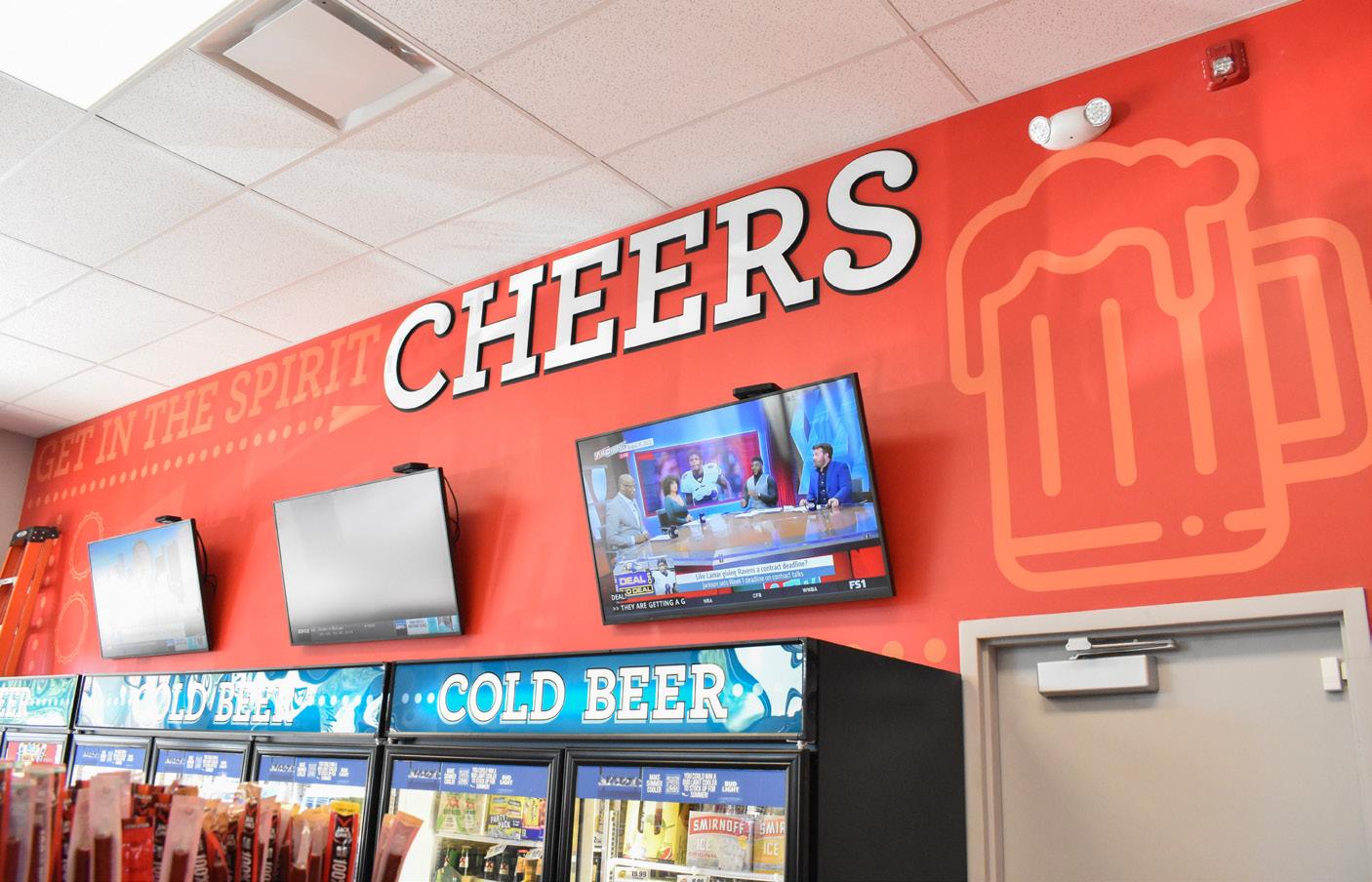
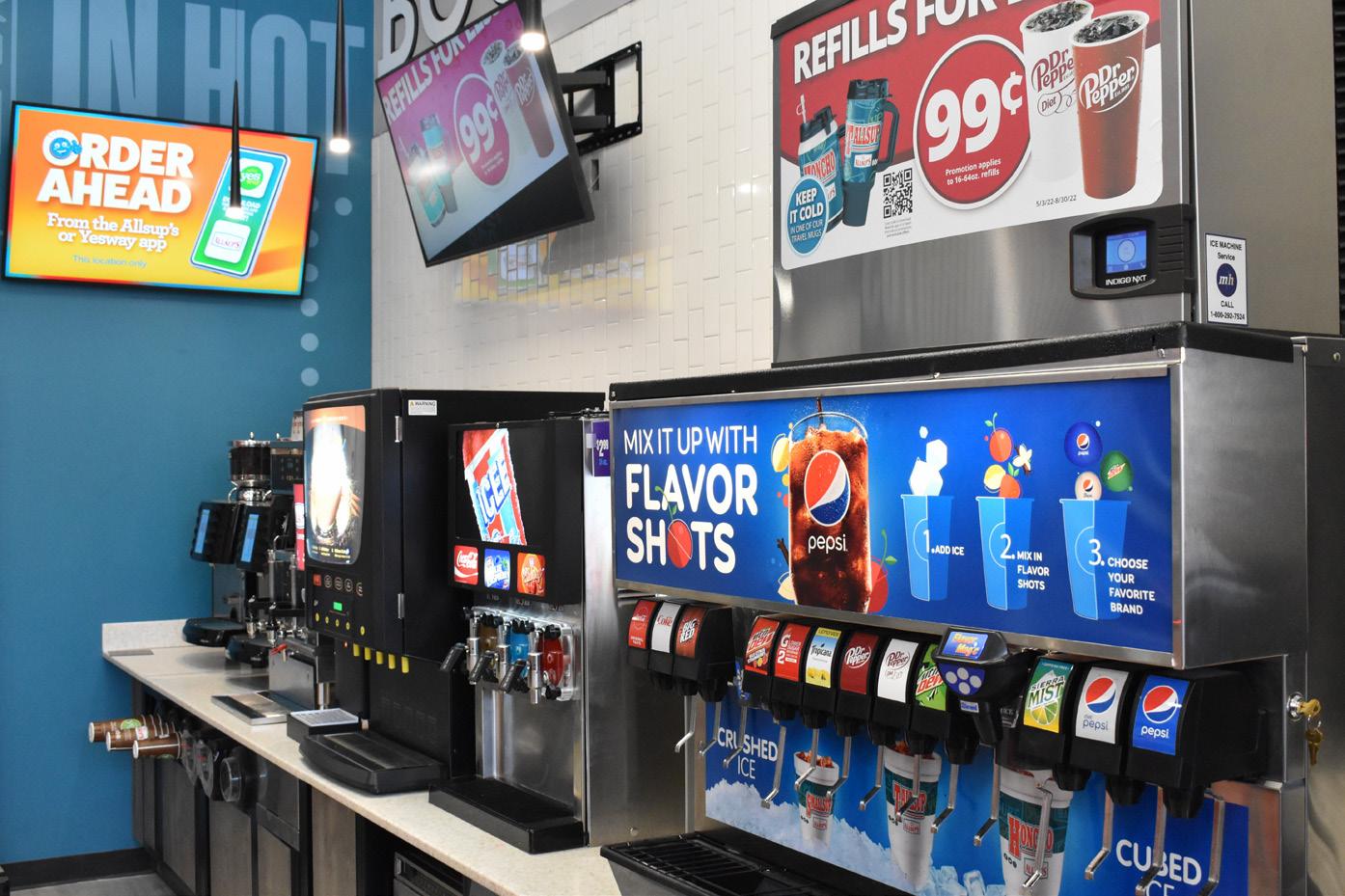
◀ Yesway is an industry leader in the “Mobile 3.0” movement, which allows customers to order, pay, and earn points from a mobile phone app.
“[Samsung] took Yesway seriously as a brand when I know we might be a smaller fish in their pond.”
—Derek Gaskins, Yesway
with the addition of more screens comes the opportunity for more advertisers, some local and some national, to get massive impression numbers from all of those interactions. It might be the app, the gas pump, or the drive-through screen. I think you’ll continue to see this space grow.”
This is the foresight Gaskins relies on to keep Yesway one step ahead.
“I have to say a lot for Samsung,” the CMO says. “They connected with me directly to address some of the challenges we were trying to solve. They took Yesway seriously as a brand when I know we might be a smaller fish in their pond. That focus and direct connection have helped me and our team step up our game.”
That game, for Gaskins, comes down to a phrase attributed to both Leonardo da Vinci and Steve Jobs. “‘Simplicity is the ultimate sophistication,’” Gaskins quotes. “If you can explain it to a toddler or a grandparent, then you can explain it to anyone. As much as we continue to innovate, I want us to simplify and amplify. That is my North Star.”
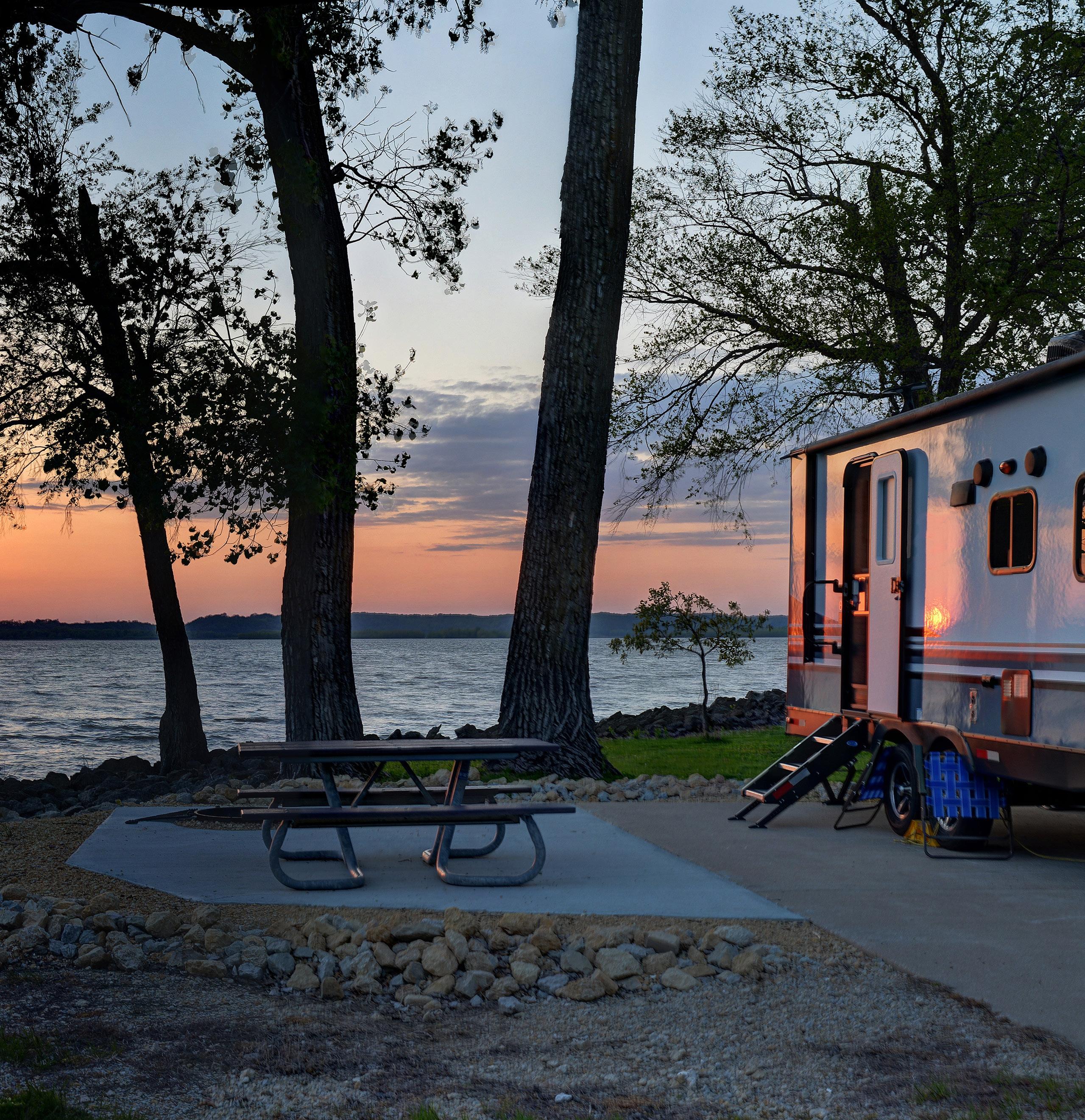
Camping World is well on its way to expand its footprint by 50 percent in the next five years
By Will Grant

Camping World is keeping true to its rapid expansion plans to open at least 20 new stores by 2024, and is looking to increase its store count by 50 percent over the next five years. The well-known recreational vehicle mega-retailer is moving aggressively to grow its national footprint, is commitment to new builds, and based on a rudimentary news search was acquiring RV dealers at almost a weekly clip in summer 2023.
The RV giant is seeking out key markets across the country that include San Martin, California; Kansas City, Kansas; Sunbury, Ohio; Mesquite, Texas; and Hurricane, West Virginia, among countless others. The chain currently owns and operates nearly 200 supercenters nationwide (including its Good Sam membership products and services), but at its growth pace, those numbers are probably old news as soon as they’re reported.
Acquisitions have also played a major role in Camping World’s market dominance. The 2022 acquisition of Richardson’s RV Centers was the largest deal in the company’s history and included eight locations in Indiana and California.
That’s not the only acquisition that’s made headlines. The April 2023 purchase of Bend, the Oregon-based All Seasons RV, strengthened Camping World’s Oregon presence to 6 total locations and put the company within reach of hitting 200 dealerships in the very near future.
In concert with the expansion, Camping World has also announced significant investments in its dealer network and brand-specific dealership format. In June 2023, the company rolled out its first iteration of a store model dedicated to specific RV brands, creating a brand-specific and tailored customer experience in the process.
The Morgan Hill, California, location features a store built around RV company Jayco, highlighting its products and services. California isn’t alone, however, with more brand-specific stores opening in Oklahoma, Georgia, Michigan, Utah, Wisconsin, Minnesota, and Arkansas.
“We believe our growth can be accelerated by acquiring or opening dealerships that will ultimately be focused exclusively on the leading RV brands in America,” Marcus Lemonis, chairman and CEO of Camping World, told Chain Store Age.
The rapid influx of growth is on the plate of Director of Construction and Field Operations Casey Smith, who is overseeing greenfield builds, remodels, and maintenance for Camping World’s growing portfolio. Smith’s team keeps pace with company goals by drafting standards and consistency in its prototyping and developing strategic standards that aid quick implementation.
Smith came to Camping World in a construction and facilities project manager role before being promoted twice to his current role. The director’s outdoor retail experience runs deep, having spent nearly 16 years at Gander Outdoors.
Lemonis told RVBusiness that his company’s acquisitional appetite remains despite a tough time for others in the industry.
“The industry’s moving ahead,” the CEO explained. “I think this industry has seen over many decades that it has its peaks and so-called valleys. But the industry in my opinion has never been stronger—ever. Yes, is there a little moment in time when it’s a little softer than everybody wants? Sure. But people’s love for RVs and the number of new people coming to the RV industry is unbelievable.”
Roof Options Group is excited to partner with Camping World. Casey Smith’s leadership has been instrumental in working through the logistics of the partnership between the two groups. We are working diligently with Casey’s team ensuring Camping World’s roofs are environmentally safe and secure for the future. Roof Options Group provides solutions allowing for longevity on an aging roof, while significantly reducing the carbon footprint and costs of repairing your roof system.
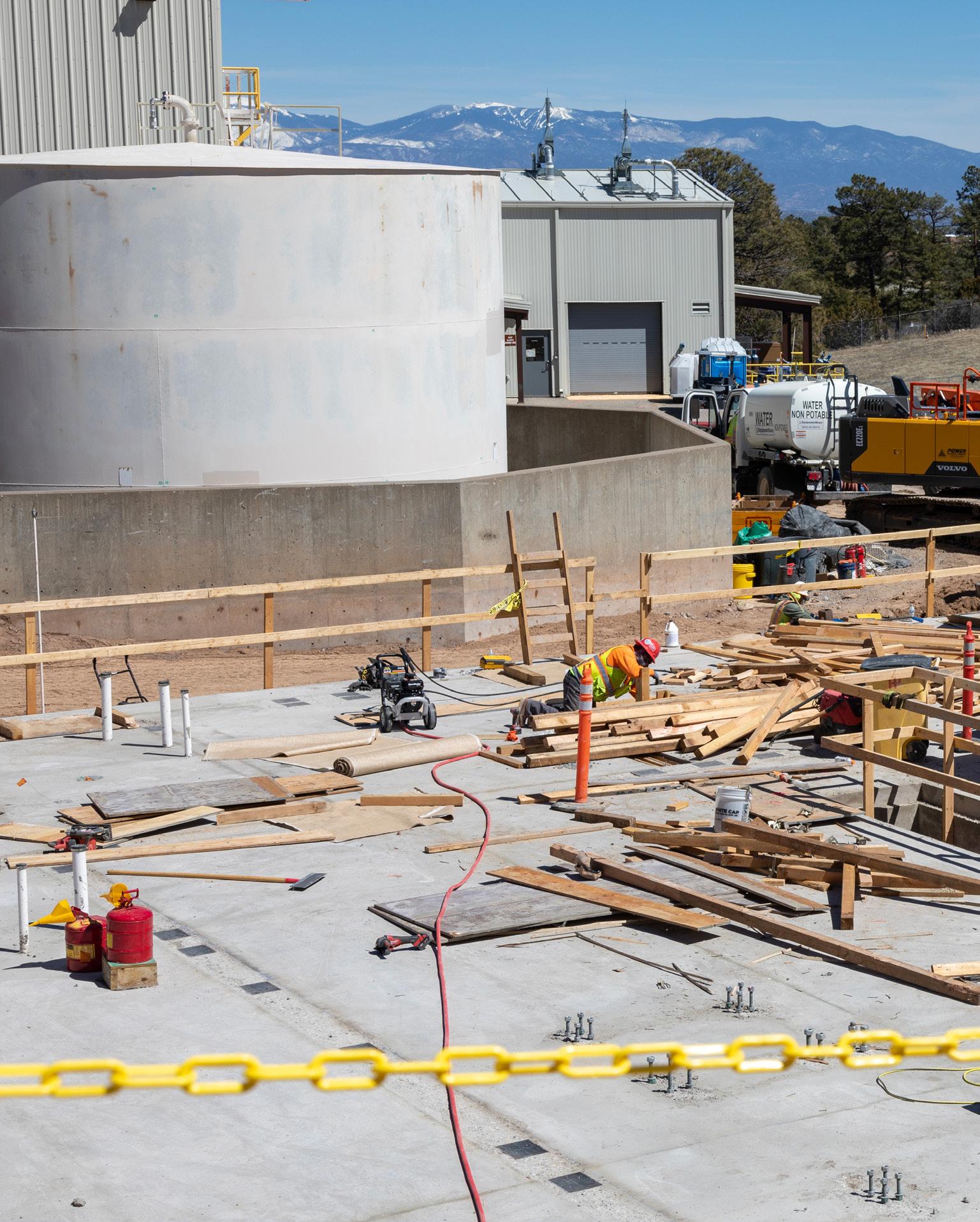

To solve uncommon construction problems at Los Alamos National Laboratory, Martin Owens implements new project delivery strategies
By Peter Fabris
For a construction executive, heading planning and operations for Los Alamos National Laboratory represents the pinnacle of the profession. A role at the 13,000worker facility in the New Mexico high desert offers an opportunity to put a shining capstone on a career for the rare individual with the right qualifications and abilities.
Los Alamos Lab spans 40 square miles with thousands of buildings and structures that include science labs, some of which handle hazardous materials, weapons, and explosives. Because it is one of 16 research and development labs of the US Department of Energy, much of the lab’s work is classified and must be performed under stringent security protocols.
The difficulty of the job increases with the technical requirements of leading-edge scientific research facilities, challenging archaeological and environmental protocols, and the slow-moving government capital development process. The lab originated in the 1940s as the nexus for the development of the atomic bomb, and its scope of work has broadened to include advanced computing, climate research, and bioscience.
Martin Owens, senior director of the capital project execution organization at Los Alamos, brought his extensive background as a manager of nuclear energy projects to the lab in August 2021. Owens currently presides over 600 projects with a total value of more than $1 billion. Some of these are largely unknown outside of government and research institutions, and shepherding such projects comes with uncommon challenges even in the best of times.
Today, thorny issues facing the construction industry at large compound the challenge. Los Alamos, located about two hours from Albuquerque, is off the beaten path for contractors and tradespeople. Owens and his team have been greatly challenged in recent years to entice construction professionals to bid on projects. Demand for construction labor in Albuquerque has been robust, and contractors have their pick of lucrative work without the unusual demands of working for a government research lab.
The traditional design-bid-build delivery format no longer serves the lab’s needs in many cases, and
Owens’s organization has turned to new project delivery strategies. One of those strategies is Construction Manager at Risk, a format that reduces financial risk on contractors while engaging the constructor earlier in design so that designers can leverage their expertise and incorporate their knowledge of current market conditions prior to final pricing.
Inflation has created headaches, making it more important than ever to regularly engage with contractors to understand the regional market and the pressures they are facing. “We had estimates done pre-COVID on some projects and then experienced sticker shock later,” Owens says. “We’re meeting regularly with our contractors to find out where they are at. They are experiencing supply chain volatility and pronounced craft shortages and are not able to lock in prices for very long.”
Another recent strategy is bundling a series of five office buildings together under one RFP to make the work more financially appealing to contractors. “It will be winner-take-all bidding,” Owens says. “A bigger pot of money and the pipeline of subsequent projects makes it more enticing.”
“Martin is keenly aware of the current challenges contractors face in the industry, especially the unique challenges building at Los Alamos National Laboratory,” says Steve M. Grauer, regional vice president for the Southwest region at Hensel Phelps. “It’s clear Martin is hyperfocused on clearing barriers that will heighten future success for all stakeholders at the lab.”
Owens has also turned to modular construction to deliver buildings faster while using labor more efficiently. Collaborating with Ramtech Building Systems, Los Alamos earned an award at a recent World of Modular Conference for a 10,000-square-foot office with noise-proofed space dedicated to high-security collaborative work.
With most of the labor to construct the shell of the building performed in a factory, Los Alamos did not have to lure as many contractors to work on-site and saved considerable time, Owens says. He believes the modular approach can be even more efficient by having additional scope and the associated inspections conducted at the factory rather than on-site.
To make contracting with the lab more like working with the private sector, Owens’s team is striving to
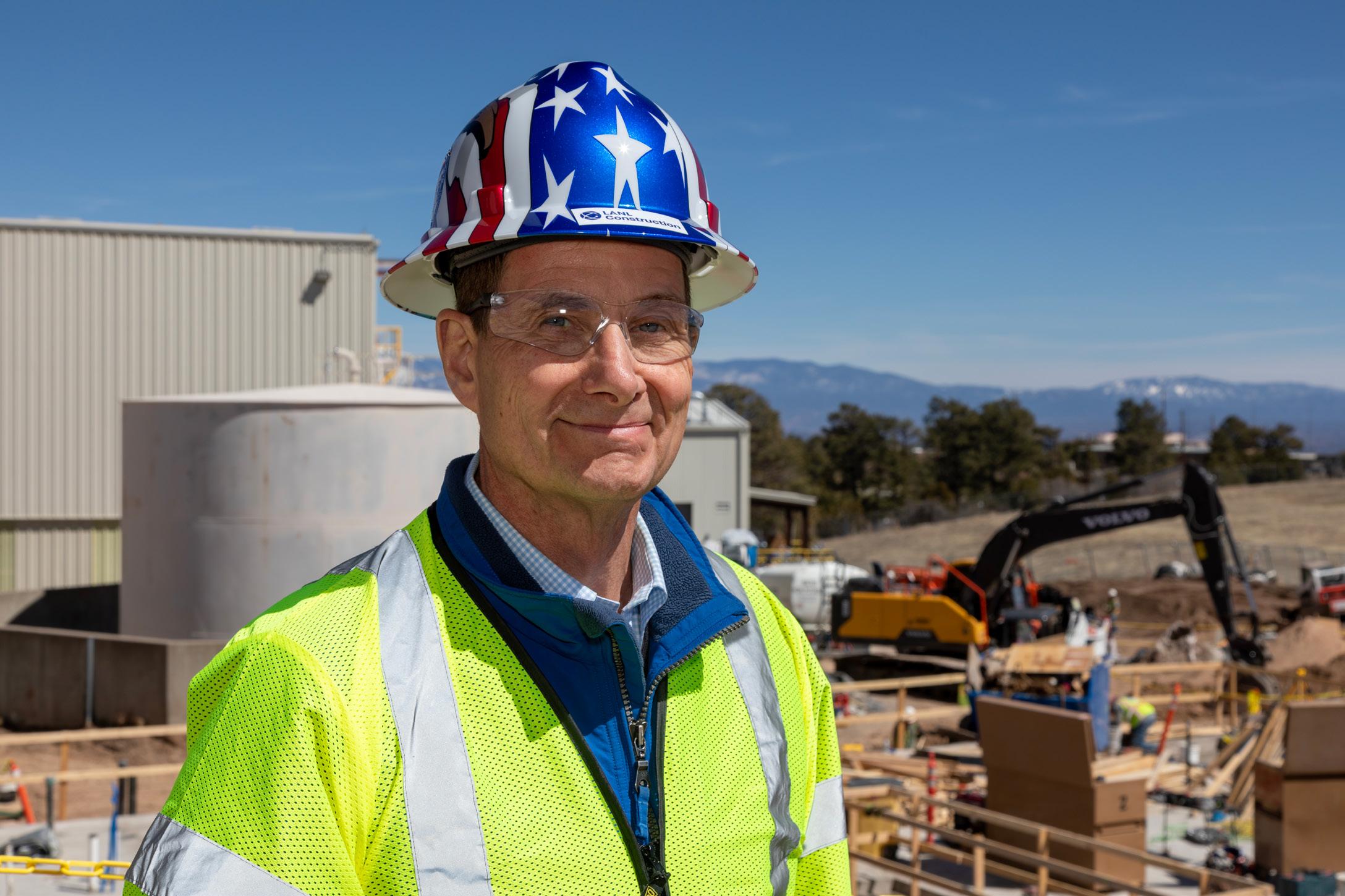
“We’re
meeting regularly with our contractors to find out where they are at. They are experiencing supply chain volatility and pronounced craft shortages and are not able to lock in prices for very long.”
streamline project development processes. For example, Los Alamos has revised and implemented new engineering standards coined ProtoSTAR to be more aligned with commercial practices.
The lab’s team also developed an integrated project review software planning tool that helps the project team identify potential areas of concern as the project progresses. It can prompt managers to get an archaeologist or environmental specialist involved early to address possible complications.
This includes the disturbance of the endangered Mexican Spotted Owl during its mating season. “If they are mating and nesting, you can’t make noise there for three to four months,” Owens says.
The Los Alamos area also harbors points of indigenous archaeological interest, so any digging can potentially uncover ancient artifacts. The lab strives to give the native culture its due respect, Owens says, and will halt work to allow archaeologists time to do their work.
Sustainability and environmental stewardship are also keen areas of focus for Owens and the associated operations lab staff of 6,000 engineers, lab infrastructure and maintenance specialists, and tradespeople. A project to upgrade the complex’s electrical infrastructure
now underway will enable new buildings to be ready for full electrification.
The lab’s long-range goal is to reduce its use of natural gas and electrify most of the campus. The current power supply is not up to the task. An environmental assessment underway will analyze potential environmental impacts that could result from a new 12.5-mile, 115-kilovolt power transmission line. The lab hosts many power-hungry pieces of equipment, such as new supercomputing facilities, so an electric supply upgrade is vital to its mission.
Other recent sustainability projects of note include the reuse of wastewater for cooling towers and the repurposing of spoils from projects as construction fill. “We have a huge mound of soil from many years of construction activity,” Owens says. “We grade the soil and qualify it for engineered fill so we don’t have to go off-site to get it.” That reduces truck traffic and resulting CO2 emissions.
That clever reuse of waste material offers a fitting metaphor for Owens’s challenges and responsibilities. He would probably tell you that moving small mountains is a requirement when helming capital projects at a place with the size and complexity of Los Alamos. With the breathtaking pace of advancements in science, there will be plenty of mounds to move in the years ahead.
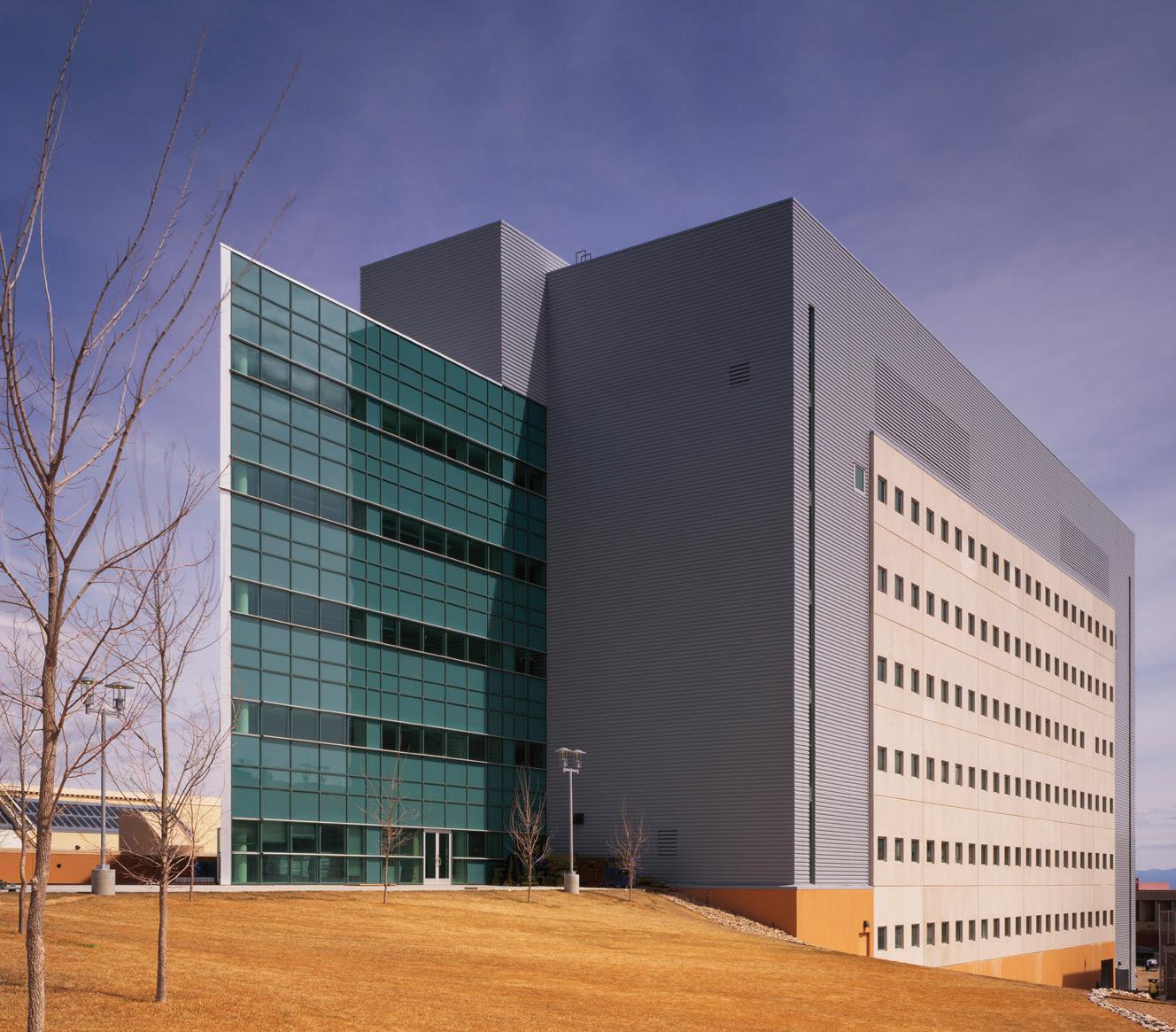

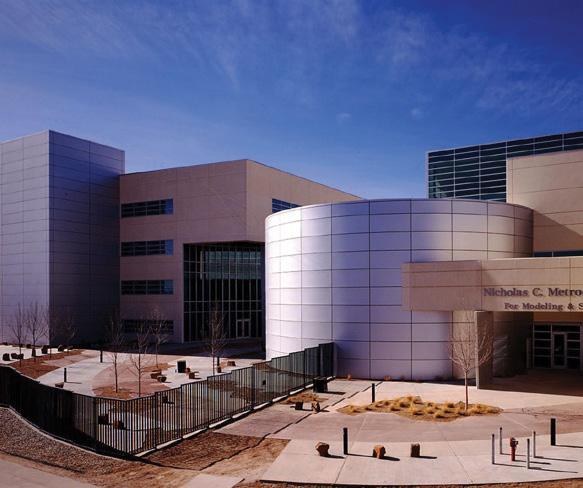

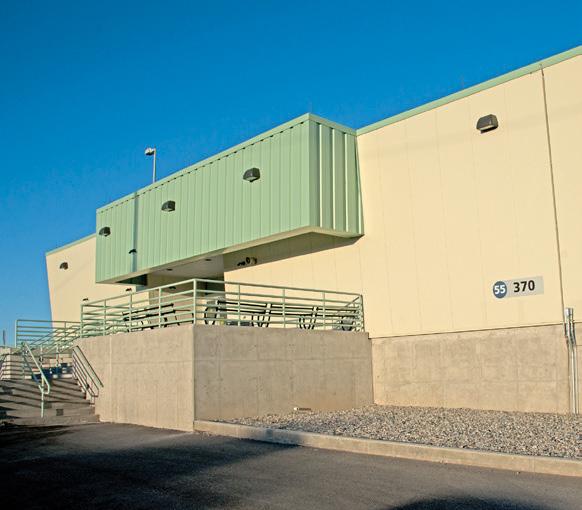
Setting the stage and implementing the building blocks for what will soon be state-of-the-art facilities and designs from difference makers in the building industry
Through hard work and collaboration, Ken Ziff is committed to serving Dental Care Alliance’s providers, and, by extension, their patients
By Natalie Kochanov
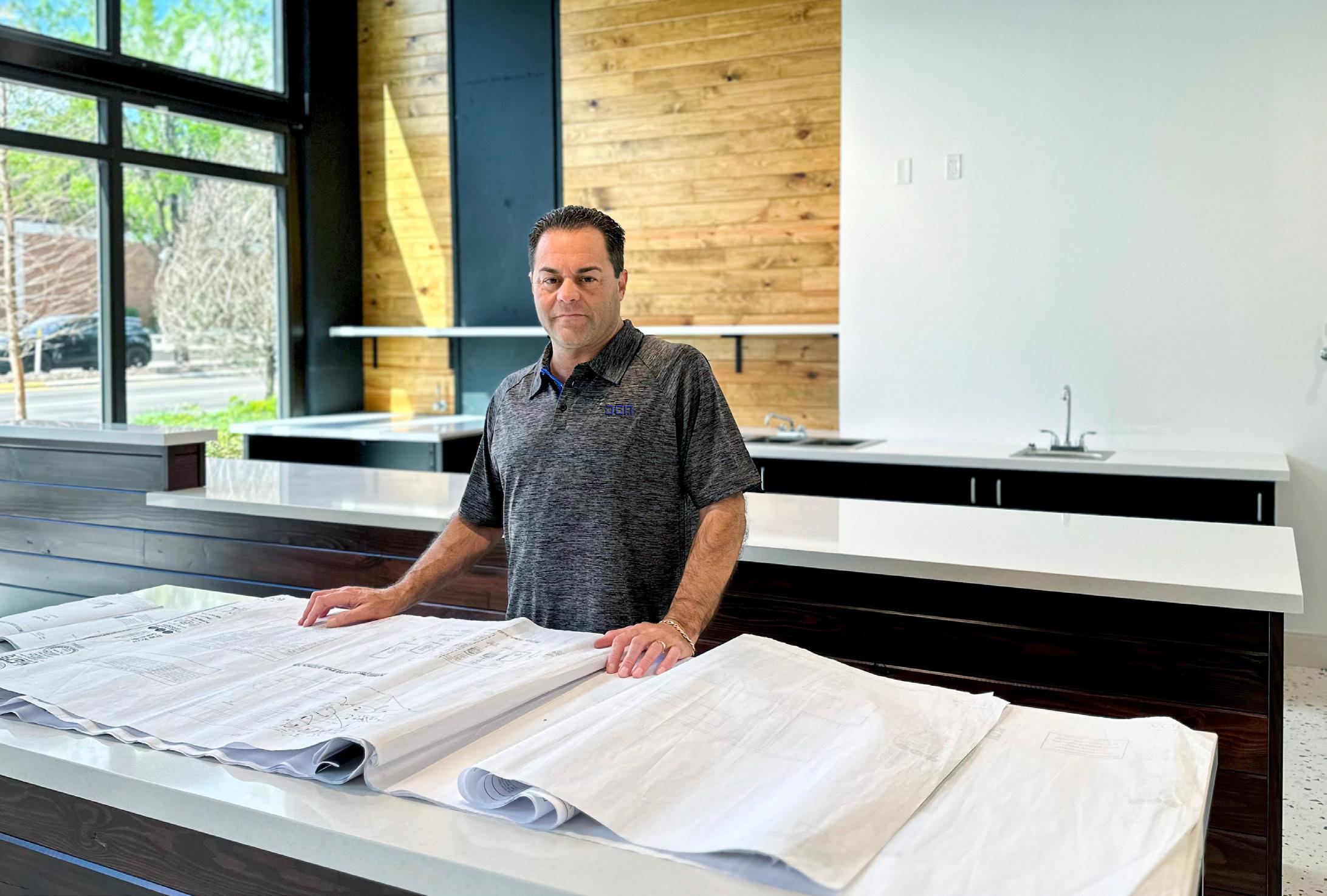
Ken Ziff joined Dental Care Alliance (DCA) in November 2021, but his familiarity with the dental industry dates back to his childhood.
“I grew up in my father’s dental office in New Jersey,” Ziff says. “He was a dentist for 50 years, but he was a pharmacist for a decade before that, because he was expected to follow in his father’s footsteps. He instilled in me a work ethic that I have brought to the table here at DCA and that I have passed down to my own kids.”
As DCA’s vice president of real estate operations, Ziff has ample opportunity to put that work ethic to the test. He oversees all real estate, facilities repairs and maintenance, and construction for the dental support organization, which assists over 400 dental practices across the country.
For Ziff, the key to managing this sizable portfolio is to honor the relationships between the DCA
team and its dental providers and those between the providers and their patients.
Before coming on board at DCA, Ziff cut his teeth in the world of corporate real estate and construction at professional employer organization Staff Leasing (later Gevity HR); NRT, a subsidiary of the real estate brokerage company Anywhere Real Estate Inc.; and TTEC, a global customer experience outsourcing company. In each role, he grew his individual responsibilities and his leadership experience, in part by absorbing as much knowledge as he could from the industry experts with whom he collaborated.
“So much of what has helped me throughout the years is building relationships, learning every step of the way, taking on increased responsibilities, and always making great connections,” Ziff says. “You have your internal and external customers, and you really want to take care of them and develop those
“We are all on the same team. The dental providers are doing their part and the office staff is doing their part, so we need to make sure we do our part in providing patients an inviting and comfortable space.”
relationships, because when it comes time to get things done and get them done together, it is a lot better if you are all rowing in the same direction.”
Over the years, Ziff has adopted an “attitude of gratitude” mindset that guides his interactions with his team members and colleagues. “It is a matter of experiencing a genuine willingness to partner and collaborate throughout the organization from the bottom to the top,” he says. “I treat everyone the same, and that is something I have carried with me throughout my career.”
At DCA, Ziff works with his high-performing team to ensure the smooth day-to-day operations of dental offices nationwide. “Service-level excellence is so important to us,” he emphasizes.
“We have two people on the team who deal with repairs and maintenance on a daily basis. Instead of
just dispatching somebody in response to a work order, they reach back out to the office to make sure they really understand what the problem is. One team member assists with construction projects, while another leads the real estate lease administration area. The team is small but mighty!”
Ziff wants each DCA provider and their office staff to take pride in their space as a place of work and a place of care. “We are all on the same team. The dental providers are doing their part and the office staff is doing their part, so we need to make sure we do our part in providing patients an inviting and comfortable space,” he says.
“The providers have relationships with their patients, so there is no reason for us on the support center side not to have relationships with the providers and their staff.”
That includes bringing new providers into the fold. “Besides relocations and renovations, the company has experienced tremendous growth through acquisitions, which we call affiliations,” Ziff explains. “A lot of the doctors choose to partner with us. They didn’t go to school to become businesspeople or marketing or insurance experts. When they partner with us, we take those burdens off their shoulders and help them get back to what they do best and what they hopefully still love to do, which is to be a dentist.”
As new practices ally with DCA and its real estate portfolio expands, so do Ziff’s responsibilities. Beyond handling real estate leases and negotiations, he leads a construction docket with current projects in Indiana, Maryland, Massachusetts, Pennsylvania, and more. “At times, we have up to two dozen projects of varying scopes that I am supporting at any given time, all of them at different stages,” he says.
For projects nearing completion, Ziff holds weekly or biweekly meetings with working groups throughout DCA to stay “in the know” as final installation dates approach. He likens his role to that of an orchestra conductor, who must maintain visibility over the many sections of
DCA and help each of them hit their cues at exactly the right moments.
No matter the challenges that may arise in the process, Ziff has what it takes to persevere—a skill he picked up from his father all those years ago. “I give him so much credit, to have the absolute drive to succeed instead of just doing something because he was told he must,” he says. “It shows that anything is possible, as long as you have the will and the desire.”
Mohr Partners Inc. is a global corporate real estate advisor, providing corporate tenants with an integrated set of portfolio services including strategic planning, business intelligence, lease administration/accounting and FASB ASC 842 compliance, research and site selection, labor analytics, project and construction management, comprehensive demographics analysis, economic incentives negotiations, and transaction management. Since 1986, Mohr Partners has been managing real estate portfolios for corporations, and each year completes transactions globally for its clients.



How Joe Szabo leverages his 35 years of property management expertise to keep Paramount Group well ahead of its—and New York City’s— sustainability goals
By Billy Yost


More than 35 years into his career, Joe Szabo describes two metaphorical buses motoring around New York City.
The first is the Joe Szabo fan club. He hopes it’s a double-decker of his cheerleaders who have had his back throughout his career as a managing director of operations for numerous real estate firms.
The second bus, he explains, is full of menacing characters like the Baseball Furies from 1979’s New York cult classic movie The Warriors, wielding baseball bats and looking to catch Szabo alone in a dark alley somewhere.
“You’re always going to have two camps when you put yourself out there,” Szabo says with a laugh. “I just hope one group is bigger than the other. I take great pride in building property managers up.”
During his interview with American Builders Quarterly, there’s no sign of the Szabo that would elicit cause for a violent showdown of any sort. He is ready to get into the minutia of HVAC and operations at the drop of a hat, and his passion for the field is a certainty. The man loves what he does, without question.
“Finding the perfect relationship balance between the service provider and the client is the number one key to a mutual success,” says Gal Yaniv, CEO of Professional Security Consultants/ATS Security Inc.
“Joe Szabo’s ability to create such connections is in a class by itself. Joe’s positivity and dynamic personality create a wonderful work environment around him. Joe is a top-notch professional, while at the same time a true friend and mentor. These elements make one willing to go the extra mile for him.”
In coming to Paramount in 2021 as senior vice president and head of property management, Szabo has been able to put decades of global experience— and an intimate knowledge of the Big Apple—into direct action.
Szabo oversees Paramount’s properties in its two core markets: New York and San Francisco. Each city is unique and has its own laws and ordinances that must be closely monitored and followed. For instance, in accordance with New York City’s ambitious Local Law 97, buildings over 25,000 square feet will be required to meet new energy efficiency and greenhouse gas

emission limits by 2024, with stricter limits on the way in 2030.
Along with Paramount’s SVP of sustainability, director of engineering, property managers, and chief engineers, Szabo was able to ensure Paramount’s buildings were penalty-free for the first mandated period of reporting in 2024. The timing is amazing, but so are the solutions.
“We were able to accomplish that purely on maintenance without spending any capital dollars,” he explains.
But Szabo has been in the game far too long to see the project as a one-and-done accomplishment. “When
▼ This lobby is accented with a stylish granite-clad and aluminumframed glass curtain wall façade and four-story granite columns.

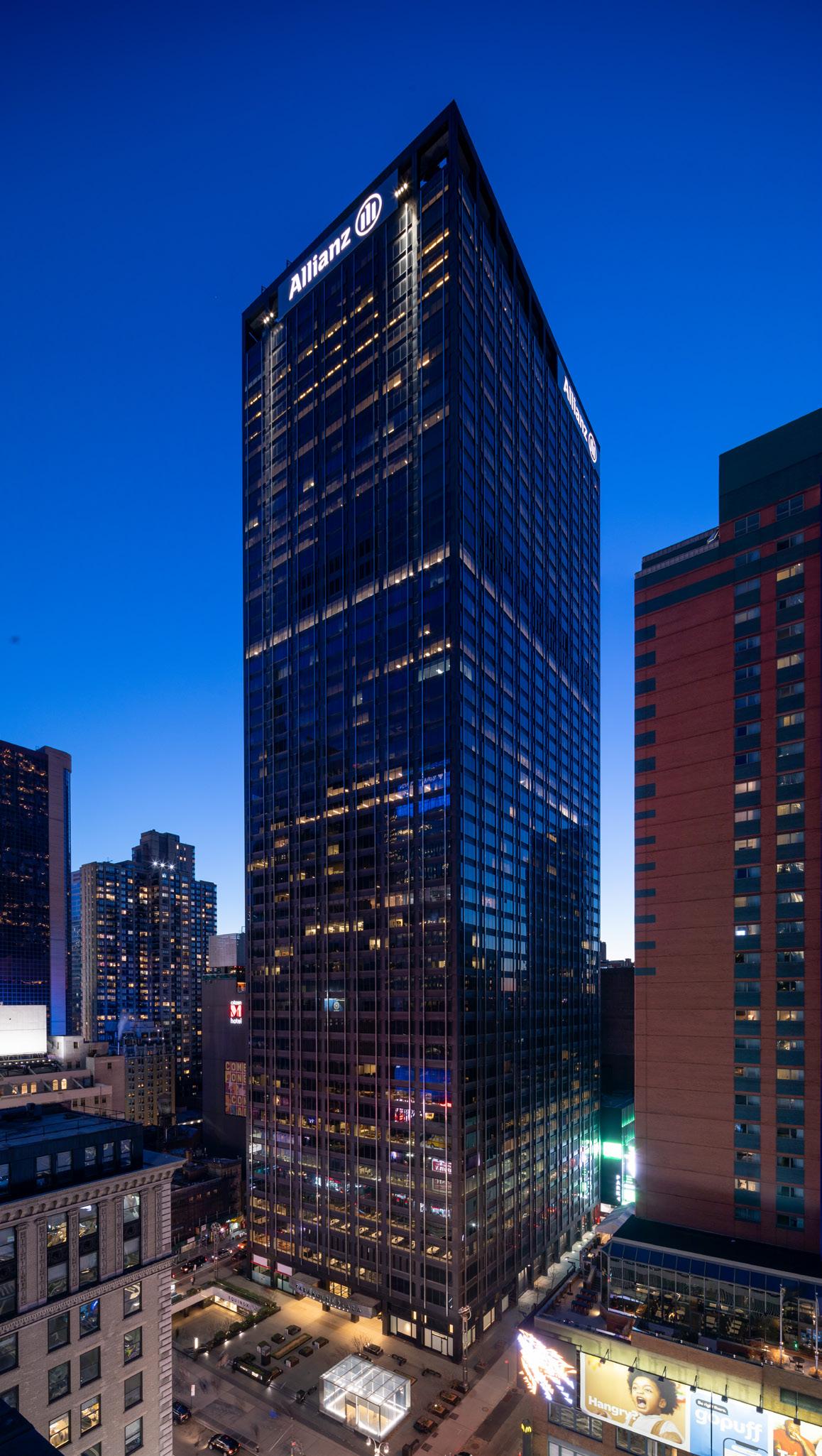
When Joe Szabo took on his role at Paramount, he and his team went through every building in his portfolio to develop a game plan. The goal was to identify areas where the company could take strategic actions to enhance each property’s efficiency and long-term value—all while maintaining compliance with city ordinances. Part of this process included finding ways to build upon Paramount’s industry-leading commitment to sustainability.
“Analyzing a portfolio is a nuanced and comprehensive process that must consider a number of different factors to inform the best decisions,” Szabo explains. “Those with less experience making these assessments might focus too heavily on one particular area, which could produce a short-term benefit at the expense of a long-term one. It’s important to take a holistic and broad view, and one that considers what tenants deem important and valuable.”
▲ Paramount Plaza at 1633 Broadway in New York City is Paramount Group’s headquarters.

SVP and Head of Property Management
I take a look at a building, I’m not looking at how it’s operating at the moment,” he explains. “I look at the building as how it could be operating in the future.”
The Paramount team is intent on finding creative solutions to not just hit the 2030 goals but also actively benefit from New York City’s sustainability goals. For example, 46 stories up at 1301 6th Avenue, a perfect rooftop view—the Empire State Building, Freedom Tower, and Rockefeller Center—is currently impeded by a 3.5-story, 4,000-ton Foster Wheeler cooling tower that was finished the same year the Beatles released “Can’t Buy Me Love” in 1964.
“It’s a 4,000-ton monstrosity, and the view is completely lost,” Szabo says. “How can we use those Local Law 97 capital dollars we have to spend not just to make our building more compliant and meet our carbon reductions, but also create something better for the building?”
The key lies on relocating equipment to the 11th floor mechanical room. By converting from steam drive refrigeration equipment to electric drive, creating a closed condenser water loop for tenants (and a whole host of mechanical innovations that Szabo can list verbatim), it leaves the roof open to several amenity opportunities for decades to come.
It’s a win-win for all involved and is just one novel solution to meeting Local Law 97 protocols that also provides a significant upside to Paramount’s long-view approach.
Szabo has seen a shift in those taking on property manager roles when it comes to amenities. Whereas those like him who came up in the ’80s rose from engine room jobs to more senior positions, many getting property manager roles today are coming out of the hotel industry where the primary focus is on amenities.
That approach fits when trying to be more serviceminded, particularly when creating more amenity centers, but it’s forgetting a great deal of the rest of building operation expenses.
“I think a lot of people coming into the space can operate with blinders on, focused on the concierge amenity services,” Szabo says. “It’s my role to teach and mentor them on the other half of operating a building: façades, roofs, HVAC, plumbing, electrical, and maintenance costs.”
Teaching can take time, but Szabo says that his three children have helped him develop more patience than he might have shown back in his younger years.
Szabo’s early years include joining the Operating Engineers Union in 1983, a niche union that handled HVAC and maintenance for New York City. The young Szabo was a motivated and natural leader. He volunteered for any project he could get his hands on. He was a chief engineer by 26 and a director of plant operations at Rockefeller Center by 32.
By the time Szabo left Tishman Speyer after 26 years in 2014, he was responsible for 88 million square feet of real estate space globally, including China and Brazil. While it may be a decade later, Szabo seems as passionate as ever about the skill set he’s brought to Paramount Group.
Szabo knows that the work he does now will keep some of New York City’s most impressive office buildings ready to handle whatever the future holds.


F.S. Site Corp strives to deliver a professional hands-on plumbing and fire suppression solution. We congratulate Joe Szabo and Paramount Group for their recognition in American Builders Quarterly!

Global BMU: “Our mission at Global BMU is to provide cost-effective solutions to façade access requirements while providing maximum safety to the people and institutions that we serve. We pride ourselves on providing innovative alternatives to unique access requirements while maintaining our solid technical foundation. We are committed to always doing the right thing, even when it is inconvenient or less profitable.”
–John McDermott, President and CEO
Quality Building Services & Quality Protection Services are celebrating 20-plus years as certified WomenOwned Business Enterprises and leading NYC-focused commercial building services contractors. QBS and QPS provide outstanding service in the following sectors: janitorial, window cleaning, metal and marble cleaning/ maintenance, engineering, and security. QBS clients have the support of our 24/7/365 Command Center, along with our fleet of emergency vehicles, specialized equipment, and highly trained staff. QBS delivers consistent, high-quality service, results, and clear accountability. Contact us for a consultation and to find out more about how we can help your organization.








As the director of construction at Coffee Bean & Tea Leaf, Gurinder Kehr draws on his international experience to make choices that lead the brand in a new direction
By Claire Redden
▲ In 1963, the Coffee Bean & Tea Leaf first opened its doors in California.

Beginning his career in India, Gurinder Kehr initially worked for his family’s business, a civil engineering division that worked with the Indian military. While there, he learned one of his most vital tools in leadership that he’s taken with him throughout his career: the importance of making quick decisions.
“While I’m a great believer in the collaborative style of management, and every member on my team has a voice,” Kehr explains, “I also recognize that dimensional decision-making rests with me.”
He goes on to say, “As you go up the career ladder, you realize that 90 percent of decision-making is automatic, because it’s either based on your experience or knowledge you have that others may not.” But, he adds that the key to making decisions is in the other 10 percent—when you may not have enough information but you’re still required to make a choice.
“That’s where it becomes important as a leader to be courageous enough to make a timely decision based on the information you have,” he says.
“While I’m a great believer in the collaborative style of management, and every member on my team has a voice, I also recognize that dimensional decision-making rests with me.”
Kehr transitioned into the hospitality field, where he worked as a consultant developing restaurants like Central Kitchen and Bombay Barbeque as well as hotels in Southeast Asia.
Then, a multiunit franchise in California noticed that Kehr was doing projects in India cheaper and faster than it was in the US, and he was invited take over as the director of construction in 2017. He was given a brief to remodel 24 restaurants and build 4 new restaurants in a 5-year period. Kehr went on to remodel a total of 75 restaurants and built 22 new restaurants.
After the COVID-19 pandemic began, Kehr felt it was the right time for him to move on and do something different on an even bigger scale. “I had done all I could do there and had done so much faster than I anticipated. The joke was I’d probably work so fast, I’d have run myself out of the job,” he says.
Then, in 2022, Kehr joined Southern Californiabased Coffee Bean & Tea Leaf, representing the brand as its director of construction across the entire North American continent.
Without anyone on the construction team—not even an assistant—Kehr was given a mandate to help stabilize Coffee Bean & Tea Leaf and plan its expansive rollout across the US. Within a year, he managed to take the brand to Arizona, Texas, and California, and remodel 6 different locations, with another 20 in the works.
“I appointed multiple architects, and we came up with two new design concepts for the remodel program and two prototypical buildings to enable us to expand,” Kehr says. Together, they came up with a new prototypical building called Pioneer, which is your typical Coffee Bean. But they also came up with a modular concept called M One, which has had some advantages in the brand’s expansion plan.
“It’s called the M One because it’s designed to be flexible; you can expand the building depending on site conditions,” Kehr says. Rolling out in Arizona and Texas, at just 950 square feet, the M One is essentially just a drive-through and ordering window. It has enabled the brand to generate a footprint in new areas at a lower cost, while improving brand visibility.
As he looks to remodel an additional 40 Coffee Bean & Tea Leaf locations and build new locations this year, Kehr’s focus isn’t just on giving them a design refresh.
“When I came here, I noticed that several our cafés had not been renovated for a long period of
time, and I also recognized that the bulk of our footprint was very much a Southern California footprint,” Kehr says. “So, now that we are expanding, why not do it correctly? Why not leap for the future rather than just play catch up?”
For the director of construction, sustainability is about more than simply using recyclable materials and 3D-printed light fixtures. It’s about setting a standard for other companies. “The environmental aspect has been grossly misunderstood here in the US due to a lack of understanding on how we can transition without impacting existing businesses.”
However, Kehr assures that the corporate transition to sustainability is possible if businesses work together.
“I’m very happy to say that I haven’t lost a single vendor in the time I’ve been here,” he says. “I’ve partnered with all of Coffee Bean’s existing vendors, and even helped some scale up and identify what to
do to go green. Within Coffee Bean, there is an understanding that we need to be committed to ensuring that our footprint does not adversely affect the environment, because, if you stand still, you’re going to get left. Not just as a company, but as a society.”
Congratulations Gurinder Kehr for your continued success and leadership!
RBI (Reliance Build Inc.) is an innovative leader in the ever-changing landscape of commercial construction. We quickly adapt to any size project. We put our customers first. We take pride in being the best commercial general contracting team in the greater Phoenix area. Our formula for success is simple: Plan. Build. Repeat.
We are proud of the partnership we’ve built with Gurinder Kehr and grateful for the excellent work we’ve had the opportunity to do together.

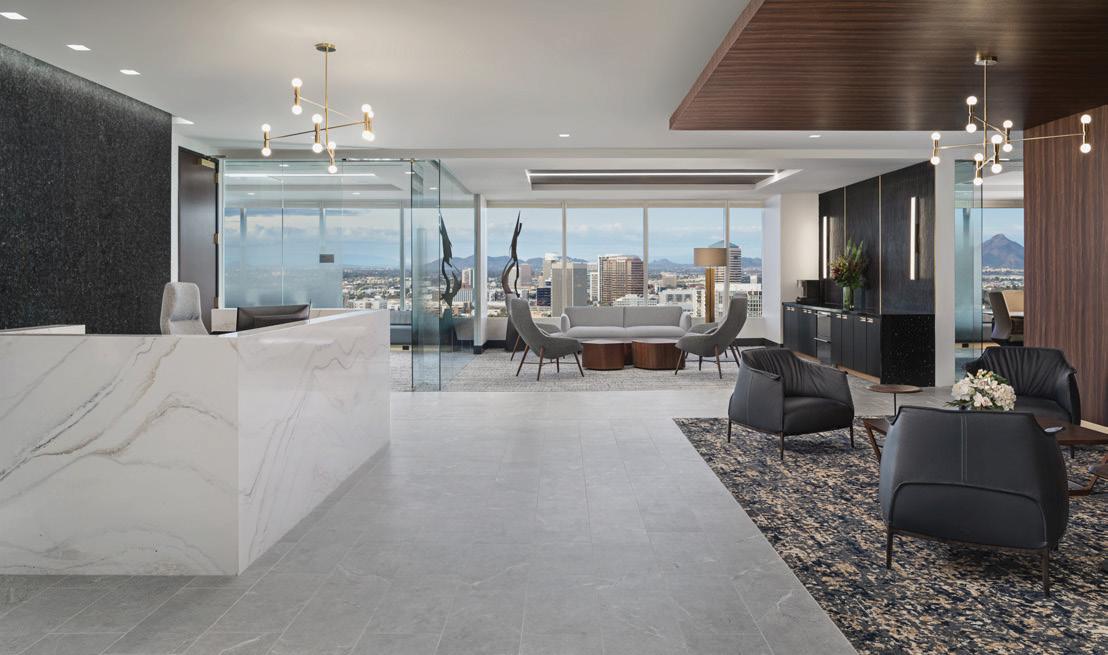

There are a lot of ways to measure success. One metric that speaks for itself? Decades. We’ve been building excellence for over 30 years.
With a portfolio of success in every category of commercial construction, we’ve built a depth of experience and breadth of expertise equal to any challenge. Count on our experience. Rely on our strength.

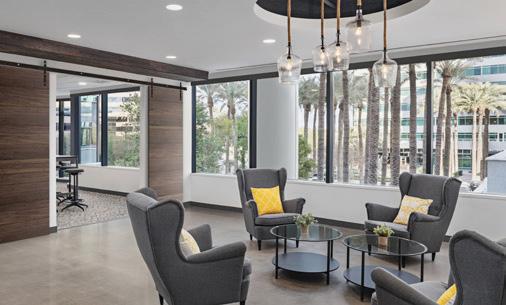
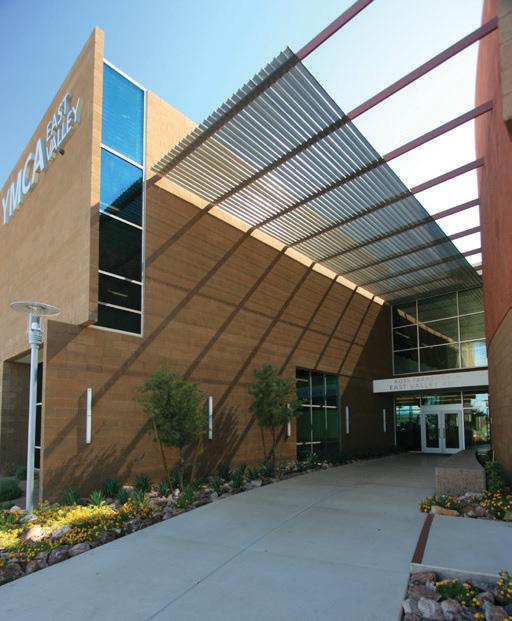
Adam Lazenga leads a talented real estate and construction team on Coen Markets’ first-ever new-build projects
By Natalie Kochanov
Adam Lazenga first joined Coen Markets Inc. in 2018 as a financial analyst. Today, as the convenience chain’s director of real estate and construction, he continues to draw on his understanding of finance to make key decisions for the business.
“I got to start behind the scenes in the office and slowly evolve to being out in the field,” Lazenga explains. “Having that extra knowledge allows me take a step back and evaluate our projects to make sure we’re embarking on ones that will be successful, versus ones that may not offer as high of a return or that may have greater risk associated with them.”
In recent months, Lazenga has turned his analytical mindset toward an unprecedented challenge: Coen’s inaugural ground-up construction projects. While navigating the complexities of the new-build process
with the support of his dedicated team, he also strategizes around the organization’s long-term growth in the Pittsburgh region and surrounding areas.
Prior to coming on board at Coen, Lazenga studied finance at the University of Pittsburgh, where he played college football in addition to earning his bachelor’s and master’s degrees. He went on to gain experience in the valuation practice at accounting firm BDO USA before deciding to venture out into the industry—at which point he connected with Coen.
In his early days at the company, Lazenga’s work centered around financial reporting and analysis, budgeting, and corporate development. “My initial responsibility was to evaluate what was in place and come up with new tools and new products to get in front of senior leadership,” he says. “It was a lot of
“I try to get my staff trained up to a point where they feel comfortable and where I can trust them to take an assignment from the start, ask the appropriate questions, and work independently—but I still like to get my hands dirty behind the scenes when necessary.”
upstart work in the department and, with that, a lot of freedom and flexibility to design it in the way I envisioned.”
Lazenga grew within the finance and accounting department over the next few years, ultimately stepping into a manager-level role. “Toward the end of that role, I started to focus more on our real estate portfolio, our real estate acquisitions, and our remodel and construction projects,” he says. “I was not only looking at the models behind those projects from the financial analysis side, but also going out in the field to see some of the projects and get exposed to the operations side.”
In particular, Lazenga cites the acquisition of a 35-store chain as a major inflection point for Coen. That acquisition, along with the acquisitions of multiple single-site stores and the divestitures of others, shaped the company into what it is today.
“Over the last three or four years, we’ve been able to remodel and rebrand 80 to 90 percent of our portfolio,” Lazenga says. “That has required a lot of planning and effort from not just myself but a lot of people in the office. It is definitely a collaborative effort here at Coen.”
His current role, which he has held since early 2023, allows him to spend even more time managing projects and people alike. On the people front, he offers his team members ample opportunity to take the lead, whether in the office or out in the field.
“I believe in working together rather than practicing a top-down approach to leadership,” he emphasizes. “I try to get my staff trained up to a point where they feel comfortable and where I can trust them to take an assignment from the start, ask the appropriate questions, and work independently—but I still like to get my hands dirty behind the scenes when necessary.”
Lazenga has had plenty of chances to do just that amid Coen’s pivot from remodels to ground-up construction. Unlike remodels, new builds often require sign-offs from regulatory bodies like the Pennsylvania Departments of Transportation and Environmental Protection on top of the standard zoning and building permits.
“We have two pretty large competitors in our area who are also looking to build new sites,” Lazenga adds. “Trying to find good locations— good dirt—for us to build on with that local competition is tough, but we’re hoping to get started on
two or three new-build stores . . . and have a nice list going into 2024 and 2025.”
He takes his cues for the future from Charlie and Andy McIlvaine, Coen’s third-generation family owners. “They have a vision for the company, and I would like to do whatever I can to support that vision,” he confirms. “I’d like to get to a point where we’re building 5 to 10 new stores per year. Toward the end of the decade, that’s where we’d like to be.”
With over 65 years of combined experience, Totum Realty Advisors provides businesses of all sizes and industries creative and innovative solutions to commercial real estate challenges throughout the country. Passionate about a truly transparent and conflict-free experience, our sole focus is helping you achieve your goals. With our expertise, a serviceforward platform, and superior negotiation intelligence, Totum will exceed your expectations. Your success is the benchmark of our value and the impetus for everything we do.






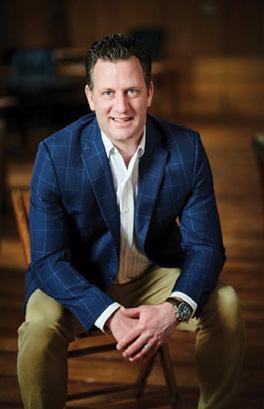

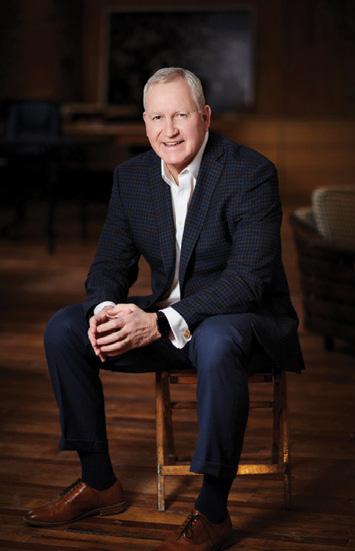



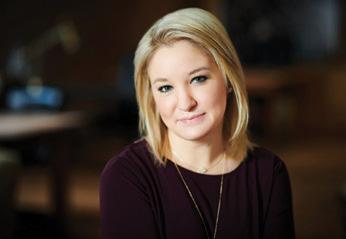





Scott Leonard takes a personal approach to securing and developing land for massive renewable and energy storage projects at Recurrent Energy
By Billy Yost
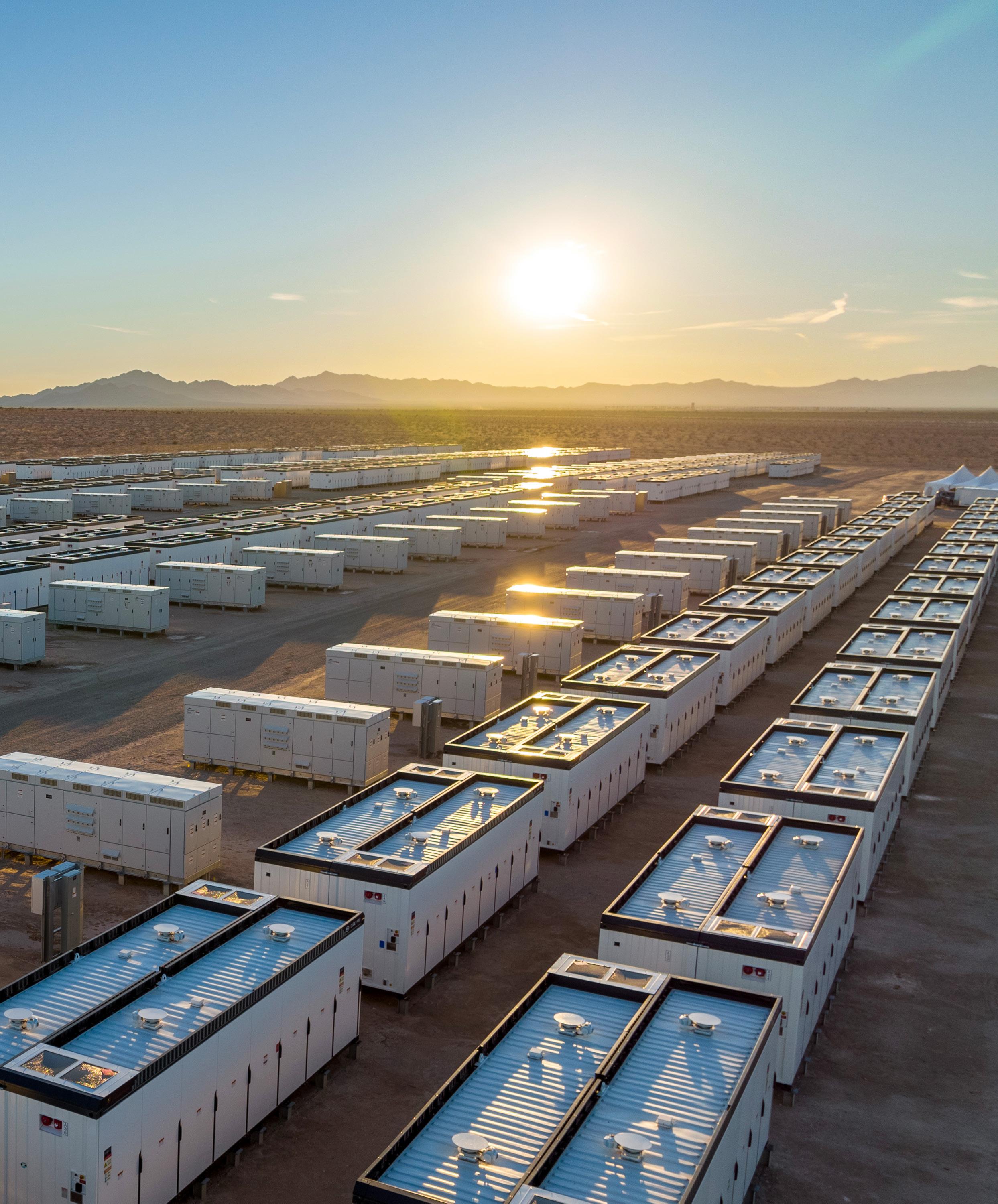
The 350 MW Crimson Energy Storage Project in in Riverside County, California, is expected to generate $19 million of long-term revenue for local infrastructure projects.
Just a few minutes into a conversation with Scott Leonard, you trust him. The associate director of real estate at Recurrent Energy is just one of those people that instantly conveys honesty and transparency.
He speaks confidently but kindly. He ruminates on a question before responding. Above all things, it’s easy to understand why Leonard has been able to negotiate and develop deal after deal for the future of renewable energy with landowners—land that may have been in their families for generations.
“In many ways, I think the real estate manager is uniquely equipped to speak with a landowner about their land because they’re going to understand issues and challenges that the landowner may not even know,” Leonard explains. “It’s a great way to bridge gaps of understanding and to get support from these folks who otherwise may not have been interested in putting a large-scale solar project on their ancestors’ lands.”
His intentional focus on building relationships directly with landowners is a unique approach, but it’s one that has paid off. While working to further a potential project in Mississippi with landowners who had no background in any kind of development other than their own crops, Leonard wasn’t just welcomed to the negotiating table—he wound up staying with one of the project’s landowners in their home.
After a delicious meal and a property tour, the landowners welcomed Recurrent’s project with open arms. It wasn’t just a closed deal for Leonard; it was a privilege and an honor to help owners who, by no fault of their own, had come to find that their longtime fields might be more prosperous producing renewable energy than continuing to battle the effects of overfarming, global warming, diminished prices, and a challenging economic climate.
“I think establishing a strong personal point of contact with landowners is critical,” Leonard explains. “I’m not sure how common that is in our industry. I feel like there are often so many people speaking with a landowner when they would actually prefer talking to someone who already understands their land. That’s how you build traction and trust. We have a great team here at Recurrent, and we all try to foster great relationships with all external stakeholders.”
Furthermore, it’s how a company can cultivate buy-in from the broader community. When communicating one to one, Leonard finds it drastically easier to get suggestions from landowner relationships for people and companies who can be hired on as subcontractors for the project. He notes that local workers usually understand the land, the region, and the stakeholders better than any national team

who moves in to do the work. It’s a win-win, and it makes relationship-building critical.
The projects continue to be incredible in their scope. On Leonard’s first day at Recurrent nearly eight years ago, he became part of a team that would ultimately create the world’s largest single-phase battery in existence. Crimson Storage, located in the California desert on property owned by the Bureau of Land Management (BLM), was the first standalone energy storage project to be approved on BLM lands by the Biden-Harris administration. The project went online in October 2022.
Recurrent Energy has many other solar and storage projects in the pipeline, all in different stages of three-toseven-year development and construction. While renewable energy and battery storage projects are the hot topic of the decade, Leonard says it’s essential to realize that energy companies of all stripes have a part to play.
“There is room for everybody here. We all deserve a seat at the table,” Leonard says. “I think a lot of what many companies might see as competitors are actually collaborators. We understand that we’re all working toward the same goal. There’s an unwritten rule in the energy space that you need to work together and, most of the time, I think we’re all on the same page.”

At first mention, it might seem strange that Leonard’s success in real estate and energy can, in part, be traced back to a New York University degree in experimental theater. He spent years as an actor in New York City, paying the bills with word processing gigs at law firms. The responsibilities kept expanding, and before he knew it, Leonard had spent 23 years in real estate law.
The degree makes sense after the fact. Leonard’s poise, his eloquence, and his demeanor aren’t a put-on. They’re the byproduct of a professional who continues to hone his craft. His passion and involvement in the theater continue to this day, as does his uncanny ability to connect with people of all stripes, helping create a more sustainable future for their families and the world.
◀ The Sunflower Solar Project sits on 1,000 acres of land in Sunflower County, Mississippi, and will provide 115 MWp of power.


In 2023, Waterton planted its flag in old and new markets while its strong leadership team purposely steered investor relation efforts
By Joseph Stark
Simply put, Waterton had a successful 2023. The real estate investment and property management company focused on multifamily senior living and hospitality properties continued to strengthen its leadership team and is currently worth $10.7 billion in real estate assets. American Builders Quarterly reflects on how Waterton is standing out from the competition.
In March 2023, the company announced it would reenter the Seattle market by acquiring a 123-unit, garden style apartment complex in Kirkland, Washington. Referred to as 128 on State, the property will offer a mix of renovated studio, one-, and two-bedroom apartments. Kevin Ibasco, vice president of acquisitions at Waterton, said the company was looking forward to replanting its flag in the Seattle metro area. “128 on State will be a great addition to our portfolio,” he said in a Wateron press release. “The property is in a core location on the Eastside, walkable to all of the lifestyle amenities in downtown Kirkland, and proximate to the metro’s largest employment centers. The Eastside benefits from favorable apartment fundamentals and we hope to grow our presence in the region in the near future.”
In addition to reentering the Seattle metro area, Waterton has made strides in breaking into the Philadelphia metro market by acquiring the Point at Glen Mills. Waterton will rebrand the property, which consists of
five four-story midrise buildings, and update its residences and common areas. Some of those additions include new construction-quality finishes, mobile kitchen islands in residences that don’t already have them, additional counter space, faux wood blinds, and a technology package. Updates to common areas will include a new pickleball court and refreshed work spaces designed for remote workers.
The Point acquisition came as a way to “expand [Waterton’s] East Coast footprint,” Jeremy Stern, vice president of acquisitions, told What Now Philly “We believe the location, in terms of proximity to employment and access to the Garnet Valley School District, made the Point an attractive addition to our portfolio, while the large, open floor plans provide attainable access to rental housing relative to the cost of homeownership.”
A key member of Waterton’s leadership team is Roger Remblake, vice president of facility management. In his position, Roger oversees operations, facilities, portfolio management, and risk management. Since joining the organization in April 2022, Remblake has utilized a collaborative, cohesive, and encouraging leadership style with both external and internal partners, a quality that he attributes to much of his success.
Another key member of the leadership team came on board in May 2023. Matt Porath serves as senior vice president of investor relations, bringing nearly a decade of investor relations, housing research, and wealth management experience to the role. He is also responsible for leading the company’s multifamily fundraising strategies in Europe and the Middle East. Prior to joining Waterton, Porath was managing director of investor relations at Citymark Capital.
“We are excited to welcome Matt to the team,” said Michelle Wells, managing partner of investor relations of Waterton, in a statement. “Matt has great energy and integrity—with exceptional multifamily experience and investor and consultant relationships. He will be a great addition to the Waterton team, and we are confident that he will help elevate our robust investor relations practice.”
June 2023 saw the national real estate investor and operator acquiring a 321-unit apartment community in Plantation, Florida, called One Plantation. The 12-story apartment tower will undergo upgrades, which include
new flooring, countertops, and appliances in its residential units. Waterton also plans to enhance the property’s existing clubhouse with a variety of meeting spaces, upgrades to fixtures, furniture, equipment, and to Wi-Fi connectivity.
In a press release, Julie Heigel, senior vice president of acquisitions for Waterton, said the property upgrades will help attract professionals and families in the area, which is an access to several employment nodes.
“One Plantation offers residents an expansive amenity package as well as a variety of well-thoughtout floor plans,” Heigel in a statement. “The on-site clubhouse and parking garage are also attractive to a variety of renters who are increasingly priced out of more expensive markets such as Miami and West Palm Beach. It’s a great opportunity to add a high-density product to our Florida portfolio.”














The Sherwin-Williams Company delivers the best in paint and coatings products to the world. Every day, our more than 64,000 employees provide the energy and experience to build on our track record of success – enabling us to innovate and grow in new and exciting ways. With our people as the foundation of our Company, we o er industry-leading innovation, value-added service and expertise, and di erentiated distribution to our growing base of professional, industrial, commercial and consumer customers.
www.sherwin-williams.com
It’s a good time to be at the multibillion-dollar freight logistics company Arrive Logistics, no matter which tech hub the latest facility has landed itself
By Will Grant
Founded in 2014, freight and delivery logistics company Arrive Logistics has quickly established itself not just as a top performer in its industry, but as a growth-focused organization that hasn’t underdelivered when it comes to employee experience.
Over the last two years, the Austin, Texas-based transportation and technology company earned several awards lauding its culture and commitment to both its employees and customers. In both 2022 and 2023, the company earned a coveted “Great Place to Work” certification with 89 percent of employees praising their employer, 32 percent higher than US company average.
“We are thrilled to become ‘Great Place to Work’-certified as we consider employee experience a top priority every day,” Chief People Officer Jonathan Schoonmaker said in a prepared statement for Arrive’s 2022 win. “We owe our continued success to our team of dedicated employees here at Arrive. We celebrate and thank them for all they do to earn this incredible recognition.”
Its reputation has been praised by numerous other outlets. Built In recognized Arrive in its “Best Places to Work” list two years in a row, as did the Austin Business Journal in early 2023 as a “Top Tech Employer” in a city known as a hotbed for tech innovation.
Beyond culture, the company was recognized as a “Top Food Chain Provider” by Food Chain Digest, a publication produced by Food Shippers of America, in the first year of its awards. The honor came in recognition of Arrive’s “Arrive Fresh” program which was created to assist the company’s ship -
ping partners in responsible delivery of its most time-sensitive freight.
In one year, that program bolstered its refrigerated business by 98 percent in 2021, followed by another 40 percent increase in 2022.
“Since the introduction of Arrive Fresh, we have made it a priority to collaborate with reliable partners from our network of over 70,000 carriers who understand the nuances of shipping sensitive freight,” Director of Temperature Controlled Solutions Mitchell Mazzaro said in a prepared statement. “We aim to provide the best training possible for our team, which includes an Arrive Fresh certification process required for any representative who wants to move refrigerated shipments.”
He added, “Arrive Fresh, and all of our multimodal service offerings, enable us to further distinguish ourselves as a trusted partner for our shippers and carriers, reinforcing our mission: We deliver, so you can.”
Along with all of the accommodations, Arrive has also increased its footprint, opening offices in Tampa, San Antonio, and Guadalajara, Mexico, in 2022, as well as offices in Phoenix and Columbus, Ohio, in 2023. The seven-office footprint that also includes Chicago and its Austin headquarters is a surefire sign of growth, with a strategically minded headcount expansion underway in sales, product development, data science, and business operations.
Arrive’s new cities were selected due to their proximity to carriers and shippers as well as up-and-coming tech hubs that are producing homegrown talent that often sticks close to home.
“We know a lot of people stay in Central Ohio post-graduation, so as we look to expand our local talent throughout the US, Columbus felt like a great market for us to expand into,” Scott Sandager, Arrive’s chief of staff, told Columbus Business First about the organization’s move to the Buckeye state. “As we look to expand into any new location, we’re surveying current employees to understand where they want to be.”
Wherever Arrive lands next, its spaces will continue to be developed and overseen by Director of Facilities Thomas Shockley, who is responsible for maintaining each and every new office opening. The director has proven himself more than capable in the fast-paced culture that continues to find new locations in which to thrive.
The investments make sense given Arrive surpassed its personal revenue best of $2.35 billion in 2022. With
an ever-expanding footprint, billions in revenue, and a growing trophy case to show off, the 2014-founded company has truly arrived.
Xpress Team offers an impressive range of services, making it an ideal choice for businesses. Whether you’re looking for commercial moving, furniture installation, facility management, or warehousing and logistics services, Xpress Team has you covered. Their team of experts is experienced in handling everything from office and industrial moving to laboratory and medical equipment moving. They also offer furniture maintenance, custom millwork, and cabinetry, and lighting and electrical installation services. With their focus on personalization, professionalism, and quality, they are a reliable partner for any project. Contact them today to learn more about their services and get a free quote.


























































































Exploring new and renovated facilities across the industry, from buildings to work spaces, along with the people and companies behind these projects
Jeffrey Baker designs and creates a drivethrough experience tailored to optimize specialized service at Rita’s Italian Ice
By Frank DiMaria
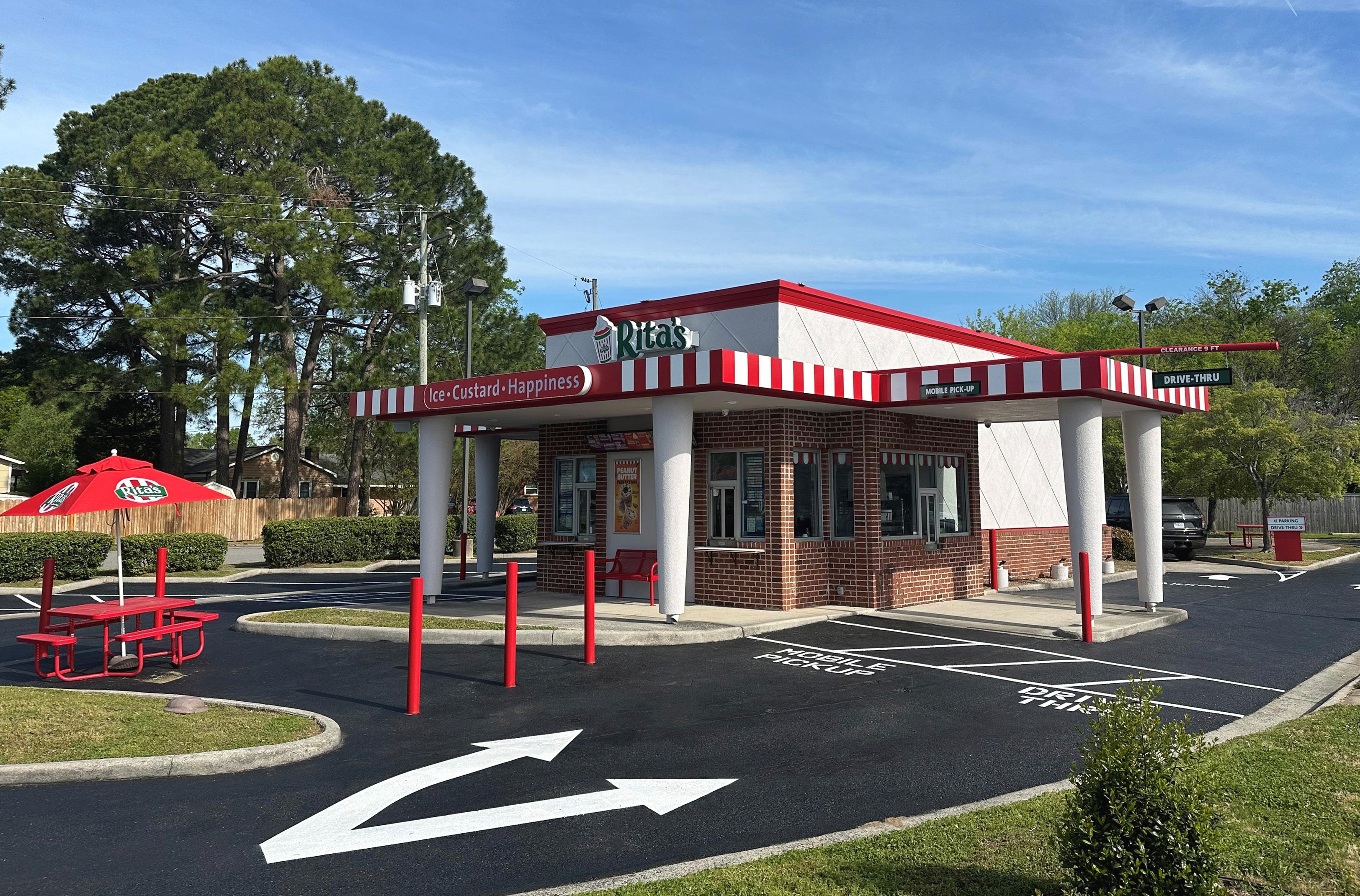
To Jeffrey Baker, the phrase “drive-through” conjures up an image of a minivan crammed with Little Leaguers eager to celebrate a victory with a sweet, refreshing Italian ice. “How do we properly get our customers these treats in a timely fashion?” asks Baker, senior director of construction at Rita’s Italian Ice.
Baker spent the better part of 2022 thinking about this question and teaming up with industry and subject-matter experts to develop a set of guidelines and standards particular to Rita’s drive-through operations, which are far different than many fastfood restaurants.
“If you go to a McDonald’s, Burger King, or Taco Bell, their service standards are going to be quite different than ours, because we’re serving a custom-made product/treat that takes time to prepare,” Baker says. “When the customer orders, we can’t have a final product made and ready to go, like a hamburger, cheeseburger, or a taco.”
“Our first consideration will be: can the shop service a drive-through? With real estate costs and site acquisition costs, it will be on a case-by-case basis.”
In 2024, Baker is overseeing an ambitious initiative that will retrofit many existing Rita’s shops with drivethroughs, while also building 40 new locations, some with drive-throughs. “Our first consideration will be: can the shop service a drive-through? With real estate costs and site acquisition costs, it will be on a case-bycase basis,” he says.
To further enhance the guest experience, Rita’s is implementing digital components to its menu boards. Proprietary in-house software will operate the boards to display limited time offers, order confirmation, and updated flavors in real time. This enhancement will not only help guests navigate the delicious offerings, but also make it easier for franchisees to make changes on the fly.
Coming out of the pandemic, Rita’s, like other brands in the sector, realized it needed to enhance its customer offerings by providing services of third parties, like Uber Eats, Grubhub, and DoorDash. With that in mind, Rita’s has elaborated on its shop design to improve that part of its operation.
“We want to expand our customer base to include anyone who might not be able to physically come to our shop but still wants a delicious treat and wants to have somebody pick it up,” Baker says. Third-party drivers will have dedicated windows, parking spaces, and freezers so they spend less time at the shop, thus improving the overall customer experience and enticing customers to order from Rita’s time and time again.
Baker’s biggest challenge at Rita’s is assisting the franchisees with supply chain logistics. Although it has improved recently, the opportunity is still staying in the know of supply chain challenges and getting in the queue with lead times.
“If you go to a McDonald’s, Burger King, or Taco Bell, their service standards are going to be quite different than ours, because we’re serving a custom-made product/ treat that takes time to prepare.”
Because the development of the shop is a major investment for franchisees, it’s paramount that proper planning and estimates are accurately forecasted. Baker is involved in educating franchisees on the development process and overall costs to build out and optimize Rita’s shops.
A 34-year seasoned veteran of the construction and quick-service restaurant industries, Baker began his career with McDonald’s Corporate managing restaurant ground-up construction, and special venue programs for colleges, hospitals, military, and transportation tollways. His other construction-related experiences include building and designing facilities for Burger King, Dunkin Donuts, Dollar Tree, and Dessange Group of North America, as well as the US Department of Defense for high-level security projects.
He advises those starting off in development to realize this type of career is a journey and in order to be successful, you must realize relationships are built one project at a time. For Baker, truth, integrity, and honesty are not just words, but the foundation for building a solid career in development.
One would think that managing a large government project with 136 direct reports would be most difficult, but the real challenge is managing the crew as well as logistics that are involved with working in a 1,000-square-foot box where there is very little real estate to occupy. That’s where real leadership qualities are demonstrated. Rita’s Franchise Company does that every day.
Good leaders and employees are human and will make mistakes, fail, or fall, but a good leader stands in the gap, takes responsibility for the mistake or failure, learns from that mistake, implements change to resolve or remedy the mistake, and finds an amicable solution.
For Baker, part of the Marine’s motto, “improvise, overcome, and adapt,” always helps bring resolution.

Family-owned and operated K-B Lighting Manufacturing Company Inc. began operations in 1946 in Philadelphia. Still located there today, K-B Lighting continues to supply the region with high-quality lighting products at competitive prices. K-B has been an innovator of lighting technology, producing numerous long-lasting, high-efficiency, and costeffective lighting products for today’s markets.
Eric Hall lives out his childhood dream of constructing the environments for Zoo
Atlanta’s animal species to interact safely with millions of curious visitors
By Noah Johnson
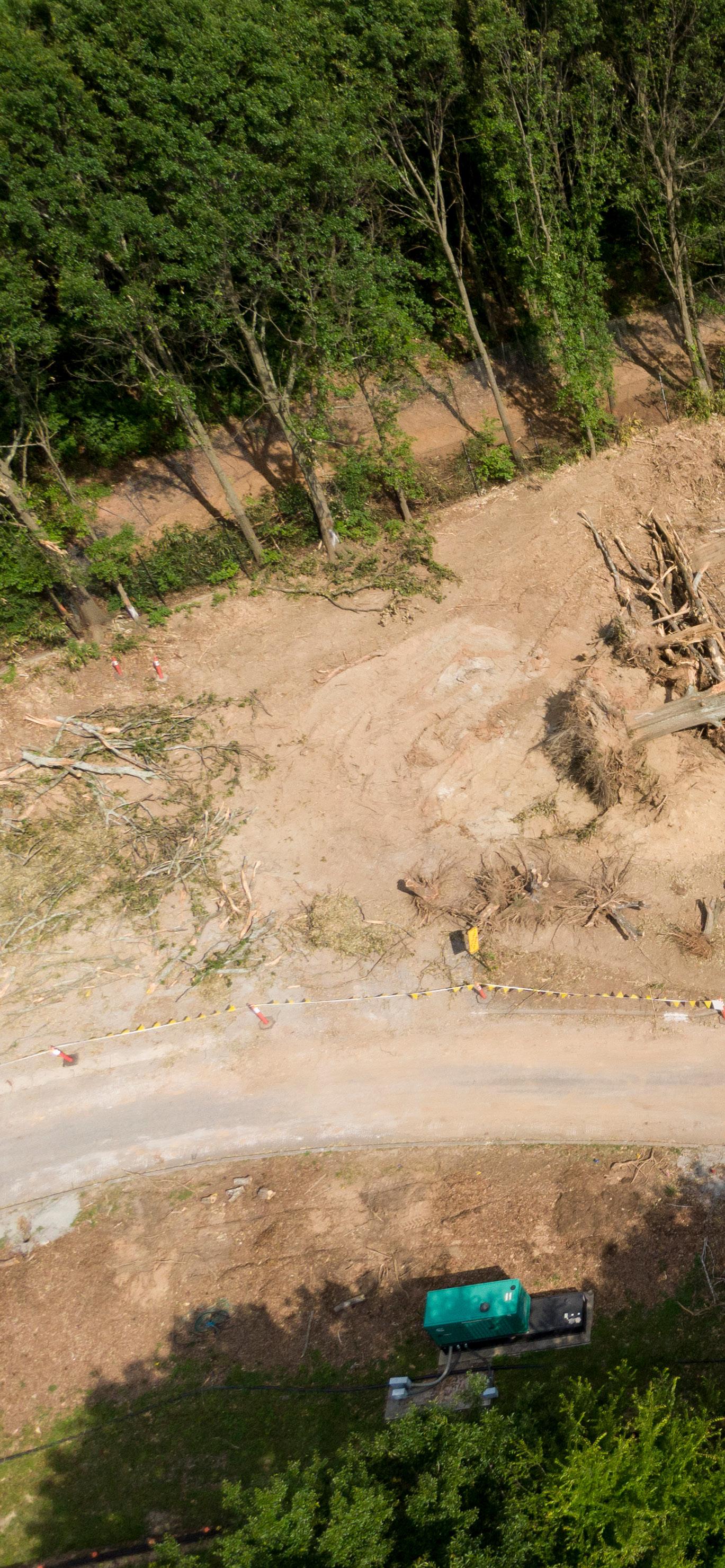
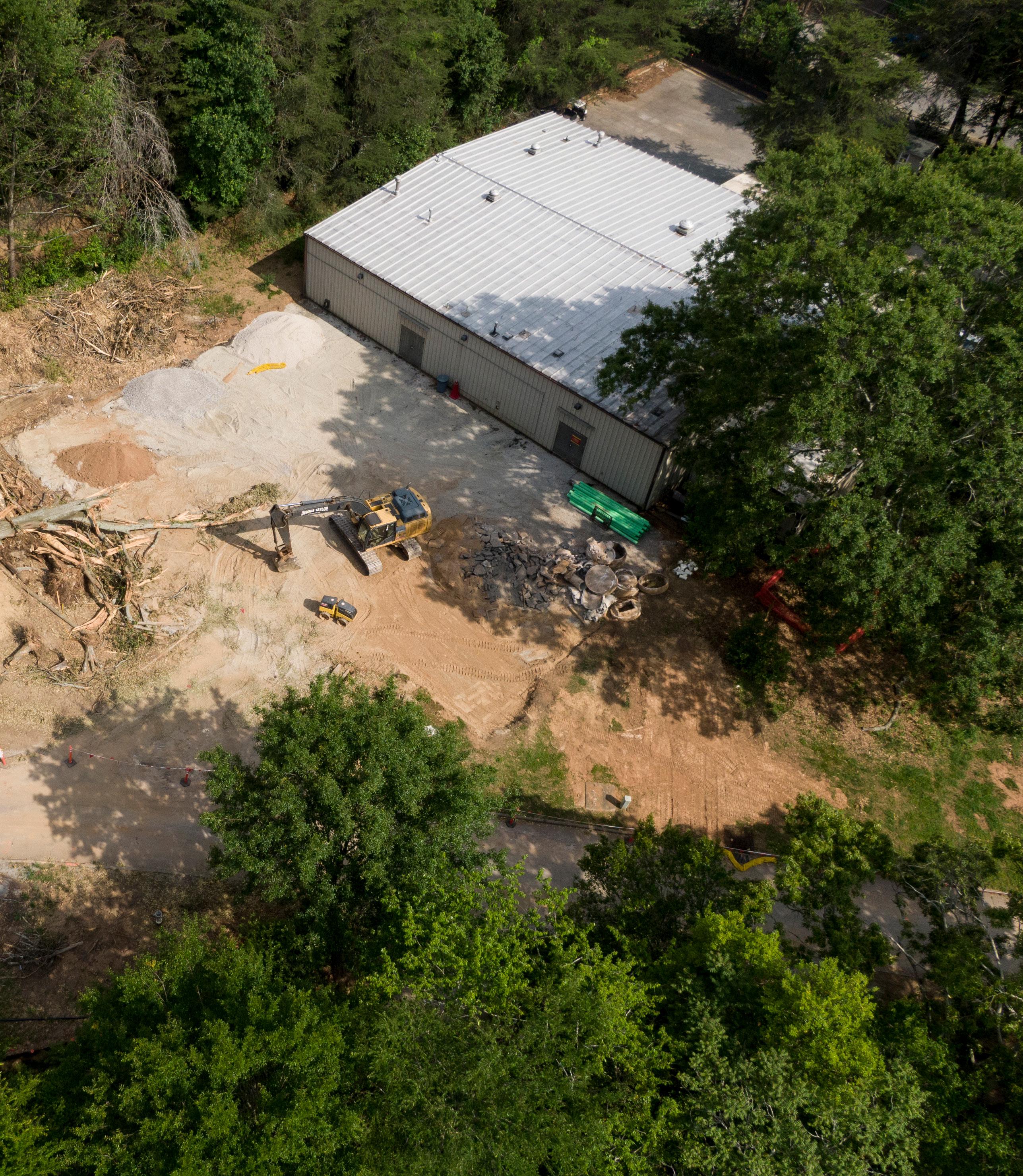
Construction is in progress for the Animal Health Center, expected to open in fall 2024.
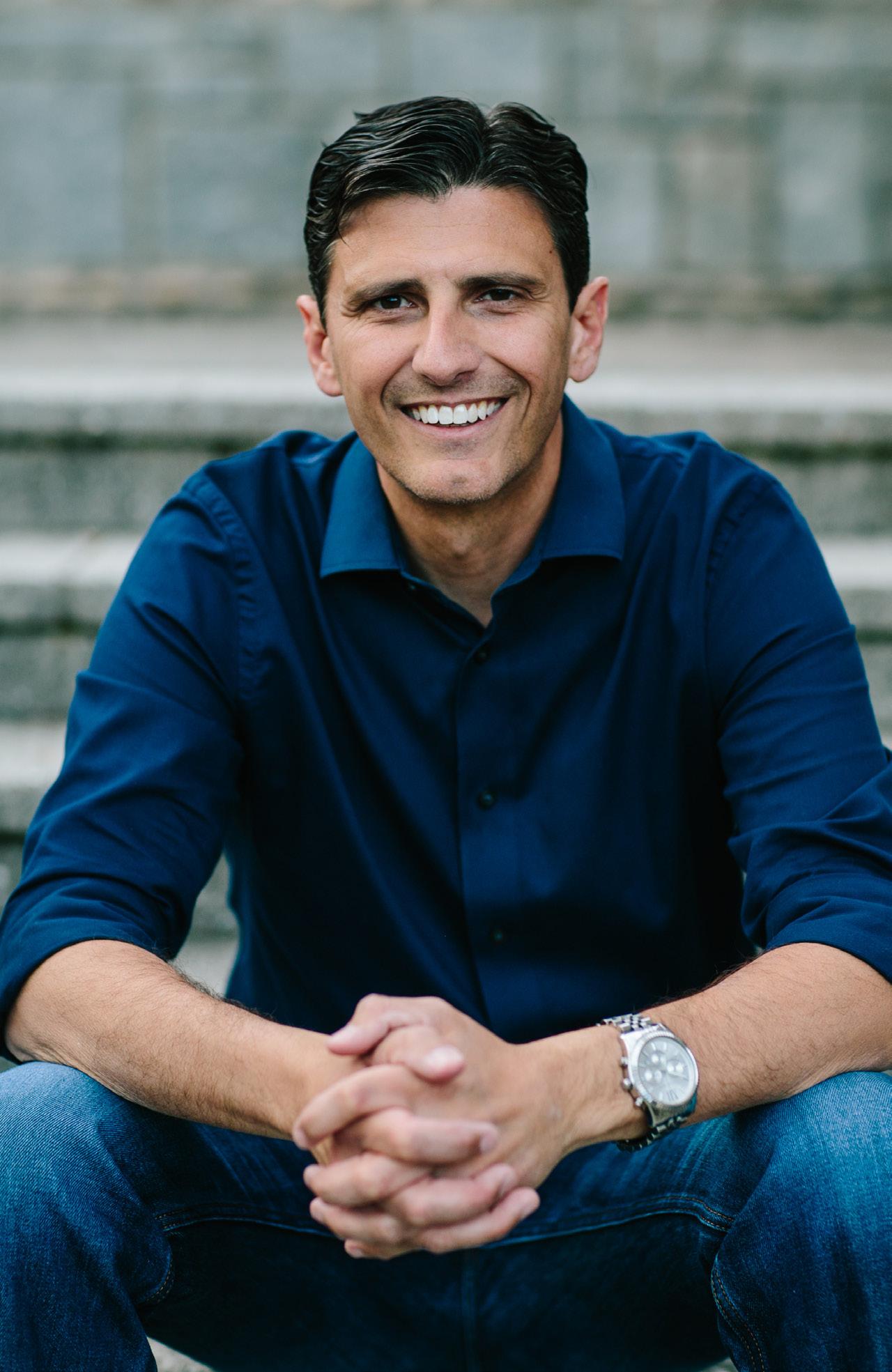
Eric Hall VP of Facilities & Construction Zoo Atlanta
When a 10-year-old Eric Hall visited the National Aquarium in Baltimore with his dad, he felt like he was on another planet.
“It felt like I was in space as I was watching these marine creatures interacting in their habitats. It was so mysterious,” he recalls. “It created an incredible fascination in me and a sense of wonder that never went away. Just like some kids want to be an athlete or a rock star, all I wanted to do was work with those animals.”
From that day on, he started keeping aquariums at home and volunteering at local aquariums and museums. It kickstarted his decades-long career of working to spark a similar sense of wonder in zoo and aquarium visitors with the facilities he’s helped design and support.
After graduating with a degree in biology and working as a heavy equipment operator in the US Air Force, Hall spent most of his career in aquatics, overseeing aquatic animal life support operations for the likes of the Georgia Aquarium, Aquarium of the Pacific, and the Virginia Aquarium & Marine Science Center. In 2019, Hall took his passion and expertise to Zoo Atlanta, whose mission to save wildlife and their habitats aligns perfectly with his.
“Transitioning to zoos was a little different for me but I find that a lot of the same principles apply,” says Hall, Zoo Atlanta’s vice president of facilities and construction. “On the operations and maintenance teams, our role is indirect as far as the conservation mission goes, but we still play an active role in ensuring animal welfare, as well as providing natural habitats from a visual and environmental standpoint.”
Hall’s time in the Air Force helped him expand on his interests in mechanics and gave him the necessary skills in machinery, automation, and other industrial equipment. “My job today has been a really interesting mix of engineering and biology,” he says. “The
“More than before, people want up-close and intimate experiences with animals, and we have to figure out how to do that while promoting animal welfare, education, and staying true to our mission.”
education, and staying true to our mission,” he says. “It’s not enough anymore for people to look through a viewing area across from the animals while reading about them. They want more immersive experiences.”
That’s why Hall and his team have aimed to transform the visitor experience by constantly finetuning habitat designs and bringing visitors closer to the animals in ways that are both safe and engaging. The team has recently renovated both of its retail spaces and is also working on future plans for improving the children’s zoo, red panda, and golden lion tamarin habitats.
As a leader, Hall prides himself on “hiring people smarter than he is,” and treating his team members like partners. He tries to create an environment where people are challenged but given creative control and freedom to make decisions, and even have the flexibility to fail. To strike that balance, Hall says you need to be a “secure leader and really care about the people you work with.”
“If you need control, you won’t do well with that style of leadership,” he explains. “For me, I keep my eyes on the bigger picture and I don’t get caught up with every little decision. There’s 100 ways to do something, but my focus is on communicating often and giving people the information they need to know to make good decisions.”
jobs I’ve had allowed me to lean on my passion for animals and that mechanical experience.”
Since he stepped into his current role, Hall’s focus has been on bringing state-of-the-art care to Zoo Atlanta’s animals with a new Animal Health Center that will be about four times larger than the current one. The 16,000-square-foot building, which broke ground in April 2023, will include a computed tomography (CT) unit, a large surgical suite, a residence for visiting vets and researchers, laboratory space, and more.
“Currently, our facilities are good but they’re a little dated; medical equipment, much like other tech, evolves very rapidly, so this is a huge upgrade that we’re really excited about,” he says. “We’re putting in a lot of new features that we don’t currently have. For example, if we want to do CT scans on animals, we have to travel 80 miles to the University of Georgia and a lot of times we have to anesthetize the animals to transport them. Being able to do the scans on-site will be a huge advantage.”
That’s not the only exciting project Hall and Zoo Atlanta have in the works. Hall says the others are connected to one of the biggest challenges zoos and aquariums face: finding new ways to engage the public.
“More than before, people want up-close and intimate experiences with animals, and we have to figure out how to do that while promoting animal welfare,
“Being a part of the design and construction of the Georgia Aquarium is one of the accomplishments I’m most proud of because of the amount of work so many great people put in,” Eric Hall says of the aquarium that opened its doors in 2005 after more than two years of planning and construction. “At the time it was the world’s largest aquarium, and it was unprecedented in terms of size and water volume. It was substantially over 8 million gallons of water all in one building, over 600,000 square feet, and it was going to have an unprecedented animal collection. Being the 13th employee hired onto that project was pretty incredible.”
General Building Maintenance was founded in 1983 with the understanding that our company’s success would depend upon our ability to produce a consistently high-quality products day in, day out. We provide complete janitorial services. Currently, we are servicing over 60 million square feet at facility and office space throughout the United States. We are proud of our work with Eric Hall and Zoo Atlanta and congratulate them on their recognition in American Builders Quarterly! Visit gbmweb.com to learn more.
Google Fiber provides up to 8 Gig internet service across the US. Dan O’Sullivan makes sure that teams have the space and support to make that happen.
By Russ Klettke
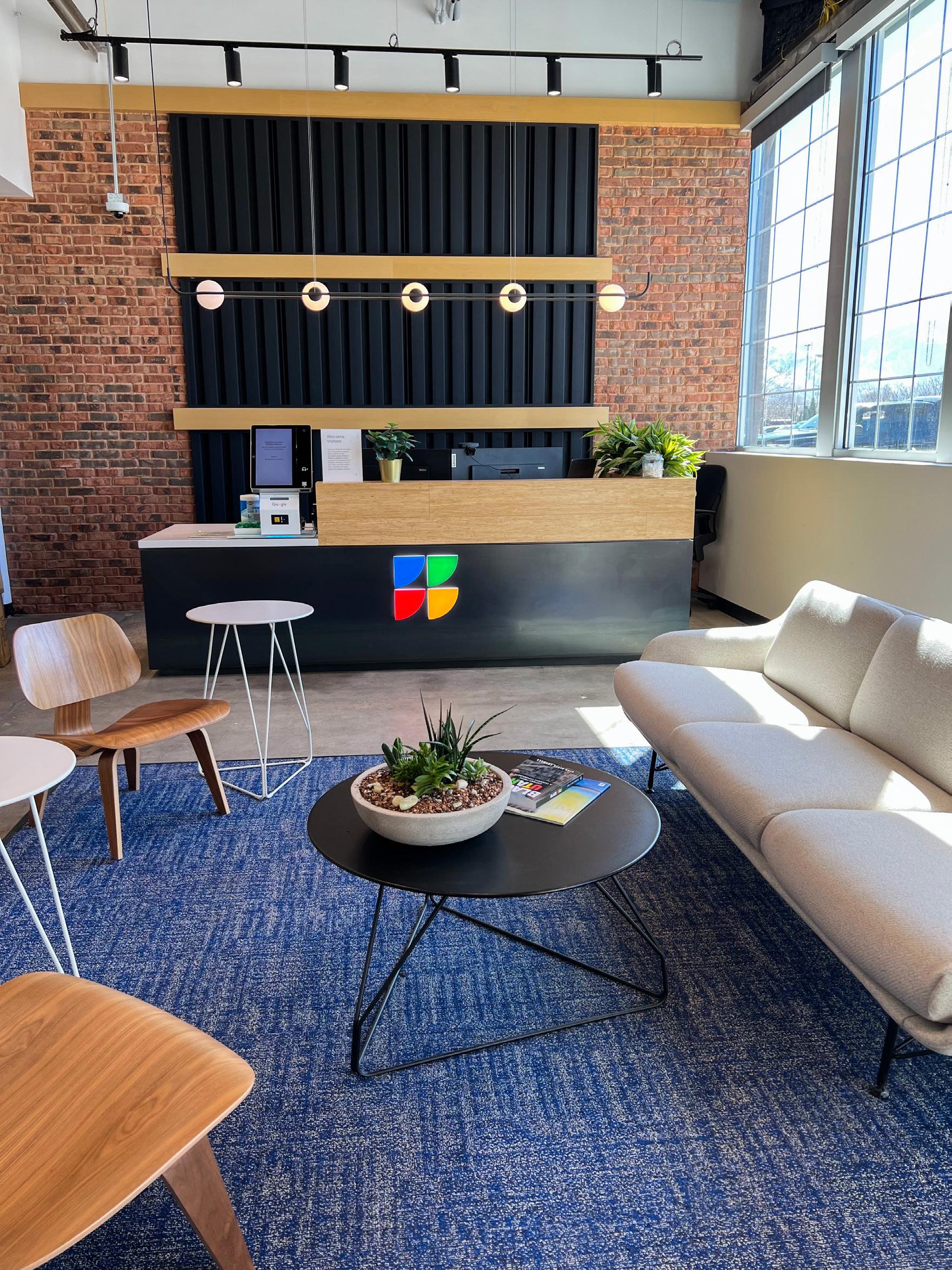
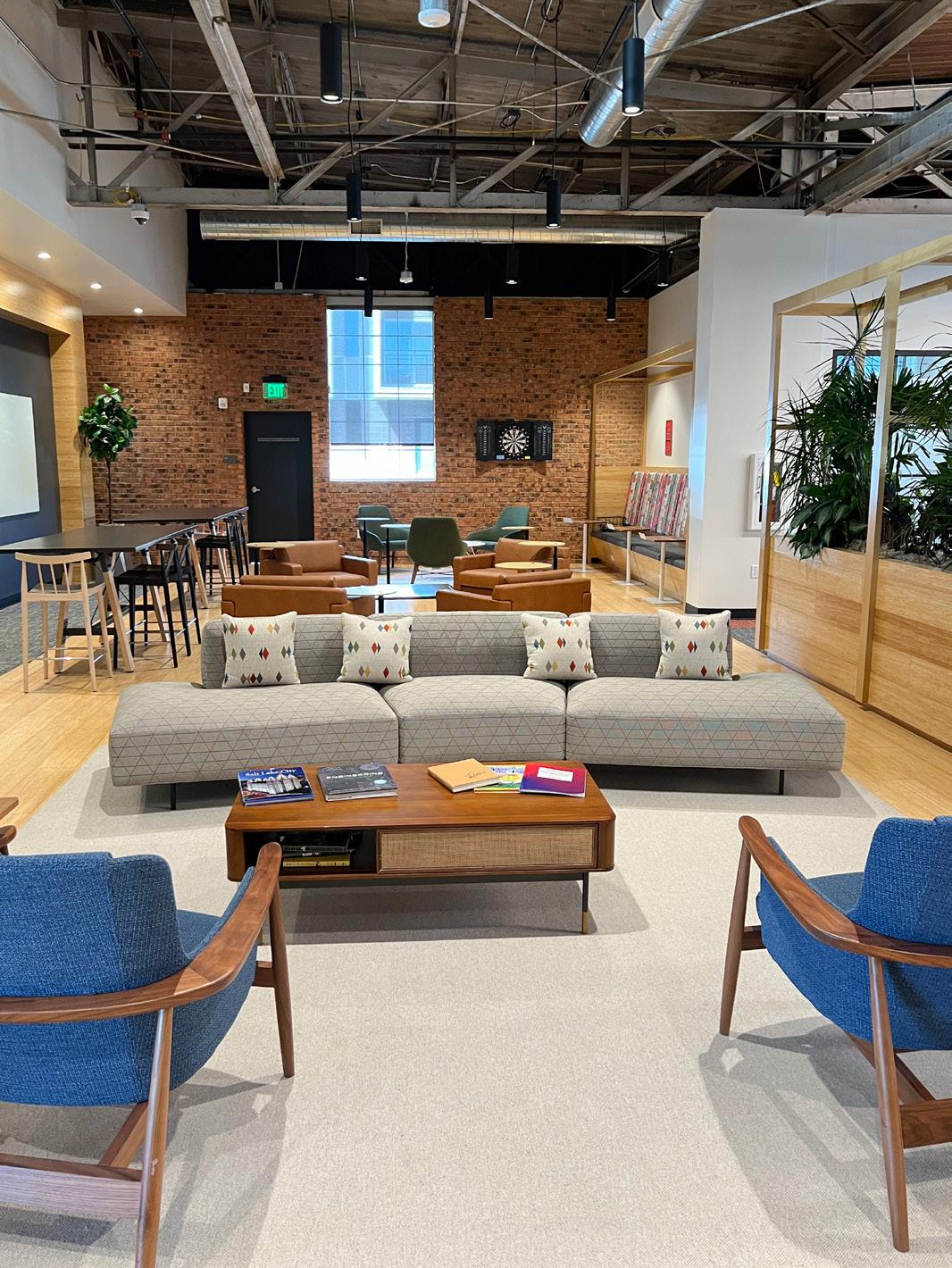

Google Fiber is in the business of delivering high-speed internet in cities across the country, and not just any internet—some of the fastest in the business. And Dan O’Sullivan is in the business of making sure the people who are building that network and ensuring great customer experience have a wonderful place to work.
As head of real estate and workplace services for Google Fiber, O’Sullivan’s job is to find and build out the office space and services in Google Fiber cities.
Getting Google Fiber is a big deal when it happens. Mesa, Arizona, celebrated its launch in March 2023, and the vice mayor and a member of the city council attended. In Mesa, businesses and residential customers can get up to 8 Gig service, which enables symmetrical uploads and downloads at a speed that is unavailable from other providers.
The benefits include quick transferals of large files, which means videos and high-resolution images load without buffering. It’s also particularly useful for hosting online meetings and webinars, again without interruptions or delays. Gamers also appreciate the speed for a seamless online gaming experience.
▶ The microkitchen includes café seating and ping-pong tables.
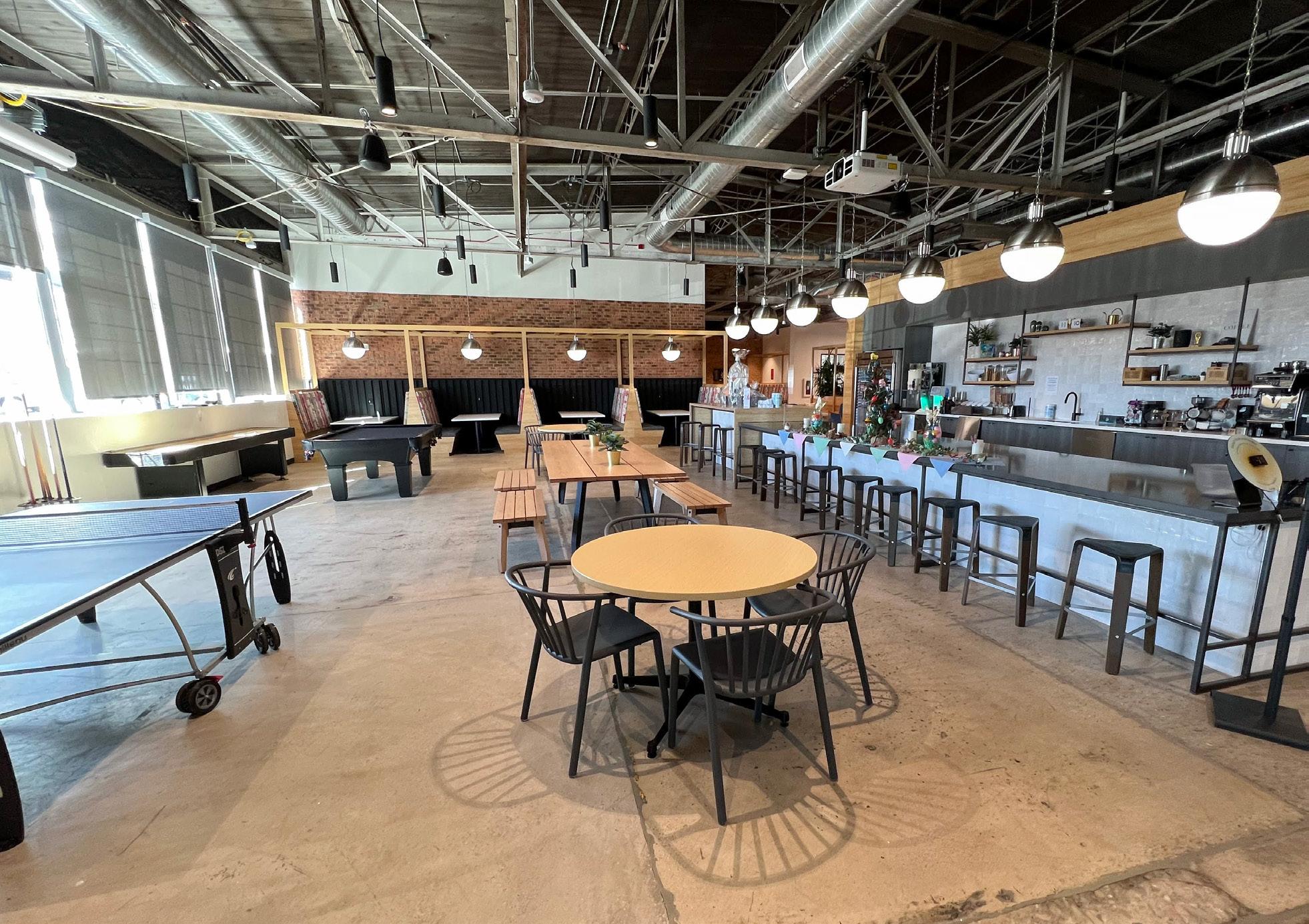
“We are in expansion mode,” says O’Sullivan, when asked about the contraction business environment that plagues larger companies in the technology sector.
When O’Sullivan begins to engage local site search teams in a market, it’s a harbinger of fast internet service coming to that area. O’Sullivan establishes the administrative beachheads in these areas. While these offices do not necessarily need landmark, central business district, or Class A structures, they have some definite requirements. These are working offices, supported by services and amenities for staff located near where their operations are focused. “We are big on being a part of the communities where we do business,” he says. That can mean offices in suburban locations as well.
Establishing a visible identity with their buildings still matters, however. “We brand our buildings and our supporting fleet vehicles,” O’Sullivan says. “It’s part of how we communicate our fast, reliable internet access is available.”
To optimize Google Fiber offices, O’Sullivan ensures it has the amenities to serve the needs and is capable of attracting quality talent. That includes identifying locations that make for reasonable commute times. It also should exceed the expectations for a modern workplace: collaborative and flexible workspaces,
“We are big on being a part of the communities where we do business.”

“We brand our buildings and our supporting fleet vehicles. It’s part of how we communicate our fast, reliable internet access is available.”
microkitchens, meeting rooms at various sizes, and secure parking ideally located near local businesses and amenities.
The culture thrives with employees who have diverse and interesting backgrounds, who are open to challenging norms, and who look for better solutions. The workplaces that his designers build encourage flexibility and collaboration. Because O’Sullivan works with local leasing agents, brokers, and facilities managers, part of his work is to educate them on what their culture needs.
“When we design workplaces for Google Fiber, we know it will be a lot of fun and an out-of-the-box experience for the project team and the users,” says Ava Alltmont, Cushing Terrell project manager for the Google Fiber offices. “Google workplaces are highly collaborative and colorful and filled with amenities that make people really happy to go to work. They’re also designed around the culture of each unique local Google Fiber team and their particular preferences and workflows, as defined with them and by them.”

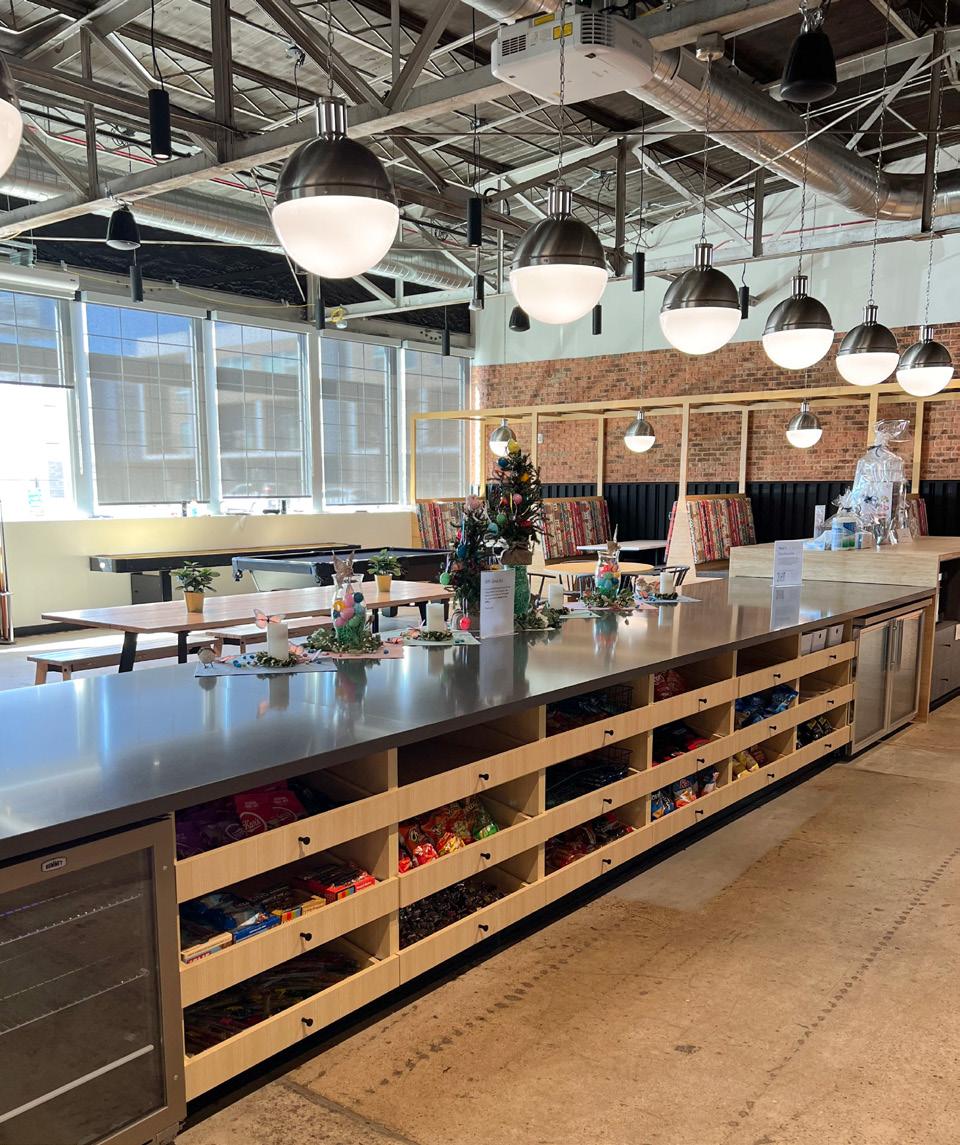
At the same time, O’Sullivan’s responsibilities include being attentive to local advice. This includes knowing if a location has extreme weather (e.g., tornadoes) and has the right physical structure to ensure employee safety.
As one might expect, the shift to virtual work hasn’t bypassed Google Fiber. O’Sullivan says it has and likely will continue to operate with a hybrid approach with some employees working both in-office and from home offices. “We’ve seen many people happy to return to working in our offices post-COVID,” he says.
This hybrid approach contributes to the sustainability story at Google Fiber. Individual employees who can cut out car commuting by 40 to 60 percent by working from home is just the beginning. But doing the green thing doesn’t stop there. The fleet of service vehicles is transitioning to electric, while other parts of the office operations and the lunch service on site are doing their part to reduce, reuse, and recycle. Google Fiber service is all about speed and so is the company’s current growth. O’Sullivan must ensure that this rapid expansion happens seamlessly for the employees making the magic of the internet happen every day—and he is there for it and for them.
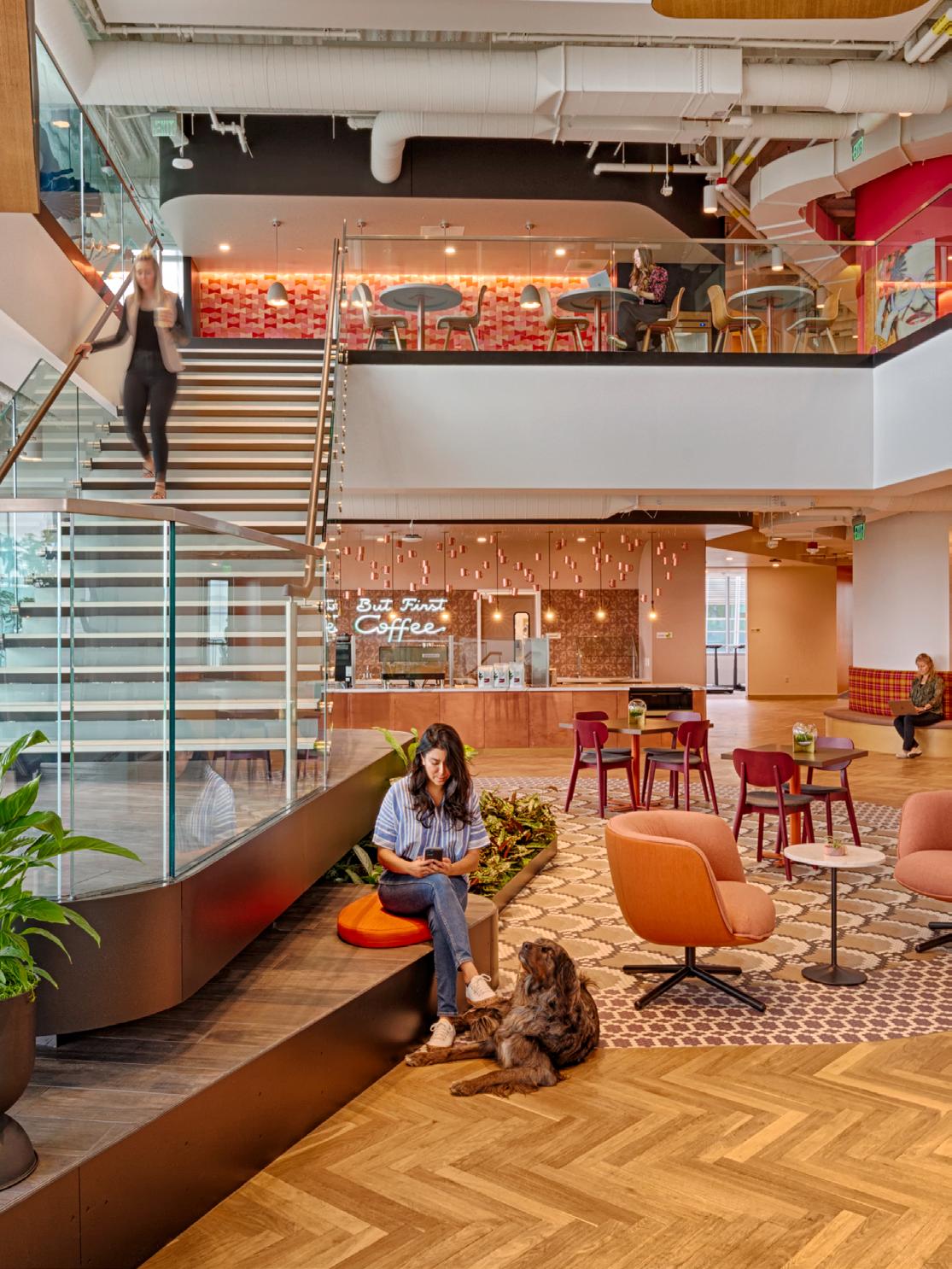

Rob Gerstenfeld leverages a new restaurant prototype to support Slim Chickens as the up-and-coming brand undergoes major growth
By Natalie Kochanov
Although he may have cut his teeth in the world of finance, Rob Gerstenfeld is now a proud veteran of the quick-service restaurant (QSR) industry.
“I was in investment banking, doing a lot of transactions and valuations across many industries, when the opportunity came up to take that same skill set to the QSR space,” Gerstenfeld says of a key turning point in his career. “I didn’t know much about the space at the time, but as soon as I got into it, I fell in love.”
Some 20 years after making that leap, Gerstenfeld finds himself at Slim Chickens (Slims), a founderowned, fast-casual restaurant chain known for its made-to-order Southern cuisine. Gerstenfeld leads real estate and construction across the organization’s network of over 200 restaurant locations—a number soon to rise as Slims continues its rapid growth trajectory.


With prior experience at QSR mainstays like Burger King and Dunkin’ Brands, Gerstenfeld brings a wealth of industry knowledge to his latest role. Still, he admits that there has been a bit of a learning curve since he joined Slims in September 2022. “It’s been getting an understanding of where they are, where they want to go, and how we can get there—and then putting that vision and plan in place,” he says. “As a growing company, we don’t want to create processes that bog us down; we want to create processes that speed us up.”
In addition to fine-tuning development, design, and construction processes internally, the team has focused on streamlining back-of-house restaurant operations. The need to accommodate a higher volume of orders through different sales channels has created the need to evolve to drive efficiencies that will deliver fresh, cooked-to-order meals for its guests.
“We rolled out our newest prototype at our conference in February [2023] which will allow us to drive more sales through the kitchen efficiently,” he says. “We’ve also included a couple of new pieces of equipment and optimized our walk-in and our storage to account for the increases in volume,” Gerstenfeld says. He notes that Slims is always looking to innovate when it comes to kitchen equipment and other technologies.
That said, Gerstenfeld must balance the goal of driving efficiency across all stages of food preparation and ordering against a commitment to preserving the brand identity. “We are always thinking ahead to anticipate changes in the industry and customers’ behaviors and
“I’m hyperfocused on elevating my team, giving them more responsibilities, and helping them grow their careers. To me, that’s the most satisfying thing you can do as a leader.”
◀ Slim Chickens opened a store at Ozark Center Point Place shopping center in Springdale, Arkansas, in 2018.
make the necessary adjustments to the business while keeping the fabric of who we are, which is Southern hospitality and fresh food,” he says. “We don’t want to drive costs down at the expense of the customer experience or the look and feel of the building.”
Over the past few years, the customer experience has broadened to include online ordering, an evolution that Gerstenfeld now factors into each Slims design. His challenge in that regard is again one of balance.
“Cost is such a major factor for the franchisees, so it’s about figuring out the right size building for the volume we’re doing now and for the volume we’re going to do as we continue to grow, all while accounting for various sales channels and customer habits,” he says.
To navigate those complexities, Gerstenfeld collaborates with not only his own team, but also fellow leaders throughout the organization, franchisees, and industry experts. A believer in getting out in front of problems before they arise, he never hesitates to step in and support his team, even as he trusts in their ability to execute independently. “I’m hyperfocused on elevating my team, giving them more responsibilities, and helping them grow their careers,” he says. “To me, that’s the most satisfying thing you can do as a leader.”
As Slims continues to expand, Gerstenfeld will have plenty of opportunities to build up his team, his department, and the organization at large. “I plan to deepen my knowledge of leading a development and construction organization and to keep working closely with leadership to accomplish our goals,” he emphasizes. “Development is only ever as strong as the company as a whole.”
CaptiveAire’s Josh Ferguson highly values his nearly 10year partnership with Slim Chickens. Robert Gerstenfeld of Slim Chickens and his highly skilled team understand the challenges of restaurant ventilation and have leaned on CaptiveAire’s expertise to source CaptiveAire’s Fresh Air Restaurant System for their new locations. This system provides unmatched indoor air quality, comfort, and humidity control in the dining and kitchen areas, while providing a worry-free operation and a healthy indoor environment. Learn more at CaptiveAire.com/FARS
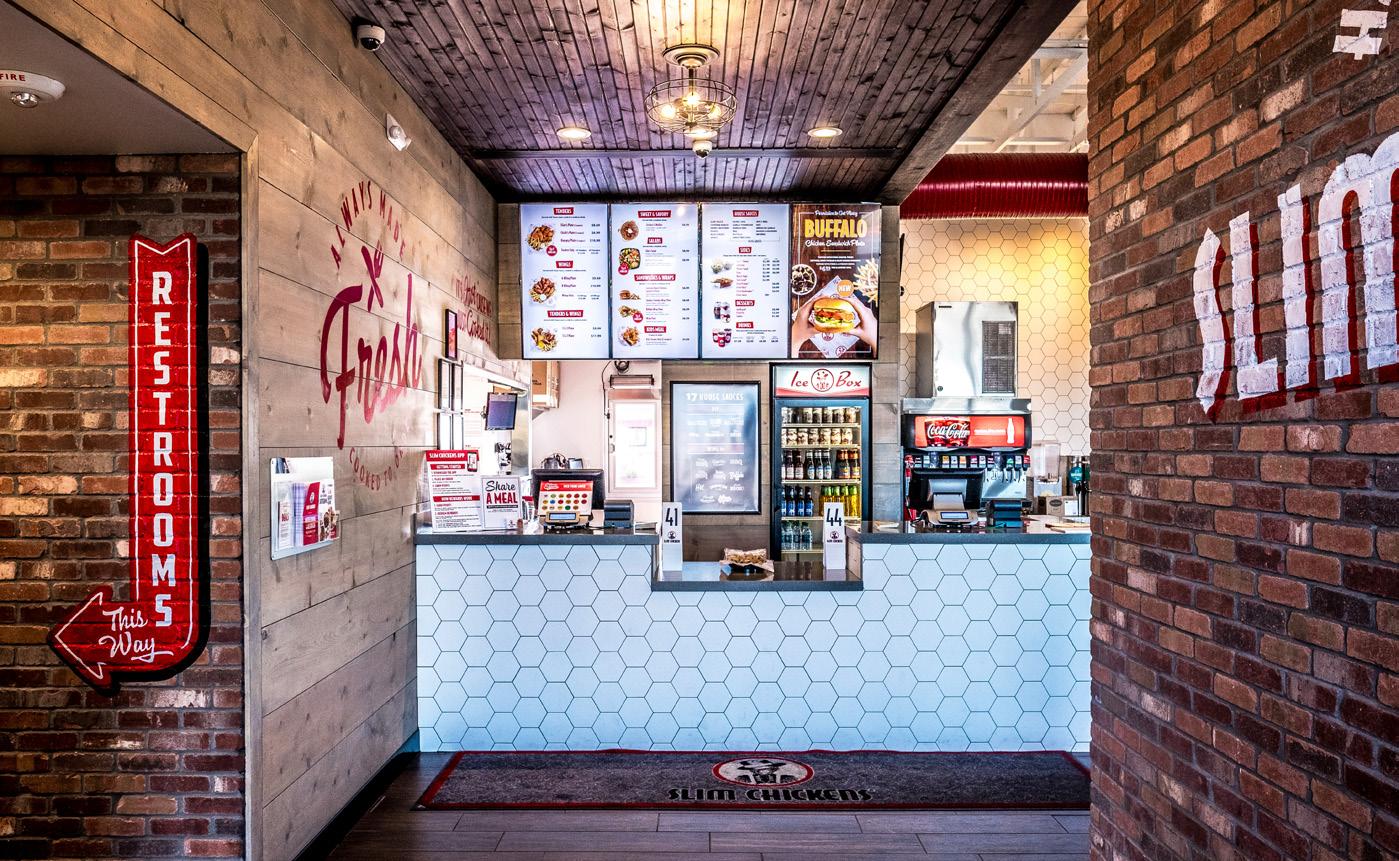
▲ The menu includes 100 percent natural and fresh chicken tenders marinated in buttermilk and breaded by hand.








































Jonathan Crane is guiding a post-pandemic reassessment of real estate for the nation’s second largest credit union
By Peter Fabris
The COVID-19 pandemic upended how people worked, and, in its wake, companies are reassessing the amount of office space they need and how that space is designed. State Employees’ Credit Union (SECU) in North Carolina, the second largest credit union in the US, owning approximately 3.1 million square feet of property, is one notable organization carefully scrutinizing all of its physical assets after the pandemic.
Jonathan Crane, senior vice president of facilities services for the not-for-profit organization serving North Carolina state employees and their families, says COVID-19 has been a catalyst for a deep recalibration of space needs. It’s clear that old models where most people worked in an office every day and had assigned cubes or offices are outmoded. SECU is embracing a new vision of a more open, flexible work environment, but the plan is still developing.
Therefore, Crane says the organization is prepared to adjust space utilization when needed.
In addition to office space, Crane’s team provides support for 275 branches, 11 operations centers, and 1,128 ATM machines throughout North Carolina. Managing these assets and planning for their future use requires monitoring the new technology adoption by members, including digital and mobile banking. These trends impact decisions, such as when and where to open branches or ATMs at certain locations.
SECU has experienced a dramatic spike in the number of remote workers. Before the pandemic, about 200 employees worked from home. During the pandemic, that number jumped to over 2,000, with some form of remote capability.
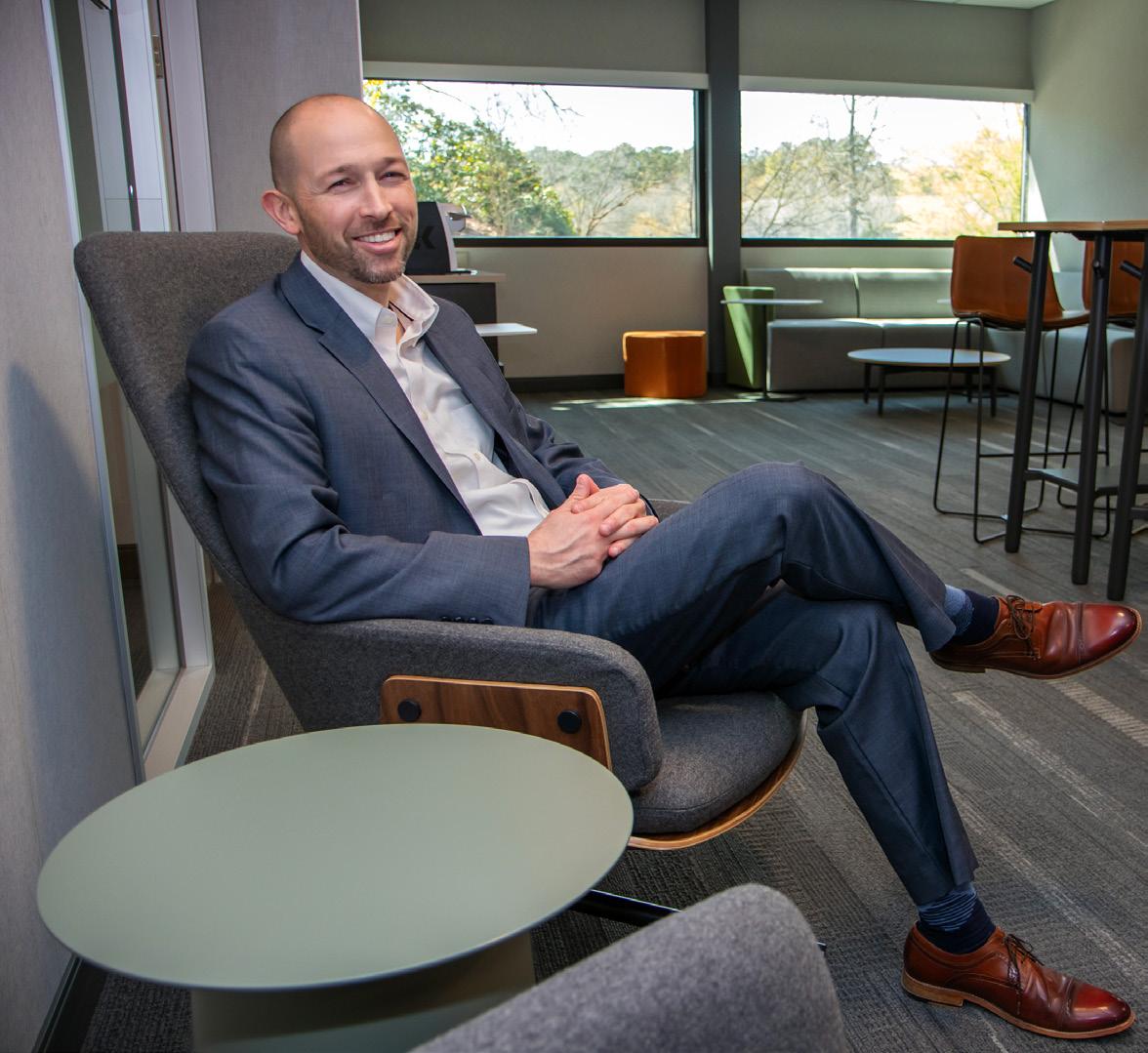
Today, many of those workers have hybrid schedules. A common arrangement for employees involves at least one week working from home followed by one week in the office. Less office space is needed to support the same number of employees, and space is being arranged differently to optimize the time spent in the office. “Before the pandemic, employees were typically assigned to specific cubicles or offices,” Crane says. “We have started working toward a hoteling model as we review future space needs in our operations centers.”
This vision includes grouping people together by function in neighborhoods. In an effort to foster more collaboration, each employee finds a space in their neighborhood near the people they would need to interact with.
Crane and his team researched office spaces at one of SECU’s downtown Raleigh operations centers accordingly. To provide areas for highly focused work, two large conference rooms were split into four rooms that offered quiet and privacy. “We are also researching soundproof booths,” Crane adds.
These enclosures can be used for one-on-one interactions, for conference calls, or for a quiet space to work. The jury is still out on whether the pod
“Before the pandemic, employees were typically assigned to specific cubicles or offices. We have started working toward a hoteling model as we review future space needs in our operations centers.”
concept will be adopted widely by the organization. “This is a pilot project,” Crane explains. “We want to see if the pods will be utilized before we purchase too many.”
A new downtown Raleigh branch project, currently in the design phase, offers an instructive look into future branch design. “It’s going to have a modern look and be infused with flex space,” Crane says. The teller counter will be composed of individual modular units that are attached but can be taken apart in the future if the branch transitions to pods.
This will allow the branch to reduce the area dedicated to tellers, as less space is needed for these transactions in the years ahead—a real possibility given the growth of digital and mobile banking.
SECU continues to highly value its ability to provide personal services to members, so should a reduction in teller transactions occur, the organization will provide other venues for interaction with members.
For instance, the Raleigh branch could include semiprivate spaces demarked by demountable partitions for members to sit with employees. These areas, apportioned with easily movable furniture, will be used for meetings between branch personnel and members that don’t require a high level of privacy.

The emphasis on space flexibility is an acknowledgment that member engagement with the credit union is in flux, and branches are likely to use the space differently in the future. One example of a new feature, Crane says, could be a digital café-like area where members could attend educational and community events or review material on products, such as estate planning resources or home equity lines of credit. Members could then speak with a representative to answer questions.
“We want to meet the needs of our members through whatever channel they choose, including in-person, self-serve,

online, and mobile. Future technology can be used to enhance these channels. Technology will not fully replace personal service, but it can be complimentary, so our members have more choices in how they interact with SECU,” Crane says. “Our goal is to be a trusted financial provider.”
Although the methods by which members interact with the organization may change, the relationship guidepost will not. Crane and his team will continue to ensure that SECU efficiently uses its real estate to serve relationships with members. As a result, the look and feel of its real estate will likely continue to evolve throughout the rest of his career.
Ellsworth Systems is honored to partner with Jonathan Crane and State Employees’ Credit Union, providing quality service and product solutions. We believe in consulting, ensuring the needs of our customers are met with the highest level of integrity.
Ellsworth Systems offers both service and sales on electronic security, drive-up/vault equipment, desktop products, ATM/TCRs, managed services, and access control/monitoring services.
Honest, ethical relationship-building is what creates success for Jonathan Crane, State Employees’ Credit Union, and Ellsworth Systems. Proud to be their preferred vendor!
COVID-19 upended how and where people eat, so Don Roberts and the Dine Brands
Global team are devising ways to make their brands accessible to customers
By Russ Klettke
▶ A rendering of the dual-branded IHOP and Applebee’s concept in Al Barsha, Dubai
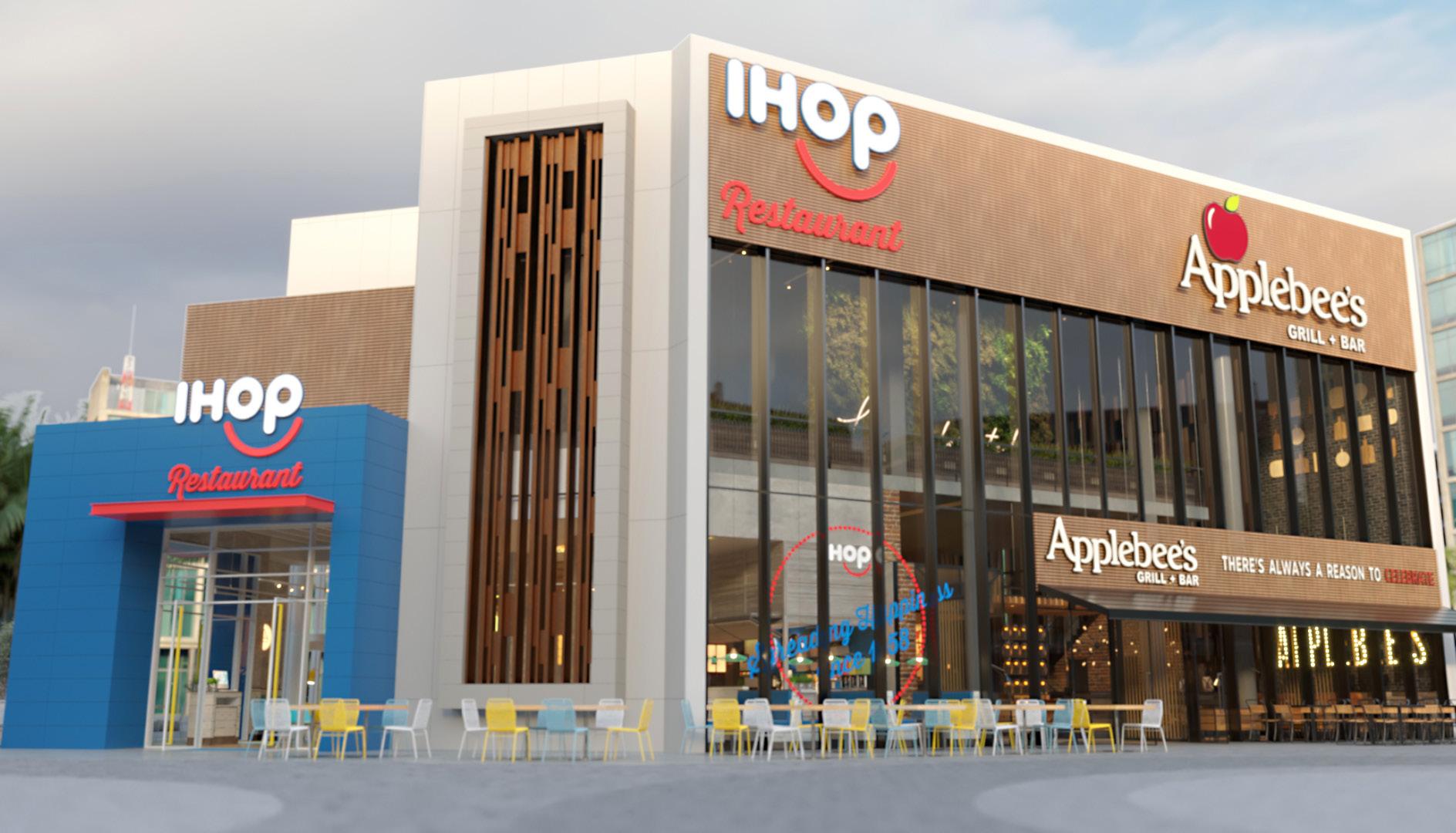
Business in general requires imagination. For restaurant businesses to make it through COVID-19, it took imagination on steroids.
Fortunately for Dine Brands Global—the parent company of IHOP, Applebee’s, and Fuzzy’s Taco Shop restaurants—that imagination was in the mind of Don Roberts and his support team of in-house designers, consultants, architects, and engineers.
As the company’s vice president of global architecture and design, Roberts has a pretty cool job—and he revels in it. He has an impressive education and job history for this responsibility, which is to create places where good food is made and served. But, just as importantly, he doesn’t forget why those restaurants are there: to serve guests, communities, and the franchisees, who bring these profitable businesses to life.
Roberts credits his fun childhood and his parents for fostering his love for design from an early age. “I grew up in Southern California and the aha moment for me was walking down Main Street in Disneyland,” Roberts says. “I realized things like this don’t just happen on their own. How did that castle get there? How did they decide on those colors? I recognized everything was intentional. And I said to myself, ‘One day I’ll figure out how this works.’”
Another childhood experience with Hot Wheels, the scale model cars, helped him understand placemaking. “Here was this set of wheels, and I had to figure out where it was going,” Roberts says. “I created neighborhoods to
“I realized things like this don’t just happen on their own. How did that castle get there? How did they decide on those colors? I recognized everything was intentional. And I said to myself, ‘One day I’ll figure out how this works.’”
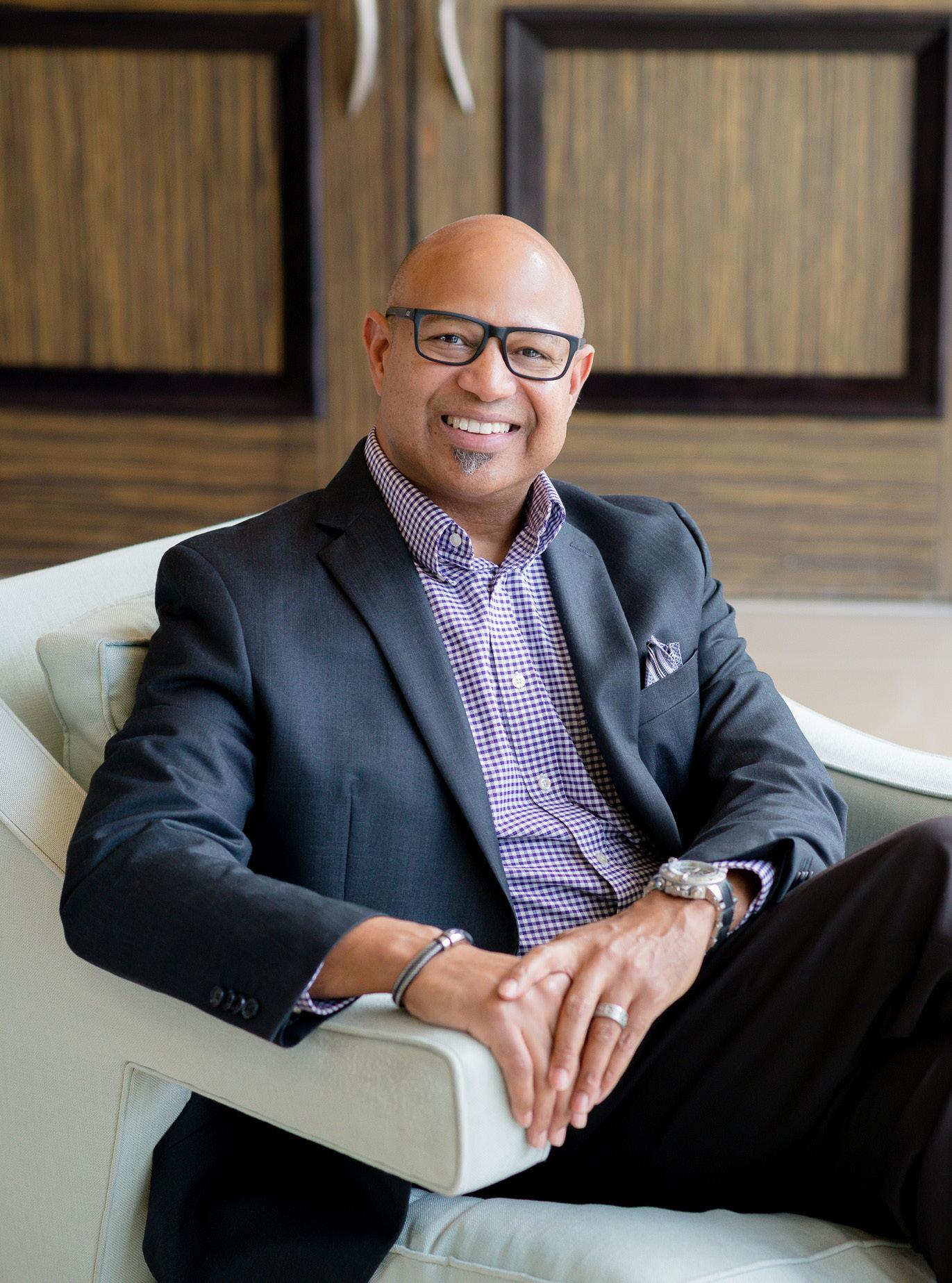
drive in with dirt and tree leaves. It was a 3D world of sights, sounds, smells, and temperatures.”
With this love of design, Roberts would later land a job with Walt Disney Imagineering, where he collaborated for 16 years with the design-intensive team that builds the company’s theme parks. He next moved to Taco Bell helping to unlock development with valuefocused remodels and new builds, then onto creating immersive experiences through his own consultancy, serving clients in the recreation, automotive, amusement, and restaurant industries. In 2016, he found his current home at Dine Brands Global.
His childhood dreams were prescient career predictors, but few could anticipate what happens in a global pandemic.
“Suddenly, the to-go restaurant business became critical,” he says, referencing the very quick rise of third-party delivery services such as Uber Eats. “We’ve always had car-side pickup, but the pandemic forced a shift in our full-service dine-in experience to an off-premises, to-go experience. This would prompt refinements to the restaurant such as to-go shelving and the need for technologies to support it.”
This led to the table stakes of online ordering. Thanks to technology, which knows how far away the customer is, in-store staff can prepare and sequence
pickup orders for specific transaction times. Coordinating with the IT and operations team at Dine, Roberts’s design team is now testing special pickup car lanes to further expedite this process.
Furthermore, the company often converts buildings that previously housed other restaurant brands with their own iconic designs. “We transform both the interior and the exterior,” he says. Updating all existing IHOPs, which has about 1,840 stores, began in 2015 and was completed in 2023.
With these new renovation projects, Roberts is clear that the end goals of all restaurant design are simple: create an amazing place for guests to dine together where the food is the star and support the restaurants to operate profitably.
The company is global, so one of Roberts’s newest challenges is combining IHOP and Applebee’s into a dual-brand store with a single kitchen. Working with the food and beverage design firm LIVIT, two concept restaurants opened last year in Dubai, one in Dubai Festival City Mall and another in the quieter, residential development of Al Barsha.
That’s a long way from a backyard Hot Wheels village and Disneyland. But with a generous helping of imagination, Roberts figures out how it works.
Restaurant Services Inc. (RSI) joins in celebrating Don Roberts and Dine Brands Global on this well-deserved recognition. With four decades of commercial kitchen and bar fabrication experience, RSI brings both tenure and innovation to the table. We believe your ideal custom fabrication and kitchen equipment partner must be prepared to exceed expectations in both value and creative thinking. RSI is proud to be a long-standing commercial kitchen and custom fabrication supplier for Dine Brands Global.
Sharing stories that detail motivations, ambitions, and missions of executives in the building industry and getting a firsthand look at what they are achieving today

As the first Black female-registered architect in Houston, Rice University’s Anzilla Gilmore aims to be the support system and the example for younger generations that she didn’t have
By Noah Johnson

◀ A view of the academic quad during Willy Week, which is dedicated to themed activities and named after Founder William Rice.
When Anzilla Gilmore became a registered architect in 2004, she became the first Black woman to do so in the city of Houston and the fifth in Texas.
That historic accomplishment came with both opportunities to blaze trails and challenges that often left her feeling like she had to walk them alone. While she went on to work in traditional architectural practice and higher education project management for several years, the lack of representation in the field weighed heavy on her.
“The biggest challenge was staying positive in spaces where I didn’t always feel welcome and making a space for yourself,” Gilmore reflects.
Today, as interim associate vice president of facilities, engineering, and planning (FEP) at Rice University, she’s responsible for making spaces both on campus and in her field that empower younger generations to break barriers, too.
When she isn’t overseeing facilities maintenance of more than 90 buildings, renovations, and new construction on campus, Gilmore serves as a mentor to students, employees, and colleagues inside and outside her department. She also extends her hand to young professionals in the community through the Historically Black Colleges and Universities Professional Development Program and the National Organization of Minority Architects’ Houston Chapter, organizations she cofounded.
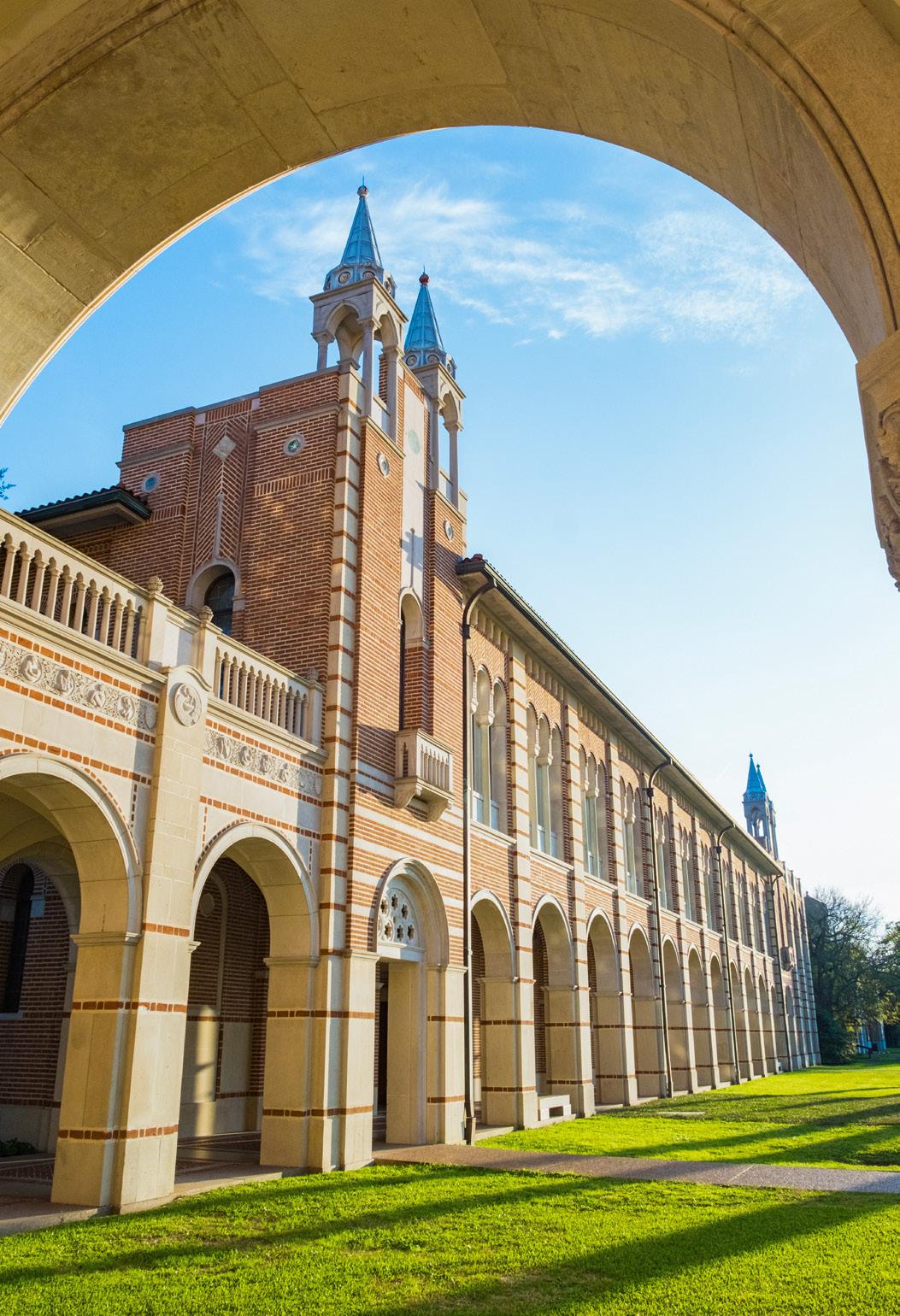
Anzilla Gilmore shares two pieces of advice:
1. Never make the same mistake twice. “Try to learn from all of the people around you and recognize there’s a lot you can learn from their experiences.” 2. Be confident. “Recognize that even though you may be the only person that looks like you in a space, that makes you special. I have to remind myself that my very existence in some spaces makes me exceptional.”
Anzilla Gilmore reflects on her most prized projects throughout her dynamic career:
“When I was at the University of Houston, I enjoyed working on renovations to the Bauer College of Business. At Rice, the projects closest to my heart are the ones centered around housing and dining, where I get to work closely with students. One of my favorite projects was the renovation of the Baker College Commons, the first commons on campus that, after we finished, kind of looked like Hogwarts.”
“I don’t lead from the top. I want people to have a voice. I want to hear their perspectives and their impressions. You’d be surprised where the best ideas come from.”
Through those efforts and others, Gilmore wants to make sure that no one within her reach feels alone on their journey to success.
“My passion is supporting the next generation, and that also manifests in my role at Rice,” she explains. “There are a number of people in my department who don’t have degrees, or technical certifications. I encourage them by saying ‘You should get that degree or that certification or that training’ and assure them that the FEP department will support them.
“I also spend a lot of my time mentoring and developing programs to help people expand their network and connecting young people with individuals I’ve met in this profession,” she continues. “That passion comes from recognizing that I was the ‘only one’ that looked like me in many spaces. I don’t want anyone to believe they have to do this alone.”
An important part of that is tied to Gilmore’s commitment to diversity, equity, and inclusion within hiring, contracting, procurement, and departmental training. She and university leaders have important conversations with potential contractors about the makeup of their teams and whether they reflect the diversity of Rice’s student body.
“I want architecture students to see the teams we are hiring and recognize that Rice hires people
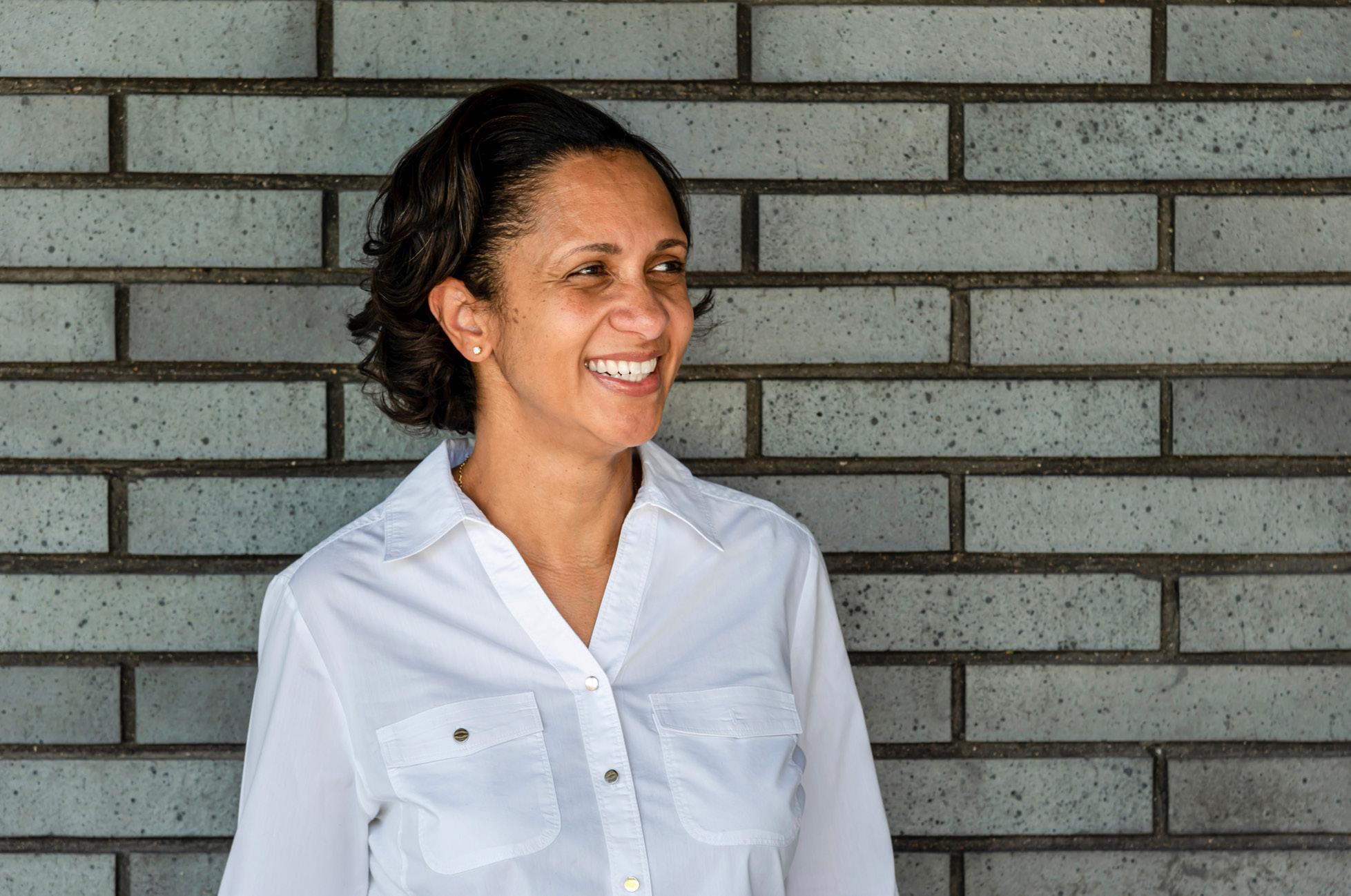
who look like them,” she says. “We’re having those conversations with our partners in advance saying, ‘Bring us diversity, bring us teams that look like our students.’”
In her role, Gilmore aspires to be a transformational leader who focuses on serving her team and believes that all levels of an organization are important in their own way—a philosophy that not only has empowered her 13 direct reports, but also is paving the way to captivating projects. The team is gearing up to work on two new colleges, an art building, and an engineering building while continuing to support Rice’s landscape and infrastructure.
“I don’t lead from the top,” she says. “I want people to have a voice. I want to hear their perspectives and their impressions. You’d be surprised where the best ideas come from.”
After graduating from Prairie View A&M University and the University of Texas at Arlington, Gilmore started her architecture career in traditional firms based in Dallas, Waco, and Houston. Those experiences informed her love for project management, which prompted her to step into a project manager role at the University of Houston in 2005. Two years later, she brought her expertise to Rice University, where she’s served in several roles, including senior project manager, director for project management, diversity and inclusion program director, and more.
For young professionals aspiring to follow in Gilmore’s footsteps, she advises: “Surround yourself with people who will lift you up. Surround yourself with people who will reinforce your worth and your capability and expose yourself to different experiences so you can continue to learn. Do everything you can to be as good as you can be.”
Bryant Construction is proud to have worked alongside Anzi in her tireless pursuit toward improving the Rice University campus and facilities. As a leader of the Rice University facilities, engineering, and planning department, her involvement in the new construction, renovation, and upscaling of the campus has helped countless future leaders and innovators in not just Houston, but the world. We are excited to continue working alongside Anzi as she continues to shape the future.
B. Bell Builders has had the honor of working with Rice University for over a decade, constructing laboratories, classrooms, and renovating buildings on campus. We are proud to be a part of Rice’s history and to have helped them create spaces that foster growth and learning. We appreciate the trust they have placed in us, and we are committed to continuing our strong partnership for years to come. It’s partnerships like this that enable us to deliver innovative construction solutions while maintaining exceptional quality standards.
How Kerrie Romanow is helping the City of San José become a national leader with ambitious climate goals and actions
By Noah Johnson
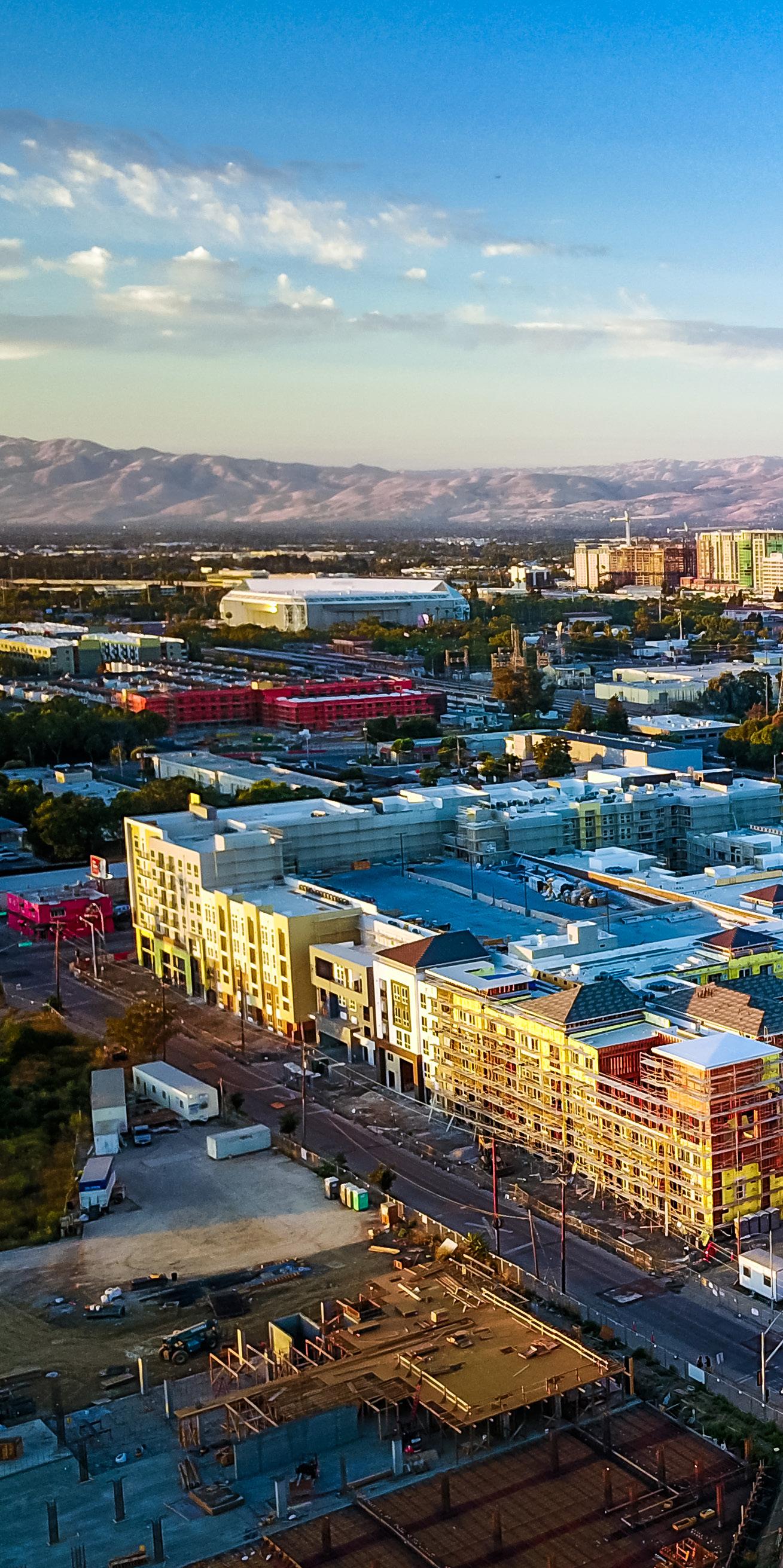

A few years ago, Kerrie Romanow brought a resolution before the San José City Council, calling for the city to accelerate its climate efforts and to go carbon neutral by 2030.
It was as California saw some of the largest wildfires it had seen in its history, destroying thousands of structures and affecting the health of millions with toxic smoke. It was also as the Intergovernmental Panel on Climate Change continued to sound off on rising global temperatures spurred by human-caused warming.
While San José had already set itself apart from other cities with its aggressive climate actions, Romanow knew the city needed to do more to get in front of the troubling future being foretold by the world’s leading experts.
“The reports from international research firms have been saying that things are getting worse, not better, so what the world is currently doing is inadequate,” says Romanow, the city’s chief sustainability officer. “The resolution was really just saying to our council that, as a city, we need to step up and to not only do it better but faster. As we figure out how to do it, the smaller cities can also adopt those practices. Part of us forging a path makes it so others can do the same thing.”
The resolution was unanimously approved, making San José the largest city in the US to adopt such a commitment. To reach carbon neutrality, which is having net-zero greenhouse gas emissions in a given year, Romanow and her team are focused on helping the city reduce greenhouse gas emissions in three key areas: buildings, transportation and power sources, with the first two making up about 85 percent of the city’s emissions.
“It’s really rewarding to see how people are collectively saying, ‘We need to step up and play our part,’” she says. “I’m gratified to hear a lot of positive input from all parts of our community. It’s not just the people who can afford to do it who think it’s a great idea.”
So far, the city has required new all-electric construction while providing education, training, and incentives to contractors and residents, so they can make energy-efficient improvements to existing buildings. It has been finding opportunities to invest in pedestrian infrastructure to make the city more bikeable and walkable. The city, which has the highest electric vehicle uptake in the country, has
“The reports from international research firms have been saying that things are getting worse, not better, so what the world is currently doing is inadequate.”
also offered various rebates and incentives to zeroemission vehicle drivers.
An important part of these efforts, Romanow says, has been partnering with different community groups, leaders, and members to prepare the workforce for the city’s all-electric transition.
“We’re training the future,” she says. “If we want to go to all electricity, we have to have a workforce that can install that new equipment and today, that workforce isn’t robust enough,” she says. “So, we’re doing workforce development because we know those jobs will be there, so our focus will be on helping folks transition to new employment or helping youth understand that it will be a great job market.
“We’re starting with incentives and education, and building the workforce,” she continues, “so by the time we actually have a volume of work we actually will be able to support it.”
Prior to her current role, Romanow worked at an environmental regulatory agency, at a private
Kerrie Romanow Chief Sustainability Officer

semi-conductor company, and as a consultant—experiences that helped prepare her spearhead the city’s innovate climate strategies today.
“All of those things created a nice basis for my work in the public sector because as I’m talking to business and regulators, I have a good appreciation for both perspectives,” she explains. “I’ve been putting those together to help create policies that get us to the goal but in a cost-effective way.”
As a leader, Romanow believes her team can always do more than it thinks it can. She prides herself on both “stretching them and putting confidence in them.”
“I have a very diverse team with a lot of opinions, generations, races, and genders, and those differences help create dynamic conversations and plans,” she says. “I like to play to their strengths and push their limits. If you’re not making a mistake here and there, you’re probably not pushing yourself. We don’t worry too much about mistakes; we just worry about moving forward.”
Three steps San José is taking to address climate change
1. Forming the city-wide Climate Advisory Commission in 2023
2. Electrifying homes to lower greenhouse gas emissions
3. Prohibiting natural gas infrastructure in new construction
Four of San José’s net neutrality strategies
1. Move to zero emission vehicles and accelerate the shift to electric vehicles
2. Reduce vehicular travel miles by 20 percent by encouraging walking, biking, and public transit
3. Switch and reduce fossil-fueled appliances by encouraging upgrades to electric appliances
4. Power community with 100 percent carbon-neutral electricity

San Jose Water continues to focus on sustainable solutions, employ innovative technologies, and provide steadfast environmental leadership to ensure that future generations have access to clean water and a healthy environment — just as our founders envisioned 150 years ago.

Nicole Reese believes that she and her team at Intuitive Health have the power to design and build facilities that make a difference in a patient’s life. The strength of that belief stems from a personal experience: she was diagnosed with cancer in 2021. Reese found herself sitting in cancer centers that she helped design, pondering the elements that worked well and the ones that didn’t.
“You have to go through chemo, and you sit in one spot for usually six to eight hours, so it’s about making that space feel as comfortable and welcoming as possible,” says Reese, who spent her career building residential homes, strip malls, and banks as well as leading projects for hospitals.
That experience continues to influence the way she approaches her role as director of planning, design, and construction at Intuitive Health, where she spearheads the construction of facilities that house urgent care and emergency room treatment options under one roof. The facilities connect patients to the appropriate care with the right prices.
“Right now, if you get sick or break a bone, you need to make a decision to go to urgent care or go to the ER. But if you go to the ER and you really needed urgent care, they’ll treat you but will charge you expensive ER prices,” she explains. “At our facilities, you can come no matter what the symptom is; we’ll triage you and say, ‘You’re an urgent care patient, so go here and get charged urgent care prices.’ Patients shouldn’t have to pay or go to the hospital if they don’t need to.”
Building those cutting-edge facilities has prompted Reese to work with partners who allow her to focus on the company’s patient-centered vision. One of those partners is Beltmann Integrated Logistics, a nationwide provider of distribution, transportation, installation, and project management.
“Beltmann’s services have been a stress reliever on a number of projects,” she says. “I can send everything to them to be inventoried, and they’ll bring it to my site. It’s a huge time-saver, and they save me a lot of nit-picking.”
As Intuitive Health’s director of planning, design, and construction, Nicole Reese knows from personal experience the power that facilities design can have on treatment
By Noah Johnson
At the core of Reese’s work today and throughout her decades-long career are deep needs to build things and to help people. The latter need has driven her to be a mentor to young construction professionals, especially women who wish to thrive in the male-dominated industry. In her role, she finds ways to give them experience and the confidence to work among their male counterparts.
“Women in the industry sometimes question their abilities, and it’s hard for them to stretch into that next role,” she says. “But women have to learn to be thick-skinned and to walk the walk and talk the talk. You have to be able to relate with the people you work with and talk to them on their level.”
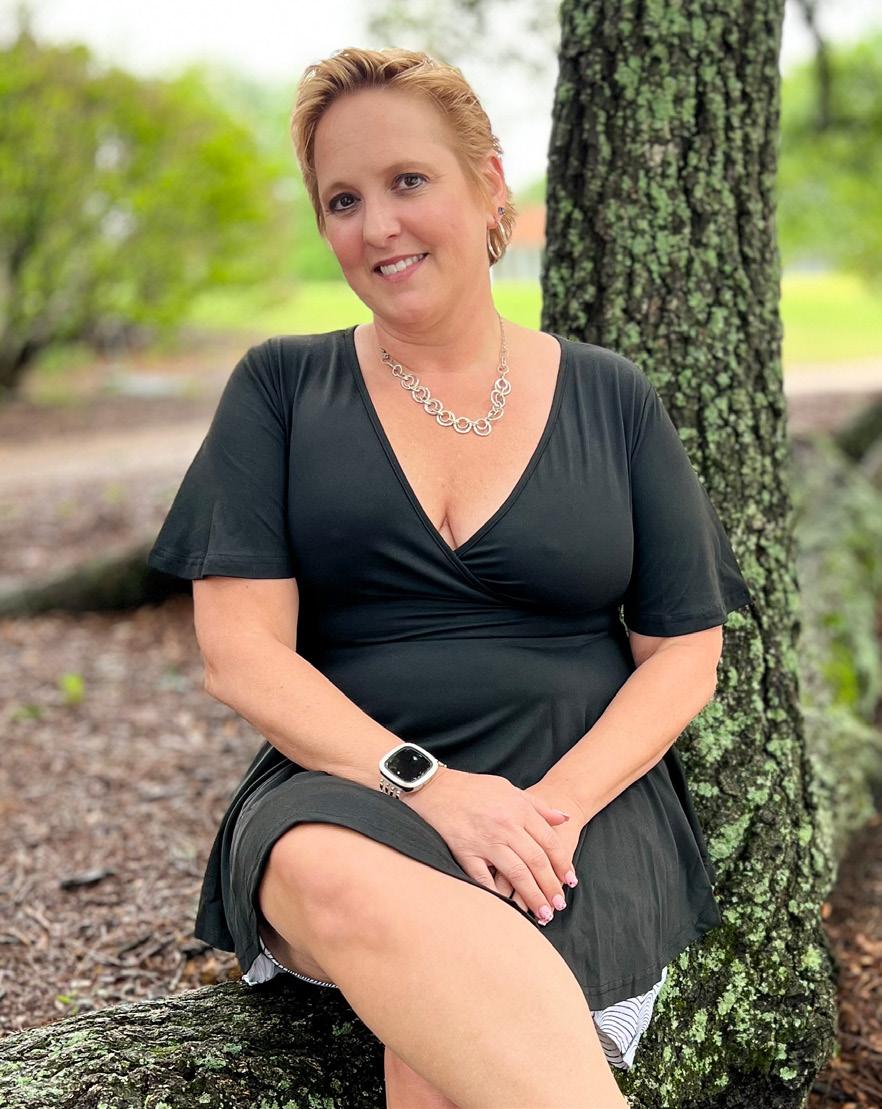
It’s a surprise to hear that Reese didn’t grow up wanting to work in construction, judging from her career success. Her interest started with side projects around the house and taking her son to open houses on Sundays to admire the architecture. When it came time to find a career, she wasn’t too sure what she wanted to pursue. Her husband suggested that she try working with a general contractor. She gave it a try.
“It started out with just simple stuff like framing and painting and whatever they needed, just to help out as a laborer, and I picked it up pretty quickly,” she says. “I liked being able to see a product and go, ‘I did that.’”
Reese quickly rose the ranks, prompting her to go back to school to get a degree in architecture from Florida Agricultural and Mechanical University. She went on to create her own construction company and then her own architecture firm until 2008, amid an economic crisis that hit the industry hard. The crisis didn’t stop her from finding other opportunities, though.
For the next two years, she worked as a project architect at the McCarty Company before making her way to Cookie Douglass Farr Lemons Architects and Engineers from 2011 to 2013. The next few years saw her take on leadership roles in the healthcare industry at the University of Mississippi Medical Center, ERDMAN, and McKesson.
Reese says each chapter of her career journey gave her an opportunity to be able to relate to every level of a construction organization. “There’s different levels of people. There are laborers, CEOs, and everywhere in between,” she explains. “Being one of the people out on the construction field and in the office, I understand how they think [and] how to relate to them on their level.”


Beltmann Integrated Logistics congratulates Nicole Reese and Intuitive Health on another successful project. Nicole Reese’s leadership on multiple successful projects that have been inclusive of Beltmann Integrated Logistics’ services, has proven that leadership is an essential part to any successful program or initiative. Beltmann Integrated Logistics has been fortunate to work with Intuitive Health on multiple medical equipment deployment projects involving transportation, warehousing, assembly/installation, and final placement for room readiness.
Lakshan Gunaratne draws on over 30 years of experience in New York City’s most luxurious hotels as the longest standing director of engineering at the Standard Hotels
By Claire Redden
“All throughout my life, all I ever heard was, ‘engineer,’ ‘engineer,’ ‘engineer’—never actually knowing what the word meant,” reflects Lakshan Gunaratne, who has been the director of engineering at the Standard Hotels for eight years running.
Born in a family of engineers on his mother’s side, Gunaratne inherited the natural skill and curiosity of the trade—even if he may not have realized it. “Since I was a kid, I was always fixing things. Even in school, I took anything that had to do with working with my hands,” he says.
It was in high school when the idea of becoming an engineer was set in his mind, and, without having any clue about what kind of engineer he wanted to be, Gunaratne enrolled himself at City Tech, New York City’s College of Technology. From the time he got his degree to his roles at Richmond Furnace Air Conditioning and Refrigeration, a nursing home on Staten Island, and New York Yacht Club, Gunaratne’s career slowly evolved into hospitality.
“I got my licensing and my certifications, and, within five years at the yacht club, I became assistant chief and then the chief engineer. From there, I left and became the director of engineering for the Maritime Hotel—that’s when I really got into the hotel industry,” Gunaratne explains.
Standing at 363 West 16th Street in New York City’s Meatpacking District, the Maritime Hotel provided Gunaratne with a view of what was then hotelier André
Balazs’s flagship operation for the Standard Hotel. “I used to go onto the roof and watch this monster building come up,” he recalls. “One day, I went on a walk with my family under the Highland, which is underneath the Standard Hotel, and I was telling them, I said, ‘One day I would love to work there.’”
Sure enough, that opportunity would come, but it wouldn’t materialize until later. However, Gunaratne continued working as usual, building a reputation for himself along the way.
“People talked, and I had created a name for myself. Not only did I work for all the top-notch hotels and high-end clubs, but I wasn’t afraid to get my hands dirty,” he says. “I wore a suit and tie, but I talked the talk and walked the walk.” Evidently, the people at the Standard Hotels had heard and called to see him in 2015. Only, this time, their meeting would be quite different.
“They didn’t even want to see my résumé. They interviewed me within three days. They said, ‘You have seven days to decide. We want you, and we don’t care how much you’re looking for,’” he recalls. “[In March 2023], I’ll have been here eight years. Before I got here, they had close to eight different directors in and out. I’m the only one that stayed this long, so I must be doing something right.”
However, the buildings Gunaratne works on have been at the Standard quite a bit longer than he has. At roughly 16 years old, many of his current projects involve building renovations, both in the structural and environmental sense.
In accordance with New York City’s Local Law 97, eyes are on the Standard Hotels to cut its buildings’ emissions, and it’s up to Gunaratne to make it happen before 2025. But, on top of installing energy-efficient
mechanics and day-to-day repairs, the Standard Hotels is also expanding.
From Miami, London, Ibiza, and the Maldives, Gunaratne’s to-do list gets longer with each of the hotel’s locations. But, when it comes to successfully managing the big picture projects in conjunction with hospitality’s day-to-day operations, the director of engineering claims that it all comes down to his experience.
“My guys are like my family, and I treat them like my family. If anything goes wrong, you have to maintain a level of respect and technique—and that’s how I supervise, because I understand,” Gunaratne says. “I didn’t automatically get to this position; it took hard work. But, if you haven’t gotten into the mud and don’t understand what it feels like, it’s very hard to lead somebody else through it.”

























Right Now. Right Tomorrow.
We'll meet you where you are - achieving your building or project-speci c goalsby creating energy e cient indoor environments that deliver desired outcomes.
www.trane.com


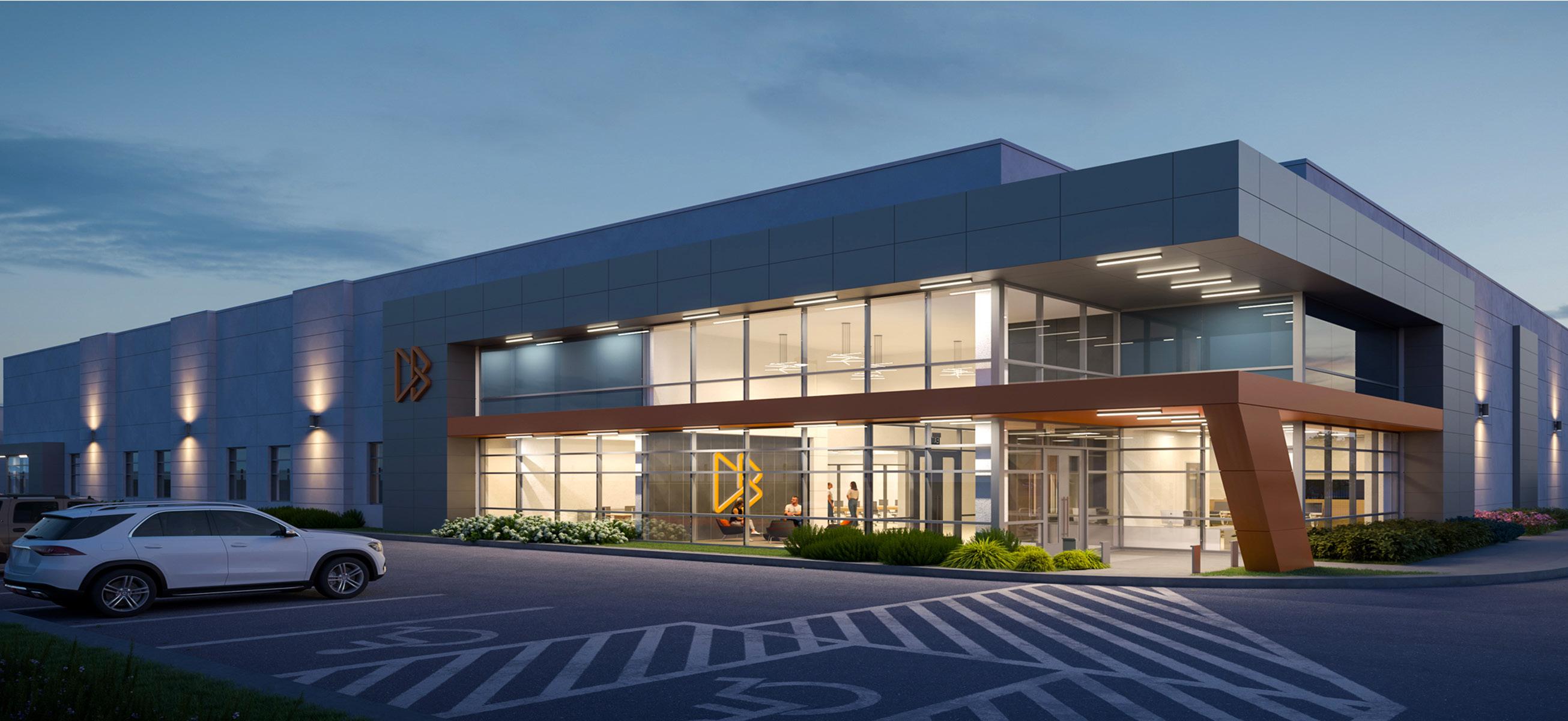
Tony Qorri draws lessons from his basketball career to lead his construction team at DataBank
By Noah Johnson

◀ The DataBank MSP3 facility is the first on its new Brooklyn Park, Minnesota, campus that opened in 2021.
As a former athlete who played basketball all over the world, Tony Qorri can’t help but to approach his job at DataBank like the sport. When the vice president of construction talks about how he runs procurement, supply chain, and construction, he sounds like a seasoned vet who has a passion for setting his teammates up for good shots and doing the intangible things that may not appear on a stat sheet.
“I was always captain of my teams, but I was also a role player and it’s the same in the workforce,” he says. “I’m driving the guys, pushing the guys, leading them, but I’m also there for them. If they need me to go on-site to one of our locations, I’m flying out there and helping them. We got each other’s back.”
That collaborative culture and mindset has allowed Qorri and his team to apply a full-court press to DataBank’s expansion and capacity goals amid rapid growth that has been driven by several acquisitions. Recently, the company completed the expansion of a data center in Irvine, California, adding 24,000 square feet of raised floor space and 4 megawatts of capacity, with the company’s Las Vegas and San Diego data centers seeing a similar fate.
The construction team also completed the company’s Atlanta ATL3 facility, which touts 72,000 square feet of raised floor space; 44,000 square feet of white space; and 6 megawatts of additional capacity. That success continued throughout 2023 with new and expanded data centers planned for Salt Lake City, Atlanta, Denver, and New York City, financed by a $350 million credit facility.
“I tell them, ‘Hey, you got your own style, and you got your own approach.’ . . . Everyone can be themselves, enjoy their jobs, and we just collaborate whenever there’s issues.”

Qorri’s secret to building cutting-edge data centers is similar to the lessons he learned on the hardwood. He maintains a constant drive to improve himself as a team player, eyeing new ways to collaborate, structure his team, track costs, and simplify operations. He also knows his personnel and leverages his team’s strengths by empowering his people to be themselves.
“I don’t go and say, ‘This is how you’re supposed to do things,’” he explains. “I tell them, ‘Hey, you got your own style, and you got your own approach.’ If you feel you need to travel every week and be on the job, then you got to do it. If you feel like you can do it from home and still manage your contractors, so be it. Everyone can be themselves, enjoy their jobs, and we just collaborate whenever there’s issues.”
“I like to pay attention to what my guys are saying, I like to adapt to what they are saying, and I like to be flexible. I don’t want to get stuck in my ways.”
Qorri didn’t always plan on being the leader he is today. After playing basketball overseas, he was vacationing in New York one summer when he ran into a cousin who had friends in the construction industry. Connecting with them motivated Qorri to move to New York to work for a general contracting firm. He started working doing mission-critical work in data centers for enterprise banks and found it intriguing.
“I thought it was really challenging, and I became passionate about the work like it was a sport,” he says.
Beyond finding his new passion, he learned about data center infrastructure and managing relationships with clients and other project stakeholders. As time and his responsibilities progressed, he took a job with one of his clients, zColo, as a director of construction, rounding out his general contracting expertise with the leadership role. In 2020, the company was acquired by DataBank and Qorri was promoted to his current role as the company began to rapidly scale.
“It’s been a bit of a rush,” he says. “It was cool to see how we went from busy to crazy busy. We’re putting 300,000-square-foot buildings in the ground in record time and putting our head down, trying to manage the
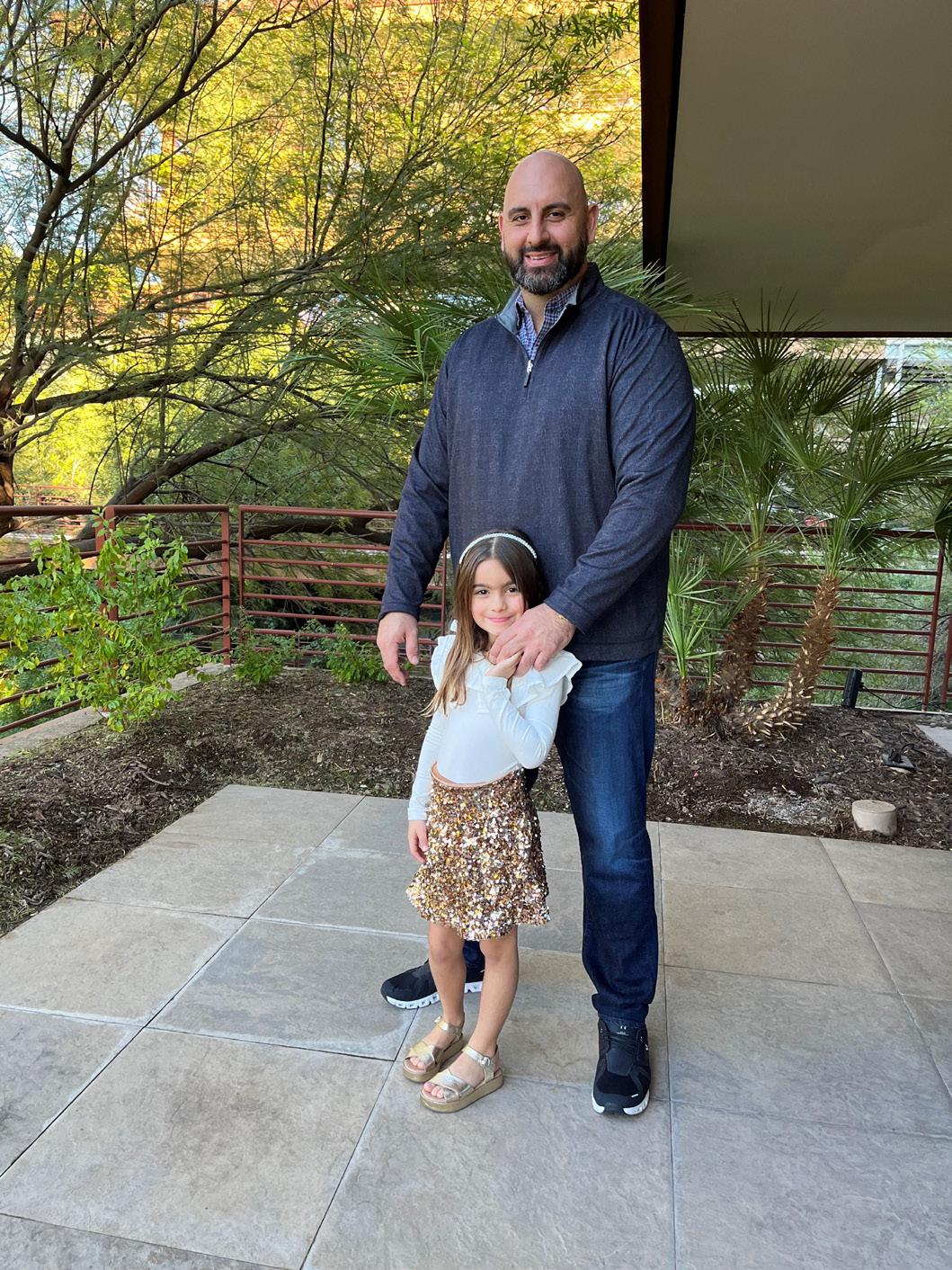
20 to 30 projects we’re working on. It’s been quite the ride.”
With that kind of growth comes growing pains, which are further complicated by persistent supply chain and labor issues. Navigating those challenges has required Qorri and his team to stock more equipment, uphold consistent design standards, and make more strategic decisions about who they choose to work on projects.
“Over the next year, as we continue to grow, my team will continue to grow and we’ll be simplifying how we’re approaching things,” he says. “One of the biggest goals I have is to be less engulfed in the trenches and to give my guys the keys to the car.”
If other construction leaders want to see the kind of success Qorri has seen, they should listen and pay attention to the people on their team.
“A lot of people who are running a team have their own way—they’re leaders because they have their way and their way works,” he says. “But I like to pay attention to what my guys are saying, I like to adapt to what they are saying, and I like to be flexible. I don’t want to get stuck in my ways.”
For over 50 years, Bud Griffin & Associates has been recognized as an industry leader with innovative technology and support solutions for our customers throughout the southwest including Texas and Arizona.
As a Local Vertiv Office (LVO), we offer a comprehensive range of critical solutions including power, thermal, and infrastructure management to achieve results that matter most to you.
Whether you need UPS units, large room cooling, or edge solutions, we’ll help maximize availability, enhance performance, and reduce downtime.
For more information visit bgasales.com
GCON Inc. is a nationwide, full-service construction management company, forging solid relationships with clients through proven performance. Our unwavering commitment to integrity, quality, and safety, combined with our ability to exceed client expectations, has resulted in our continued upward trend in growth over the past 20 years. GCON has experienced remarkable success across several industries, proving our ability to transition between market segments and build our portfolio consisting of an array of projects from small tenant improvements and large retail space to hightech developments and healthcare facilities. At GCON, we prioritize building long-lasting relationships with our clients, staff, vendors, and communities.
Texas AirSystems is proud to partner with Tony Qorri and the DataBank team to deliver reliable, efficient, and sustainable cooling solutions for DataBank’s data centers. As an independent manufacturer’s representative, Texas AirSystems represents over 60 manufacturers of HVAC equipment and supports customers located across Texas and the United States through their National Account Program. In addition to distributing HVAC equipment, Texas AirSystems has an experienced team of factory-trained service technicians providing start-up assistance, system commissioning, and warranty service. For more information regarding HVAC equipment and solutions, contact Brian Miller, account executive, at brian.miller@texasairsystems.com or call (972) 652-3138.



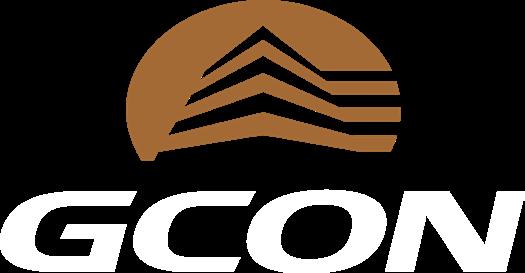



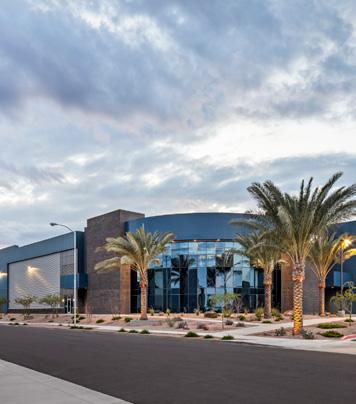
By Noah Johnson
In the aftermath of the Watts Rebellion of 1965, and the nationwide racial reckoning that ensued, California Governor Pat Brown and other leaders recognized that a college location in the city of Carson would be an accessible option for minorities living nearby to pursue an education. That location would become home to California State University, Dominguez Hills, which has held true to that mission ever since, primarily serving underrepresented students seeking academic achievement and preparation for the workforce.
Today, leaders are looking to broaden the university’s impact on student experiences as it transitions from a commuter campus to a residential campus. As the associate vice president of facilities planning, design, and construction, Yancey Modesto is at the forefront of those efforts. Since stepping into the role in 2023, he has helped spearhead projects to upgrade old sites and build new ones for campus community members—all fueled by a need to serve university students.
“The diversity of this campus is remarkable compared to other campuses throughout the nation,” he says. “Being part of these developments and seeing how impactful we are to nearby communities is rewarding enough. But if you attend graduations, you see tons of families with first-generation graduates and that’s just another motivation to continue the work we’re doing.”
That work includes completing design plans for a new student Health and Wellness Recreation Center; renovating a science building for a new function; and an expansion of university utilities to support new infrastructure at California State University, Los Angeles (Cal State LA).
His work at Cal State LA also includes beefing up the university’s student housing stock through a 1,500-bedroom facility as a supplement to 2 other housing projects completed in the past few years. Prior to these developments, the university hadn’t built a housing complex since the 1980s for the Olympics. Modesto is excited to see how these additions will address student needs.
“Our shift from being a commuter campus to a residential campus is bringing a lot of amenities and is changing the character and use of space not just during regular school hours, but after hours, because now we have a larger student population staying on campus. We’re investing in these things to support the students and to make sure it’s a full campus life experience for them.”
Before his role at Dominguez Hills, Modesto started his career with a decade of architecture and design experiences. While he enjoyed working on different building structures, he went on to give campus planning a shot in order to diversify his projects.
“On a campus, it’s like a small city you’re part of in the design and construction process. Being able to

2001: Intern Architect at Ziegler Cooper Architects
2002: Intern Architect at Gabriel Architects
2005: Junior Project Manager at Lerner, Ladds, and Bartels
2010: Designer/Researcher at Gauche Concepts and Visiting Critic for Architecture
work on the variety of projects that comes with that is really amazing,” he says.
Modesto took on his first campus planning job as a developer at the University of South Carolina before becoming a university planner at the California State University Chancellor’s office and a director of planning, design, and construction at Cal State LA.
From those experiences, he witnessed how strong collaboration made for better projects and better working relationships.
“You have to be able to listen and understand what the needs are,” he says. “You can’t establish a solution if you don’t know what the problem is. That’s why when you’re doing this kind of work, you need to hear concerns and capture your colleagues’ needs as it relates to the spaces they’re working in.”
Modesto’s advice for young people seeking success is that “there’s no replacement for hard work.”
“When I first immigrated to this country from the Philippines, I would walk every day to different jobs for several weeks, offering my résumé and looking for work,” he recalls. “I’ve came a long way from that, and it makes me proud. It just shows that if you’re patient in pursuing what you want to be and where you want to be, you’ll get there. Also, when an opportunity opens up, don’t be afraid to give it a try.”
Design Studios at Rhode Island School of Design
2011: Project Manager at LLB Architects
2012: Campus Developer at the University of South Carolina
2018: University Planner at California State University, Office of the Chancellor
2019: Director of Planning, Design & Construction at California State University, Los Angeles
2023: Associate VP of Facilities Planning, Design & Construction at California State University, Dominguez Hills
Citadel CPM Inc. is a California corporation SBE headquartered in Los Angeles County that was established in 2006 to provide professional construction project management services to federal, state, and municipal agencies in the public works, justice, corrections, education, healthcare, infrastructure, and military market sectors. Our mission is to deliver construction projects successfully for our clients by meeting their projects’ budget, schedule, scope, and quality objectives without outstanding claims. Our vision is that Citadel will symbolize a team of reputable professionals that clients seek to help them manage their construction projects, and other professionals aspire to join.

Ryan Martin is a global builder who understands what it takes to build a strong, authentic culture at CoreLogic
By Billy Yost
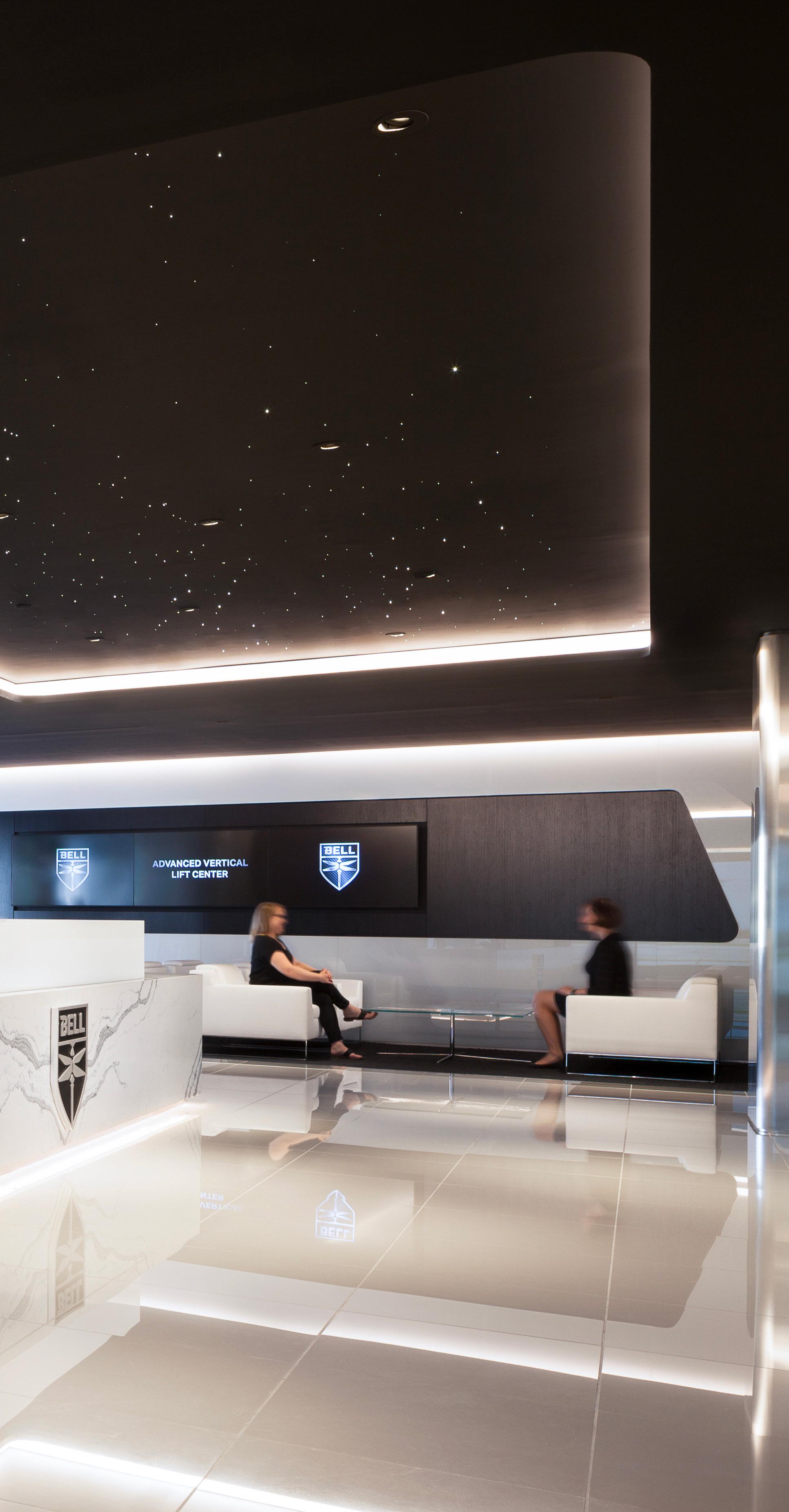
◀ Bell’s Advanced Vertical Lift Center features a wall containing 17 replicas of the V280 Valor’s rotor blade and a “starry night” light field in the ceiling.
There are occasional interviews you hope never end. It’s rare, but it happens. Ryan Martin is a force, even over the phone. You can almost feel him maneuver the world around him on the other end of the line.
The senior director of real estate and facilities management at CoreLogic is a mix of the comedic best friend with all the best lines, the grizzled yet optimistically sarcastic soldier who knows when to get real, and the big-hearted next-door neighbor who is always looking out for you, even if you don’t know it.
If that seems like a lot, imagine packing it into a 30-minute conversation. That’s Ryan Martin, whose very first real assignment at Bell Helicopter in 2013 was to build an office in Abu Dhabi.
“I went from zero to the Middle East in about 4.8 seconds,” Martin remembers. “It taught me a few things: my passion for travel, outfitting offices and interiors, and that when your employer buys you an international business-class ticket, you never ever want to travel any other way again.”
Prior to coming to CoreLogic in 2021, Martin already lived a builder’s dream career. He built in Tokyo, Mexico City, and Fort Lauderdale, Florida. He had an opportunity that most builders don’t get their entire careers: the chance to build where the budget wasn’t the primary concern.

“I was able to build a demonstration and technology center just south of the Pentagon in Arlington, Virginia,” Martin remembers. “It was fairly lavishly funded, and our architect won two ENR [Engineer News-Record] awards and it also won an IIDA [International Interior Design Association] award. The novelty of that project makes it pretty high on my list. That’s one of those projects that you know is a once-in-a-lifetime build.”
Now at CoreLogic, Martin is still putting in miles. At the time of speaking in May 2023, he was preparing for a trip to India to oversee the new office building activities in several cities.
“I’m not sure how 105 degrees and 80 percent humidity is going to treat my slightly overweight, middle-aged frame,” Martin delivers, deadpan. “But I’ve built here twice before, and this time the size of the project demands my being there. I’m excited to see some visual progress and plan on returning in the third or fourth quarter when finishes are being installed.”
After such a long tenure at Bell, one might find it difficult to believe that Martin has been able to get to work so quickly. However, he credits the culture at Core-
▲ Half of the Advanced Vertical Lift Center is a demonstration center with virtual reality simulators and scale models.
“There is something special about this place. The culture was understandable long before I got to the nuts and bolts of the job. That’s what’s going to keep me here for the long haul.”
Logic, which appealed to him far before his job interview was completed.
“There is something special about this place,” Martin says. “The culture was understandable long before I got to the nuts and bolts of the job. That’s what’s going to keep me here for the long haul.”
Martin’s team of 17 handles around 800,000 square feet and is in the middle of working to rightsize a company that has grown exponentially through acquisitions.
In the modern work environment, less space is needed, so Martin’s team is tasked with making the correctly sized moves. It’s in process of subleasing the third floor of its largest campus which will significantly reduce square footage. Three additional office consolidations are in flight that will, when combined with the sublease activity, represent a substantial and real reduction in both square footage and overhead.
Martin’s innovation never fails to impress his partners. “We feel privileged to work with Ryan, who brings his passion and unwavering dedication to every real estate project,” says Brian Hetherington, vice chairman at Cushman & Wakefield. “Ryan possesses an unparalleled attention to detail and commitment to his stakeholders—both end user and management/ sponsor. Not to mention, he’s fun to work with! We value our continued partnership with Ryan and the broader CoreLogic team.”


When talking about the future of work, there’s an important detail to understand about Martin. It’s a trait his wife makes fun of him for.
“In the morning, my wife will just laugh because she’ll look up and I’m already dressed and ready to head out at 6:30,” he says. “I want to be there. I want to be part of the action.”
But Martin is also very realistic about the current state of work. He says the five-day work week is dead for the foreseeable future unless the company has enough name recognition and salary incentives to force employees to come in office.
So, how does Martin marry these two seemingly polar-opposite viewpoints? To him, it’s a much bigger question.
“It’s not about free kombucha and having an on-site gym trainer,” he says. “There has to be a critical mass of people who want to be there. I think one thing the pandemic uncovered is the shocking number of dysfunctional teams and mediocre leaders across many companies. The reality is, if your team
dynamic suffered before, why would you ever want to come back into the office?”
Martin believes that leaders need to be more selfaware of the kind of environments they’re creating for their people. No influx of bean bag chairs will cure a toxic team. For the real estate leader, that means focusing on trust and authenticity, and, as usual, Martin puts it best.
“I’m a fairy jovial, extroverted guy, and that’s not for everybody,” he says. “But as long as you are selfaware and authentic about who you are, I think that builds trust.”
Speaking of trust, Martin says his team operates with the understanding that its shared responsibility affects the entire organization. If someone in one of his 16 North America locations drops the ball, CoreLogic’s hybrid reporting structure will see the ripples all across the organization.
“Because of the team and people here, nobody wants to let anyone down,” he says. “Everybody knows that what we do reflects on everyone else on this team. I’m lucky to have such an amazing team.”


Reflections on 18 years of American Builders Quarterly in print

Socially Distanced Shoot
Bergdorf Goodman’s Mika RajaDell’Anno was photographed for the cover on the startlingly empty 5th Ave in New York City, hours before the city went into lockdown at the very start of the 2020 COVID-19 pandemic.
Some Assembly Required
The Automation Issue featured a working robotic arm built and shot by photographer Cass Davis. It’s the personal favorite cover of Managing Editor Melaina K. de la Cruz.
Where It All Began
ABQ’s legacy started with Beverly Raphael, CEO of RCC Associates, whose story was the very first feature back in 2006.




Moments of Glory
ABQ has won 8 awards from the Society of Publication Designers, FOLIO, and ACES: The Society of Editors for its photography, designs, and headlines.


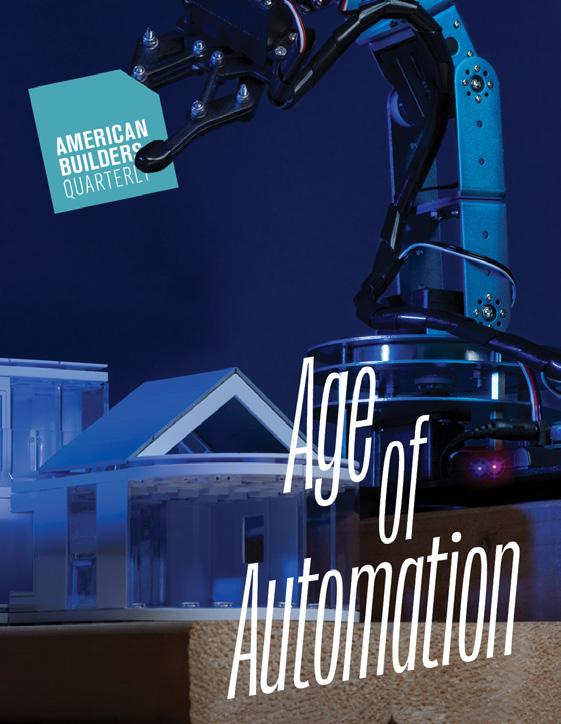


The Biggest Issue With LA Family Housing’s Stephanie Klasky-Gamer on the cover, it contained 2 feature sections and 43 stories across 242 pages.

